Planning an 11-day Ireland itinerary can be a pain in the backside… So, we’ve done all of the hard work for you!
We’ve spent 25+ years travelling around Ireland and the itinerary below leans on that experience and the many mistakes we made along the way!
In a nutshell, this 11-day itinerary:
- Starts and ends in Cork
- Has been meticulously planned for those only using public transport
- Has an hour-by-hour itinerary for each day to save you time/hassle
- Follows logical routes that take you to hidden gems, tourist favourites and great pubs and restaurants
Who this itinerary will suit

Now, before you scroll down, take 10 seconds to look at the graphic above – each of our road trip itineraries have been tailored to specific needs.
This road trip is specifically for those of you:
- Starting in/near Cork
- Using public transport and organised tours
- Looking to explore at a fast pace
- With a low level of fitness (i.e. it avoids long walks and hikes)
- Remember, we have hundreds of different itineraries here if this one doesn’t suit you.
An overview of this itinerary
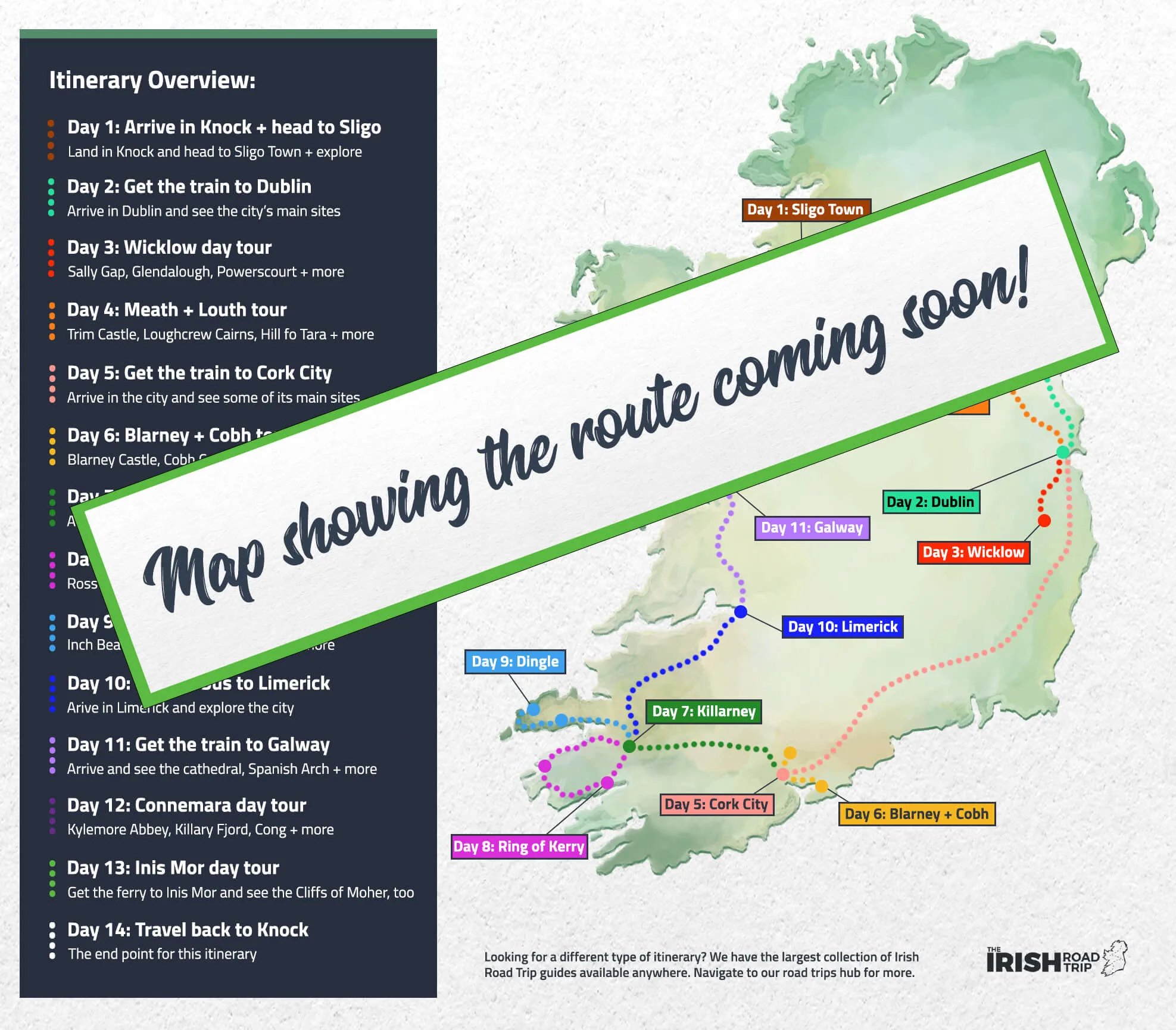
The map above gives you a very high-level overview of where this route will take you.
It uses several bases (e.g. Cork for 4 nights) and provides you with day-long road trips you can head off on, so you avoid having to change accommodation constantly.
Now, I’ll stop rambling on – here’s a day-by-day insight into each of the days below!
Day 1: Cork City
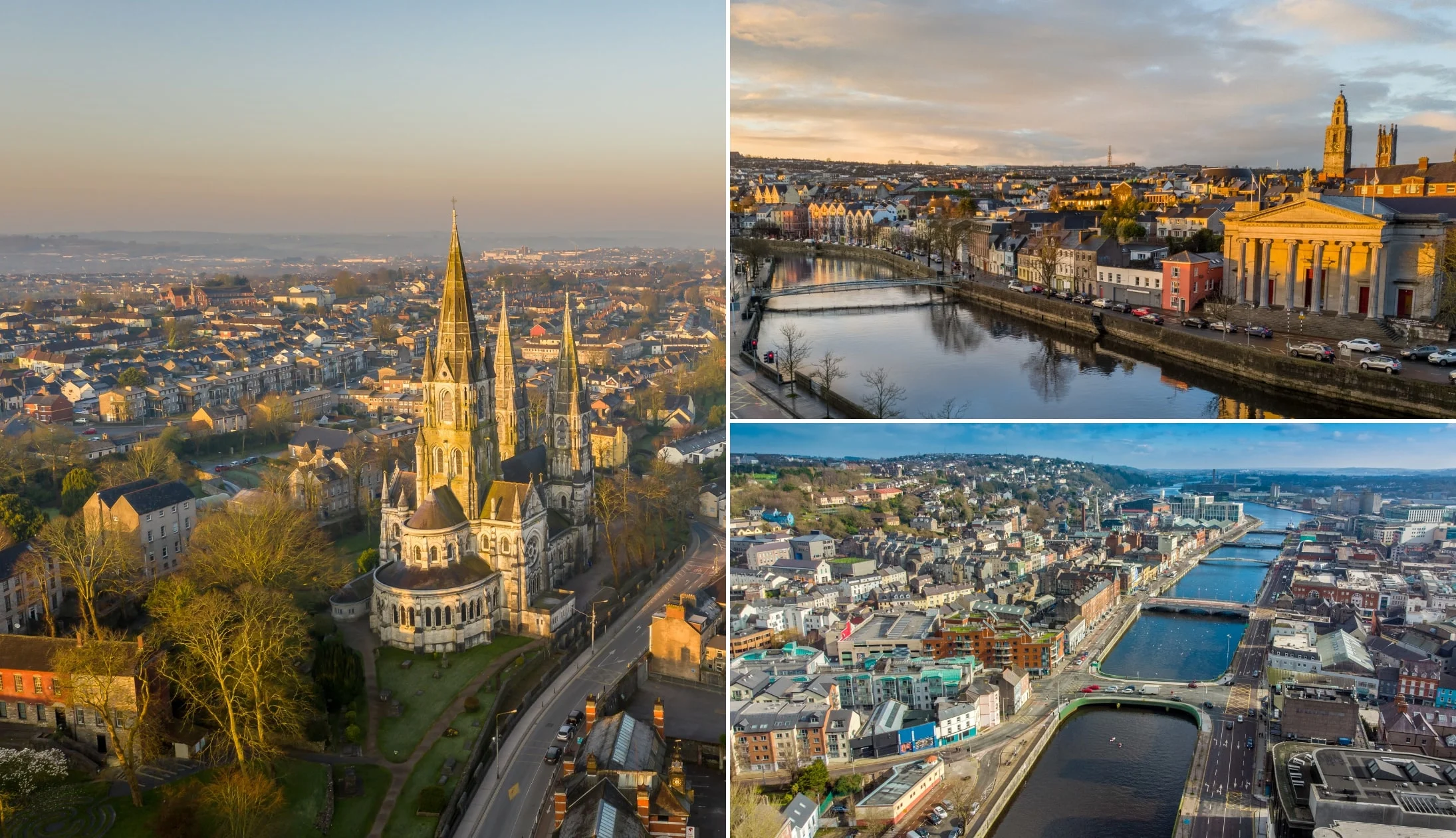
Photos via Shutterstock
Welcome to Ireland! Today, you’ve touched down in Cork City, ready to start your 11-day adventure.
You’ll be spending three nights in Cork City, and we’re going to assume that you arrived in the afternoon, so get ready for an afternoon’s worth of activities on your first day.
Recommended accommodation in Cork City
- Budget: Sheilas Tourist Hostel (no-fuss hostel near the train station) + Redclyffe Guesthouse (nice and central with great reviews)
- Mid-range: The Metropole (central with superb reviews) and Hotel Isaacs (in the Victorian Quarter – top-notch rooms and reviews)
- Luxury: Imperial Hotel (stunning and very central hotel) and Hayfield Manor (beautiful, boutique, city centre 5-star)
Stop 1: Getting from the airport to the city
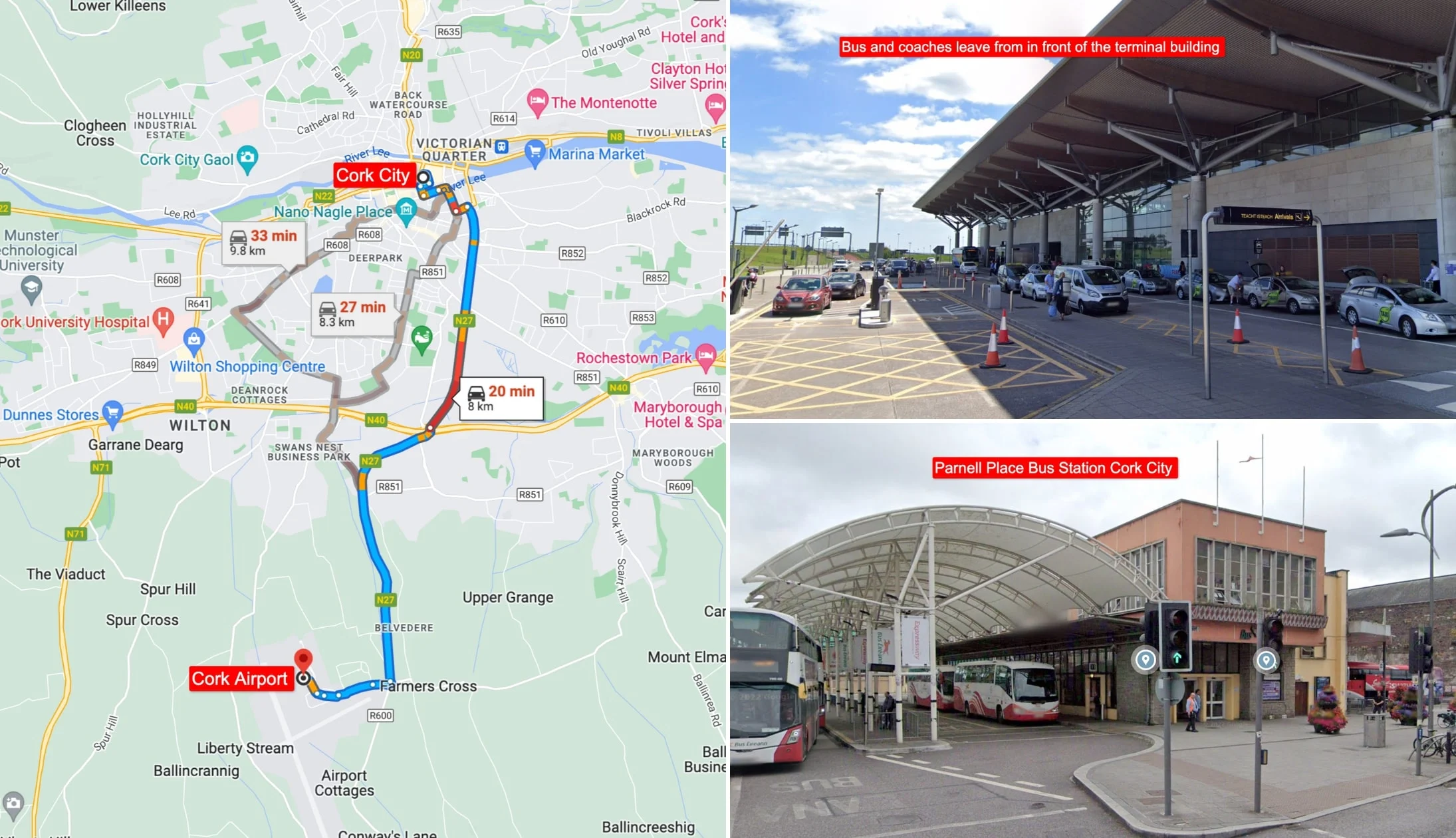
Photos via Google Maps
We have outlined your two options for getting from the airport to the city below.
Option 1: Bus
If you want to take public transport, the 225, 226 and 236 will get you from the airport to the city centre. We’d recommend that you book your tickets in advance.
Option 2: Taxi
A taxi from the airport to the city centre costs around €20. There is a taxi rank right outside of the airport where you can hire a taxi, as well as information inside the airport if you need to call one.
Stop 2: Lunch
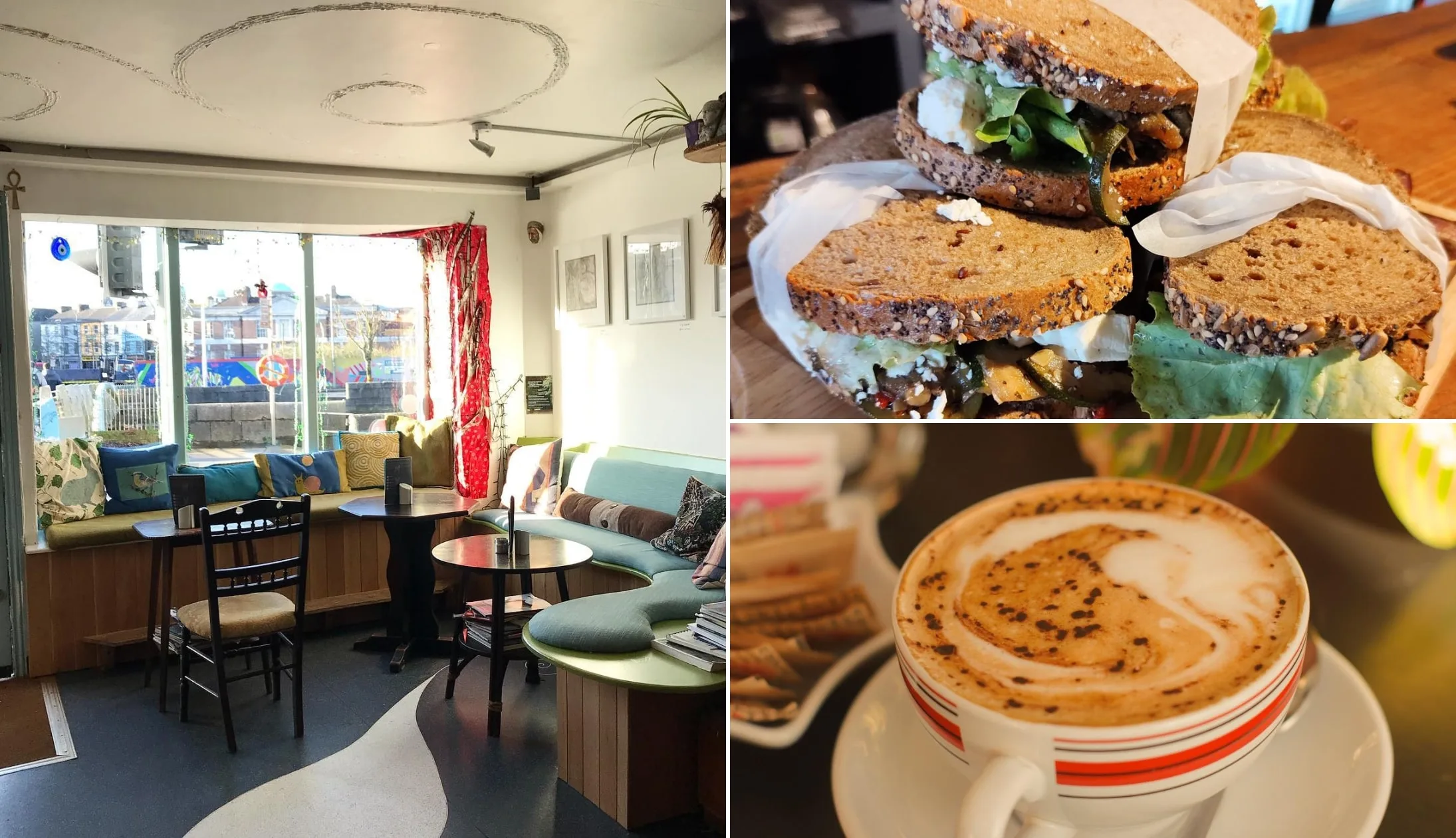
Photos via Myo Cafe on FB
Walk over to the Cornmarket for lunch. But be mindful that you’ll be heading to the English Market soon (another foodie destination), so don’t fill up too much!
We recommend popping into Bodega for delicious pub grub or the Cornstore if you’re after something a little more upmarket.
Stop 3: Shandon Bell Tower
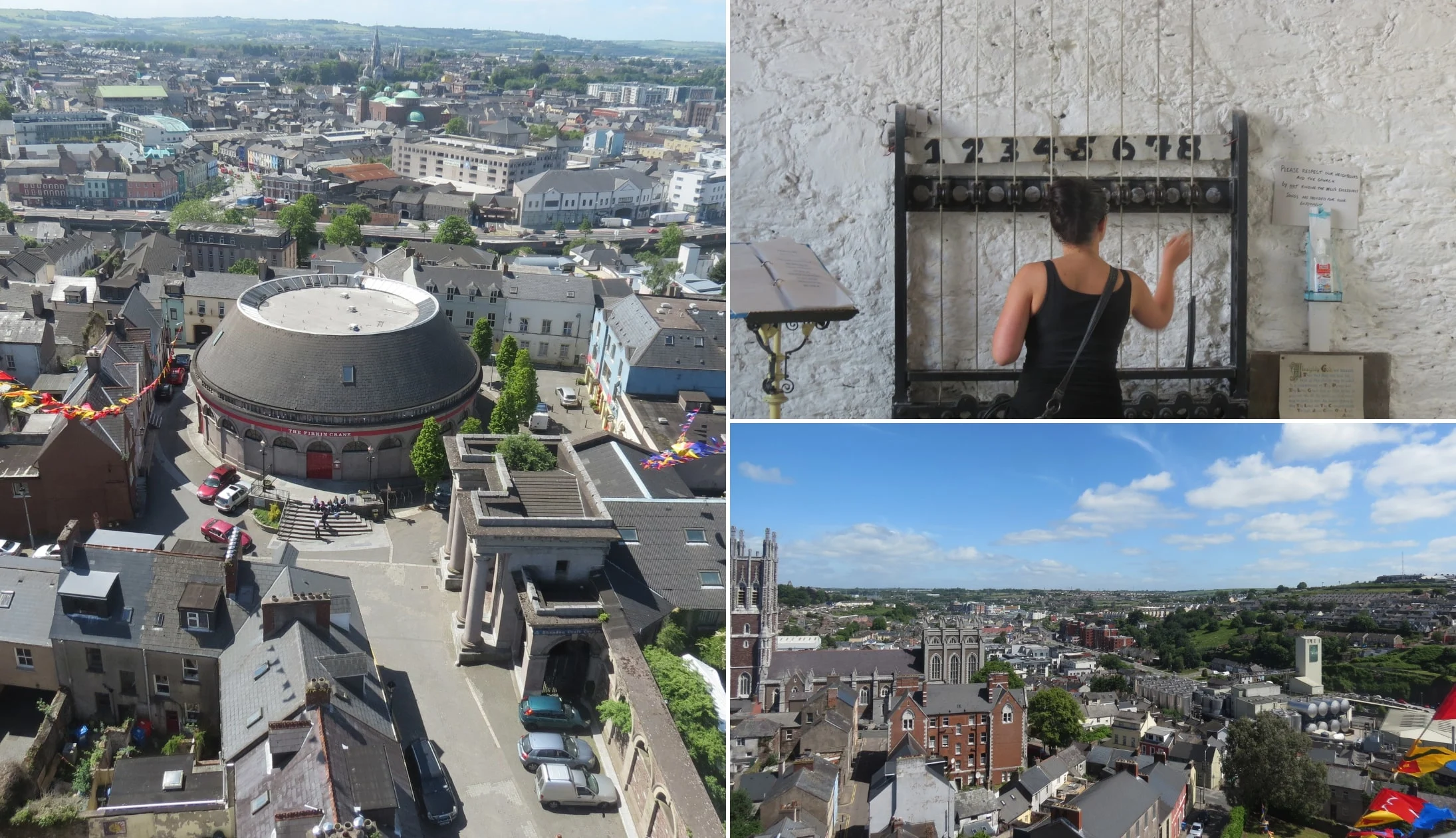
Photos courtesy Catherine Crowley via Tourism Ireland
Shandon Bell Tower is an iconic landmark in Cork City and a must-visit attraction about 10 minutes from the city centre.
The tower is a part of the Church of St. Anne, which was built in 1722. The church was built to replace an old church on the same site that was destroyed during the Seige of Cork in 1690.
You’ll need to pay a small fee to get to the top of the tower, but from the top, you’ll have wonderful views of the city, and you’ll be able to ring the bells!
Stop 4: The English Market
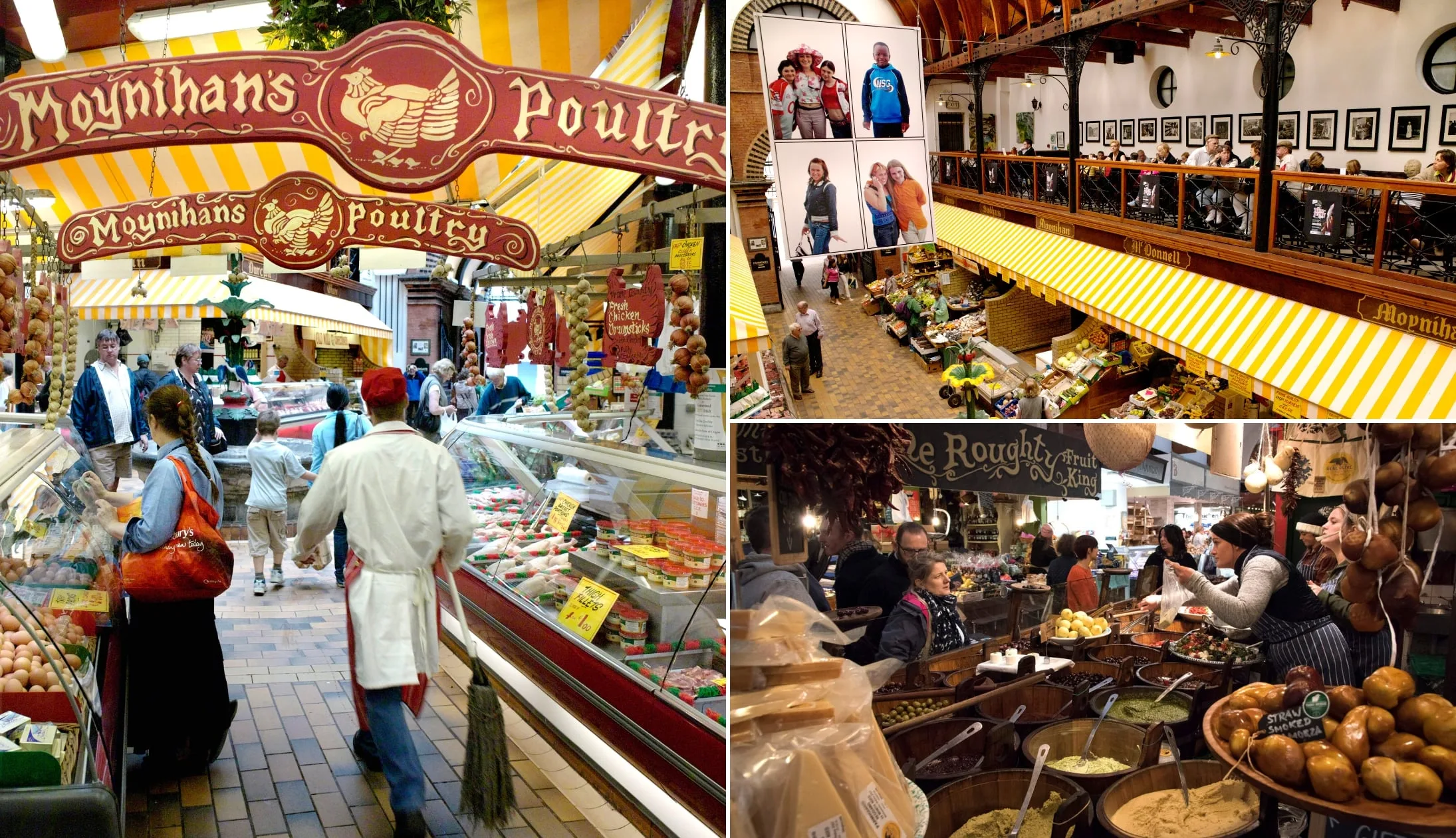
Photos by Chris Hill via Tourism Ireland
The English Market is 11 minutes away from Shandon Bell Tower. It’s a beautiful covered market with impressive mid-19th-century architecture.
Its name, “English Market”, was to help distinguish it from the Cornmarket, formerly known as the “Irish Market”.
The market dates back to 1788, making it one of the oldest covered markets in Europe. Aside from its history and beautiful architecture, the English Market is known for its delicious food, and you can get everything from artisanal olives to homemade jams.
Stop 5: Elizabeth Fort

Once you’re finished perusing the market, walk the 10 minutes over to Elizabeth Fort. The star-shaped fort dates back to the 17th century and currently sits off Barrack Street in Cork City.
The fort was originally on high ground, but over the years, the city has built up around it, although it still has fantastic views over Cork.
General admission is free, but if you’d like to learn more about this historical fortification, guided tours are offered at 1pm every day (€5), and audio guides are available in multiple languages (€3).
Stop 6: Nano Nagle

Photos © Tourism Ireland
From Elizabeth Fort, it’s a 6-minute walk to Nano Nagle. Inside, you’ll find an amazing restored convent garden, a lovely gift shop, a Cork focused book shop, and a museum about the Nano Nagle Nuns, who dedicated their lives to educating the poor.
Stop 7: Dinner, drinks, and live music
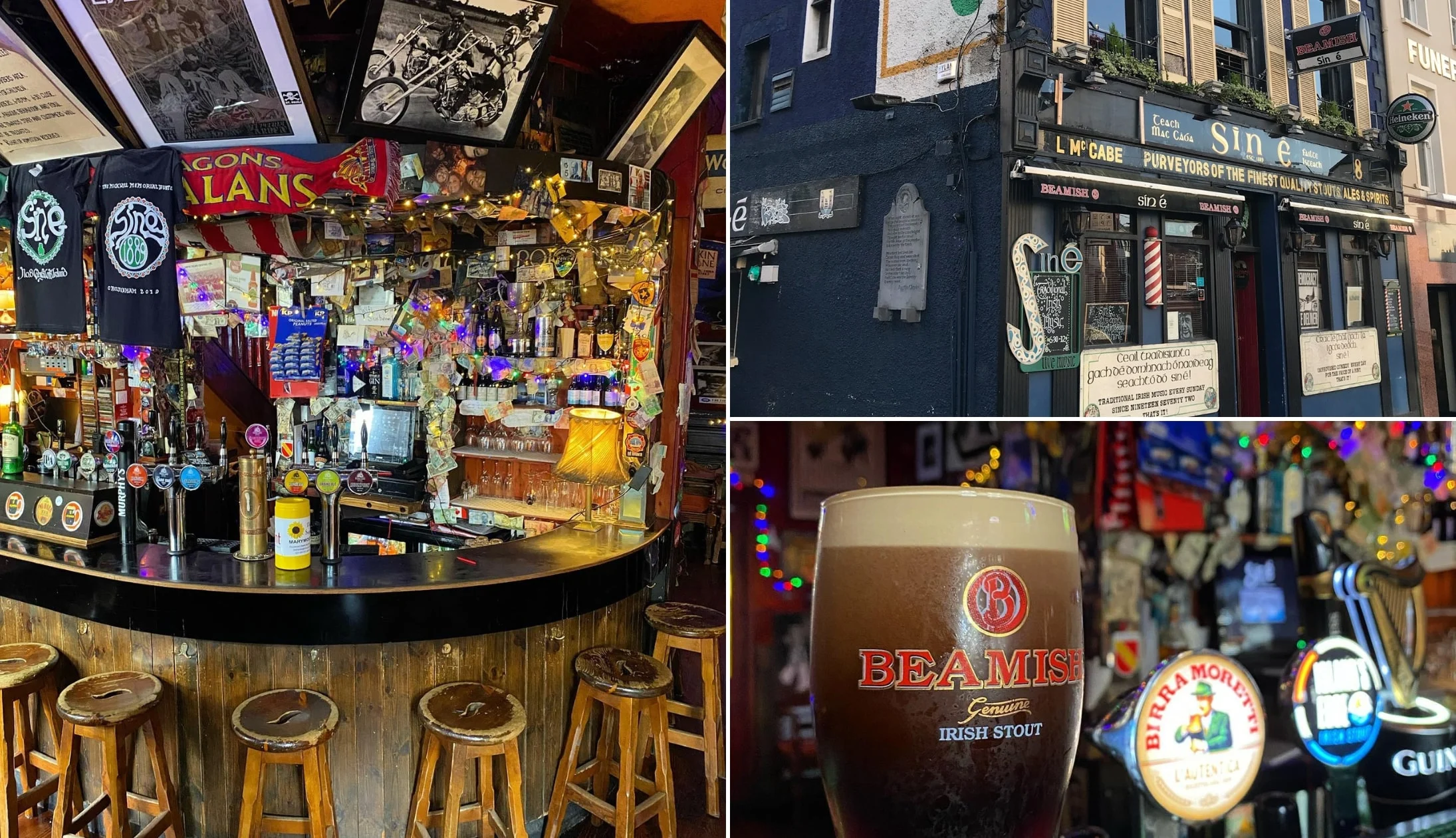
Photos via Sin E on FB
You have endless food and pub options in Cork City, regardless of what it is that you fancy on the night.
Here’s a few recommendations to get you started, but feel free to follow your nose:
Our dinner recommendations
There are heaps of brilliant restaurants in Cork City, but our personal favourites are Market Lane, Old Town Whiskey Bar at Bodega, and Cornstore.
Market Lane has a delicious-sounding menu featuring Irish favourites like pan-fried hake with braised leeks, smoked mussels, and baby potatoes, as well as international dishes like Sri Lankan vegetable curry with tempura aubergine and forbidden rice.
Head to Old Town Whiskey Bar for burgers, salads, and traditional pub grub, and Cornstore for steaks and seafood.
Live music and trad bars
There’s some might old-school pubs in Cork City, too. For drinks, check out Mutton Lane (a quirky traditional pub), The Oval (a historic pub named after its unique oval ceiling), and Castle Inn (a traditional family-run pub with a great atmosphere).
There are some great spots for hearing some trad music in Cork, our top choices are Sin E and The Corner House.
Day 2: Blarney and Cobh
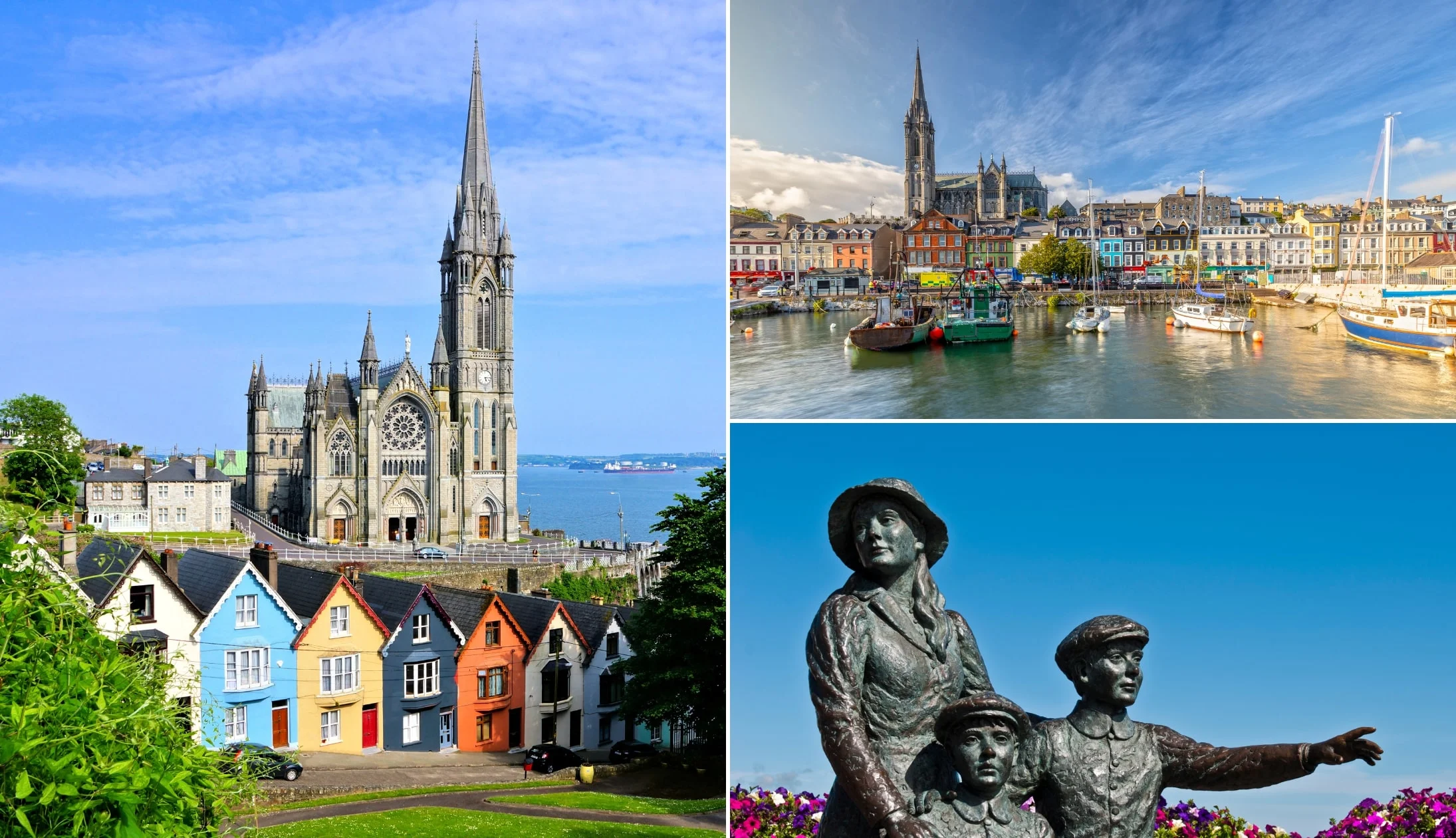
Photos via Shutterstock
Today you’re heading to Blarney and Cobh which are both just outside of Cork City. Get ready to see castles and cathedrals and to visit the Titanic’s last stop before her tragic end.
Grab a spot of breakfast in Cork before you head out for the day. We like Cafe Gusto and The Farmgate, but you could also wander around the English Market to pick up a fresh pastry or sandwich.
We’d recommend this 8-hour day trip that takes you to Blarney Castle and then onto the charming town of Cobh.
We’ll take you through the stops below, but note that 1, you may not always physically stop at all of these sights and 2, these tours are subject to change, so always check with the provider in advance.
Stop 1: Blarney Castle
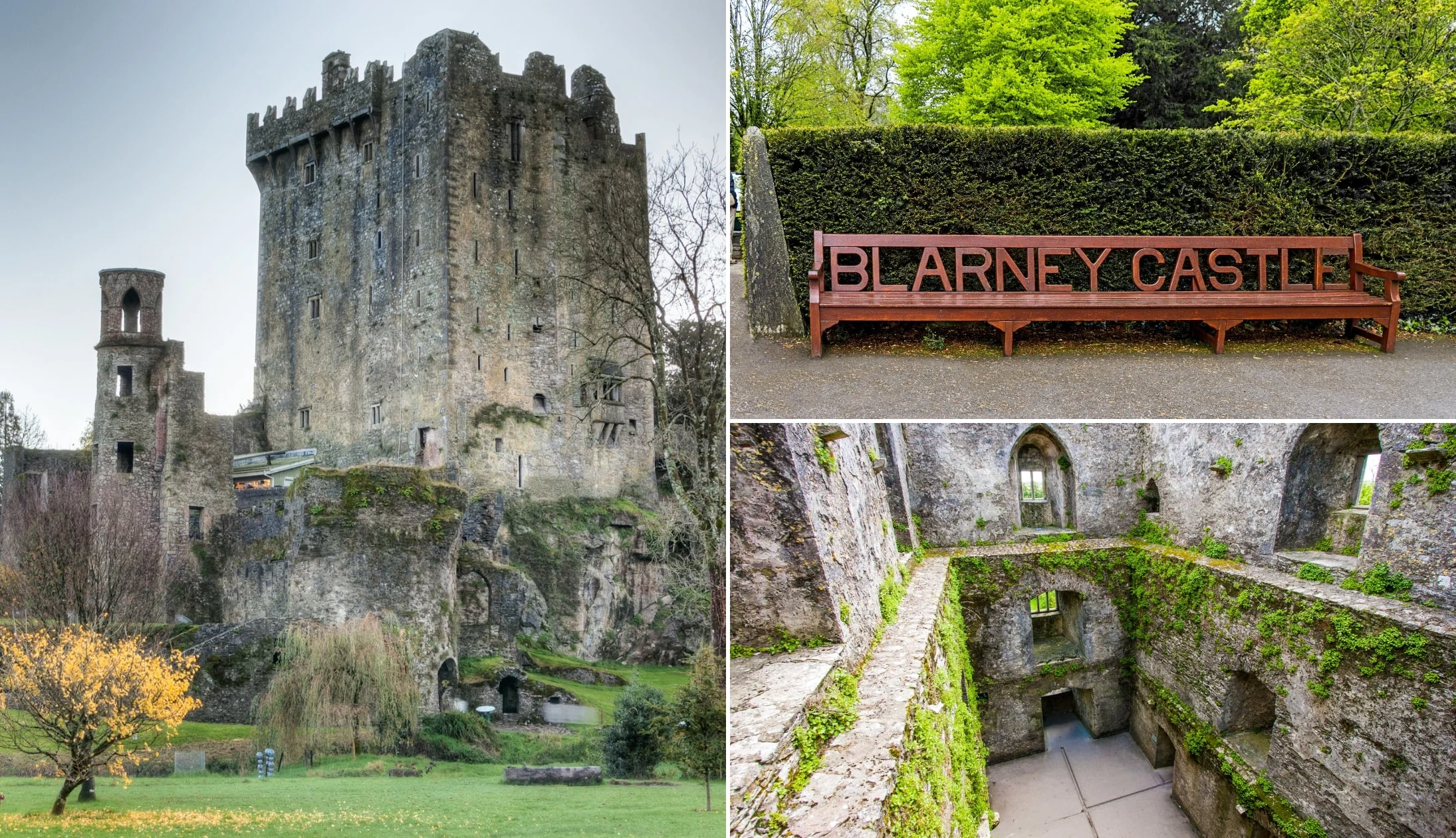
Photos via Shutterstock
Blarney Castle is one of the most famous of the many castles in Ireland. The current castle dates back to 1446, but prior to that, there was another stone castle on the site that dated back to 1210.
Blarney Castle has an interesting history and has changed hands several times.
It was besieged during the Irish Confederate Wars, seized by parliament in 1646, and confiscated in the 1690s during the Williamite War when its owner (the 4th Earl of Clancarty) was captured.
Stop 2: The Blarney Stone
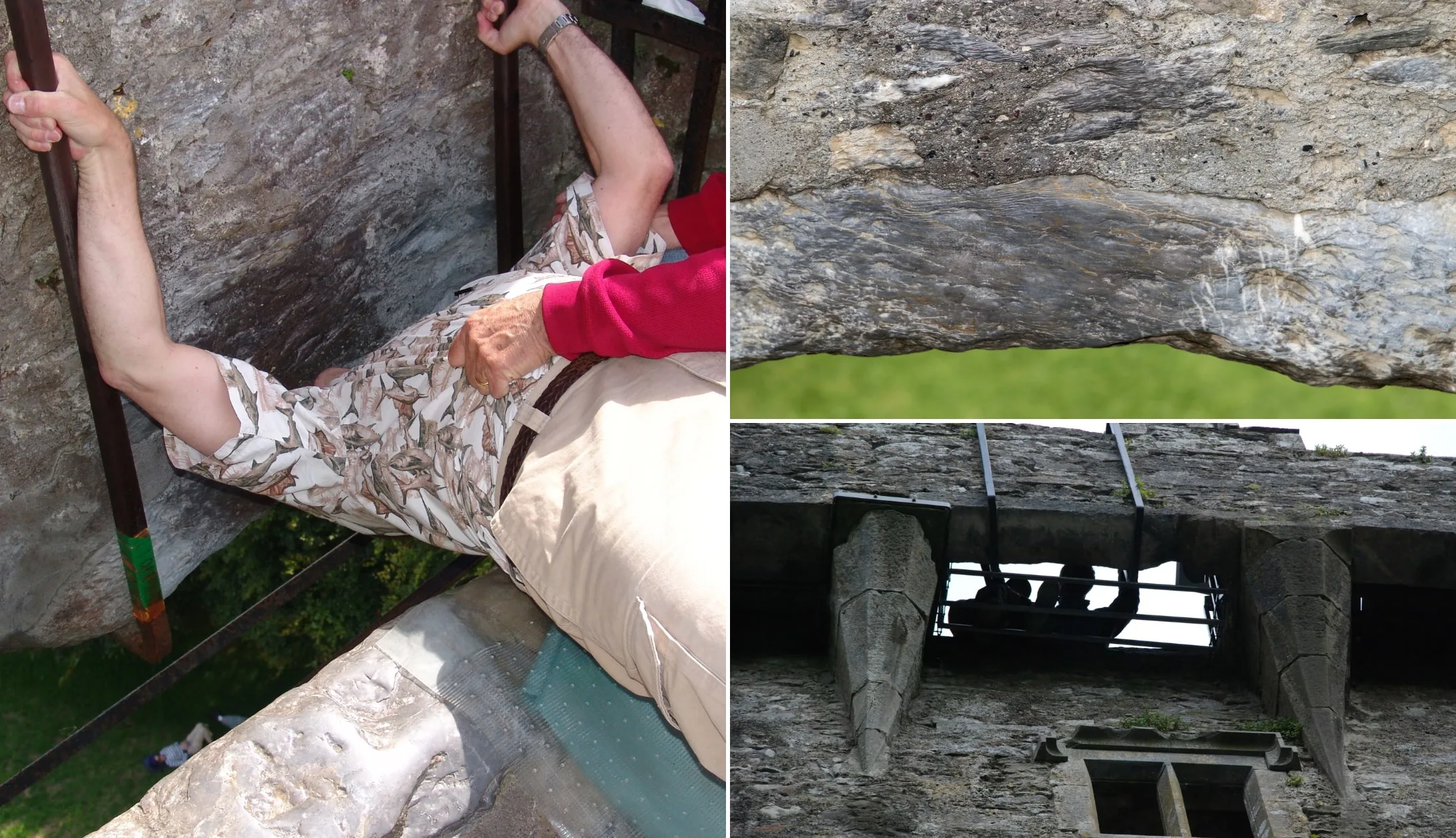
Photos via Shutterstock
The Blarney Stone is a block of grey limestone built into Blarney Castle. According to folklore, anyone who kisses the stone will be given the “gift of the gab” or the gift of flattery and eloquence.
The stone has been set into the castle walls since it was built in 1446, and it’s believed that the practice of kissing the stone dates back to the late 18th century.
Today, it’s a must-do activity in the castle, although it’s not easily achieved! To kiss the stone, you’ll need to be on your back and edge yourself closer to the stone to kiss it upside down.
There’s a large gap between the floor and the stone, but nowadays, thanks to health and safety regulations, there are metal bars to prevent you from falling if you slip through the gap.
There are several origin stories of how kissing the stone came about, from tales involving goddesses to Queen Elizabeth I, to 15th-century lawsuits.
Stop 3: Cobh

Photos via Shutterstock
Cobh is a historic coastal town in Cork City harbour that’s beautiful to stroll around regardless of the time of year.
It was the last stop of the Titanic before it departed for New York and home to St. Colman’s Cathedral.
Stop 4: St Colman’s Cathedral
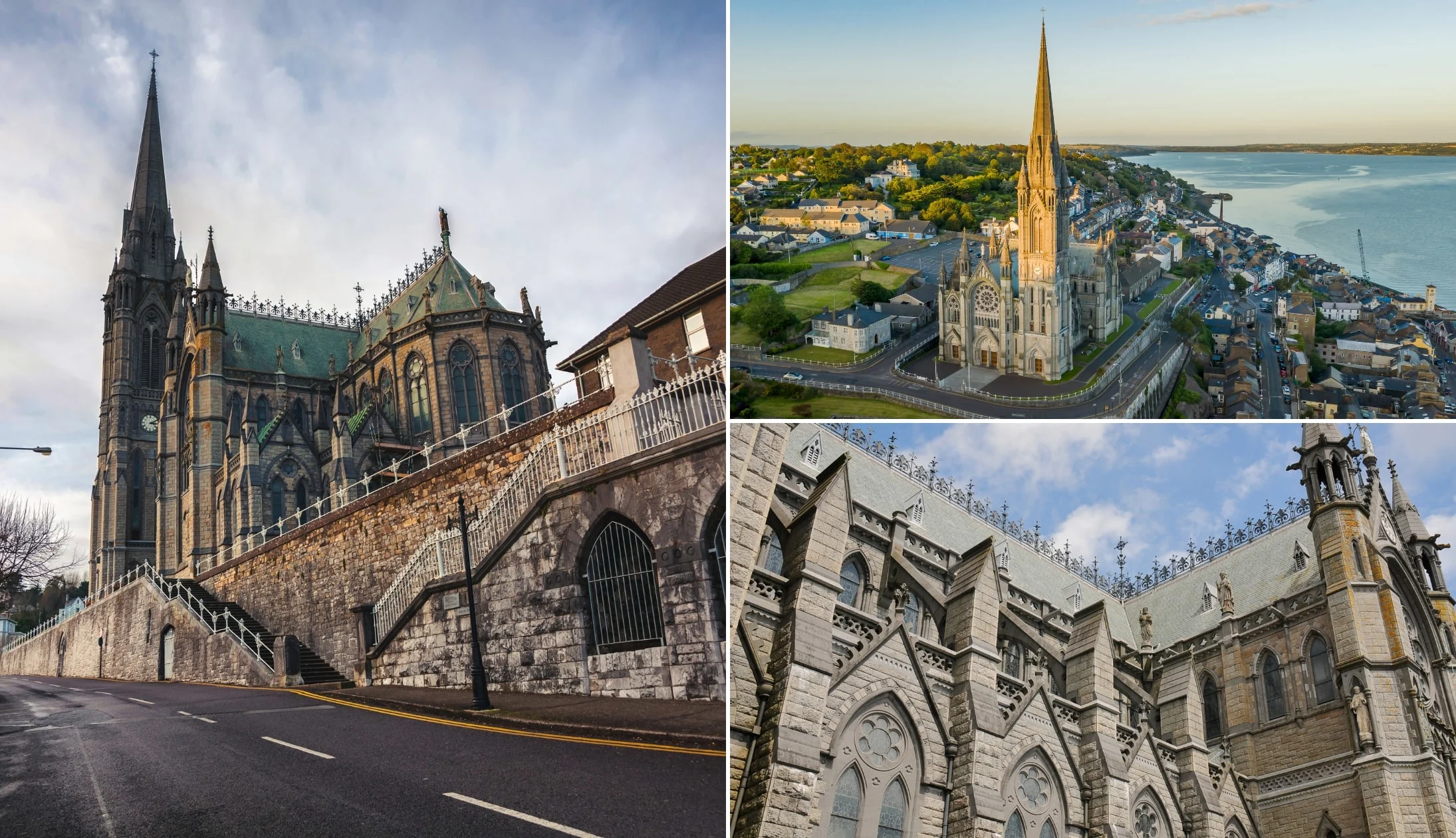
Photos via Shutterstock
Cobh Cathedral, or St. Colman’s Cathedral, is one of Cobh’s iconic landmarks. It’s a gorgeous cathedral with large stained-glass windows, intricate carvings, and an impressive 90-metre spire that dominates the town’s skyline.
It took 51 years from the first cornerstone being laid to the cathedral’s consecration. Building the cathedral was a mammoth project and cost well over the initial budget.
It’s just as beautiful on the inside as it is from the outside, with large stone arches, pillars, and red marble shrines.
The cathedral is on top of a hill, so you’ll have great views over Cork Harbour.
Stop 5: Titanic Experience
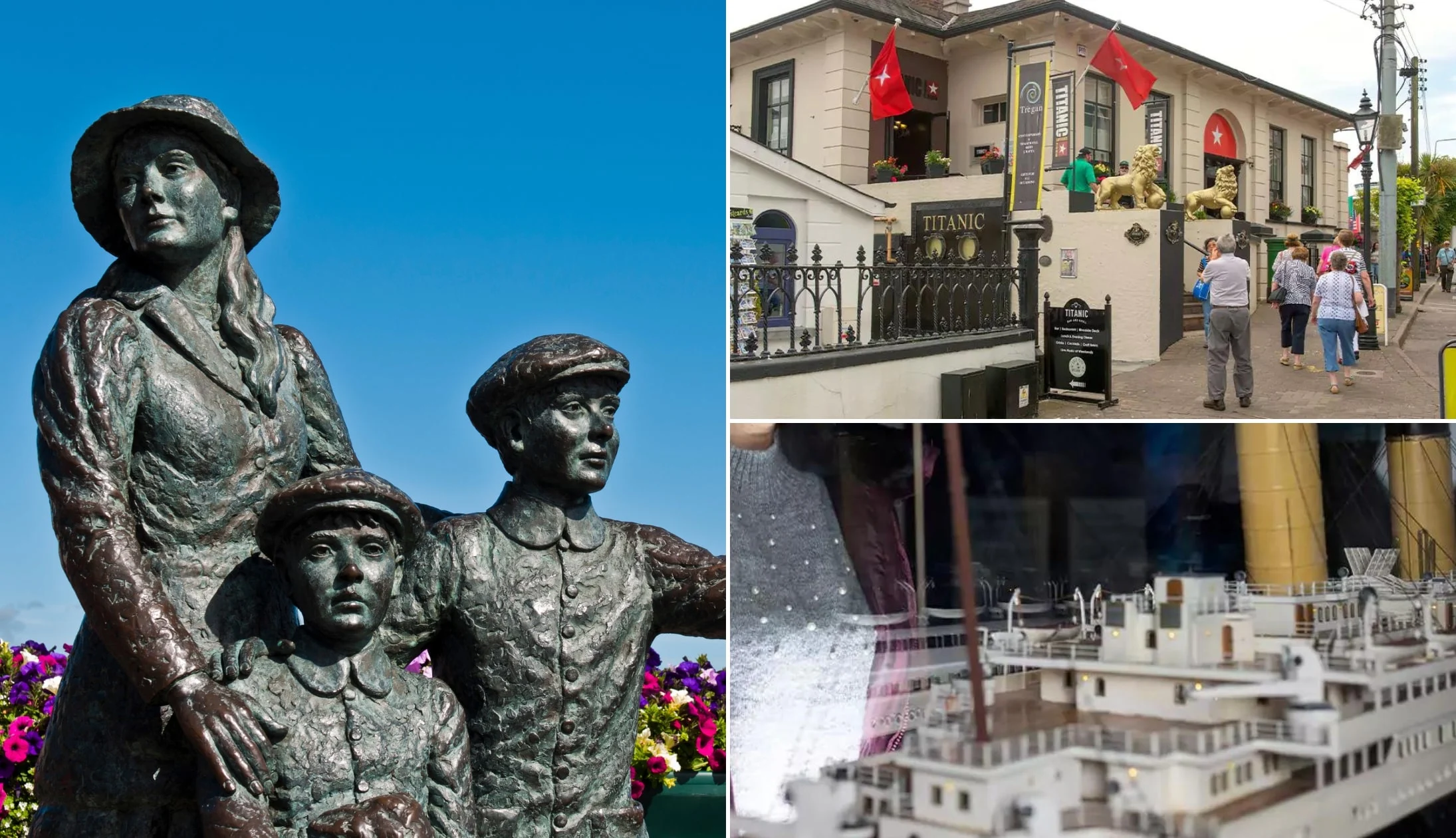
Photo left: Shutterstock. Others: Via Titanic Experience Cobh
The Titanic Experience gives visitors an immersive insight into what life was like aboard the Titanic.
It includes a 30-minute tour where you’ll experience an incredible cinematographic experience of the ship sinking.
Aside from the tour, the experience has several exhibitions telling the personal stories of the passengers, the role of the RMS Carpathia in rescuing survivors, and much more.
Stop 6: Back to Cork for the night

Photos via Sin E on FB
After the day’s activities are finished, it’s time to head back to Cork.
Our Cork food recommendations
There are heaps of brilliant restaurants in Cork City, but our personal favourites are Market Lane, Old Town Whiskey Bar at Bodega, and Cornstore.
Market Lane has a delicious-sounding menu featuring Irish favourites like pan-fried hake with braised leeks, smoked mussels, and baby potatoes.
Head to Old Town Whiskey Bar for burgers, salads, and traditional pub grub, and Cornstore for steaks and seafood.
Great Cork City pubs
There’s some glorious pubs in Cork, too. For drinks, check out Mutton Lane (a quirky traditional pub), The Oval (a historic pub named after its unique oval ceiling), and Castle Inn (a traditional family-run pub with a great atmosphere).
There are some great spots for hearing some trad music in Cork, our top choices are Sin E and The Corner House.
Day 3: The trip to Killarney
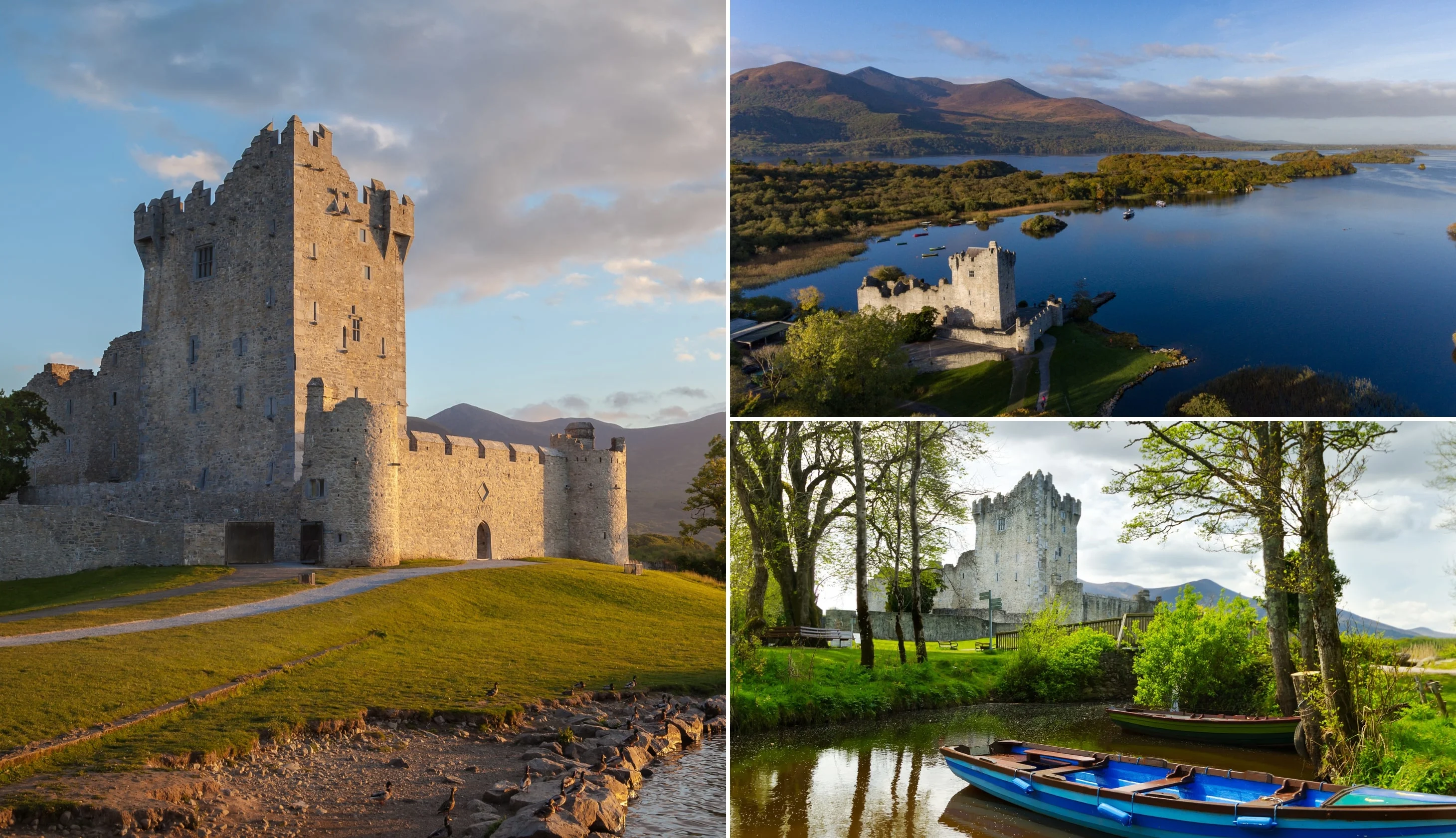
Photos via Shutterstock
It’s day 3 of your 11 days in Ireland itinerary, and today, you’ll be leaving Cork and heading to Killarney.
Grab some breakfast from your accommodation before you check out or from Cafe Spresso (a nine-minute walk to the train station). It’s a simple place, but the food is delicious, and they have big portions.
You’ll be spending two nights in this peaceful town which sits on the outskirts of a beautiful national park.
Recommended accommodation in Killarney
Here are a handful of places that we’d recommend staying in Killarney:
- Budget: New Street Lodge (basic accommodation a stone’s throw from the National Park) and Castle Lodge (cosy B&B a 5-minute walk from Killarney House)
- Mid-range: Killaran House (exceptional accommodation in a great location) and Killarney Avenue (right by the park with excellent rooms)
- Luxury: Muckross Park Hotel & Spa (an elegant hotel a 10-minute walk from Muckross Abbey) and The Killarney Park (old-worlde style 5-star near the train station)
Getting to Killarney from Cork City
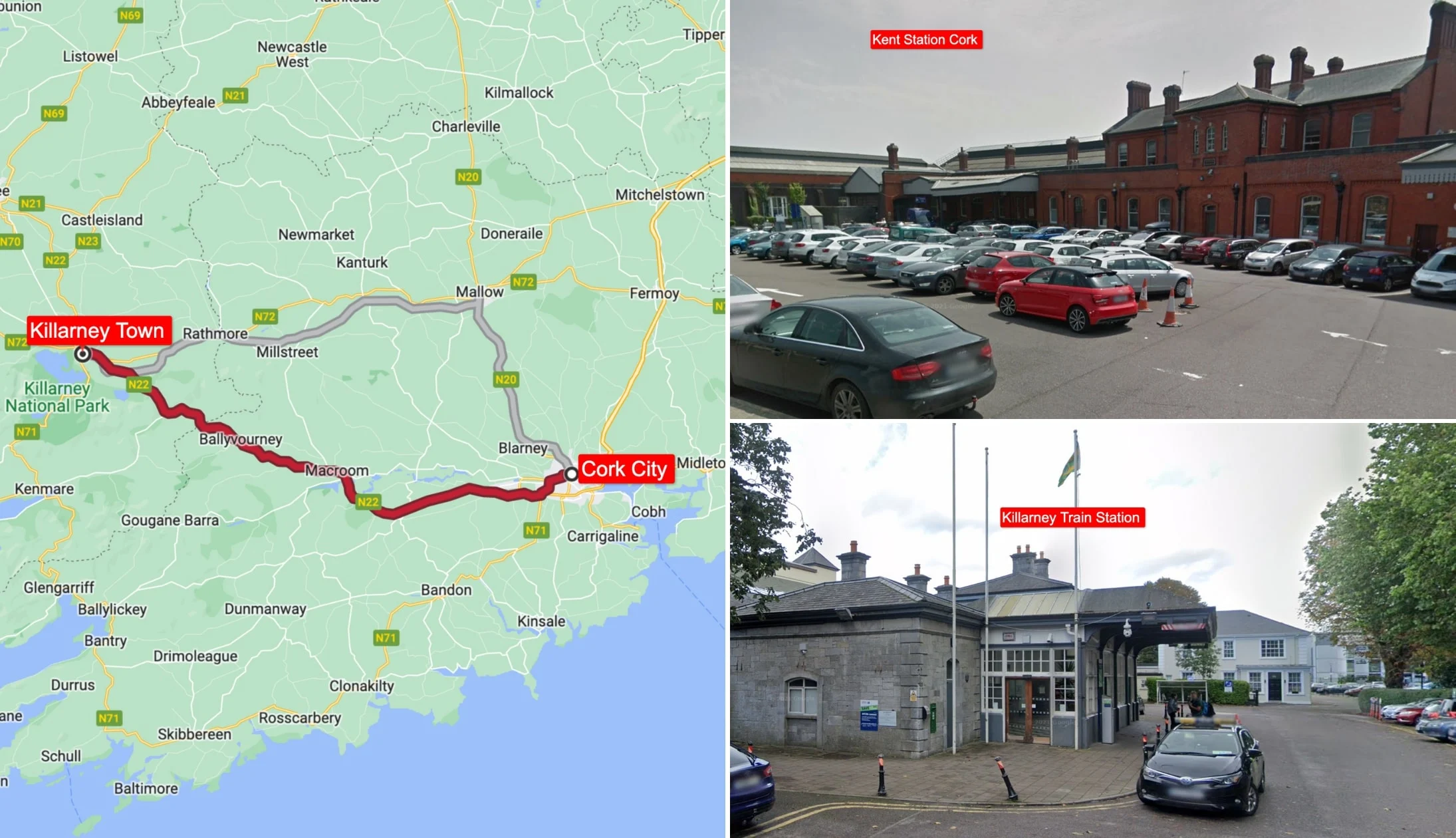
Photos via Google Maps
You have two options for getting from Cork to Killarney – the bus or train (we’ll give more details below).
Personally, we prefer the train as you’ll have more space to move around.
Option 1: Bus
Bus Eireann operates a bus service to Killarney from the Bus Station (Parnell Place) in Cork. The trip takes around 1.5 hours and is fairly straightforward. The only issue is that it’s not always a guarantee that there’ll be toilets on the bus!
Option 2: Train
There are regular trains between Cork Kent and Killarney. There are also direct trains between the two, however, you should pay attention when you’re booking your tickets, as some trains require a transfer in Mallow. As always, if you’re unsure, don’t be afraid to ask for help at the station. The train takes around 1.5 hours (depending on if it’s direct or if you need to change).
Stop 1: Arrive in the town and try and check into your accommodation
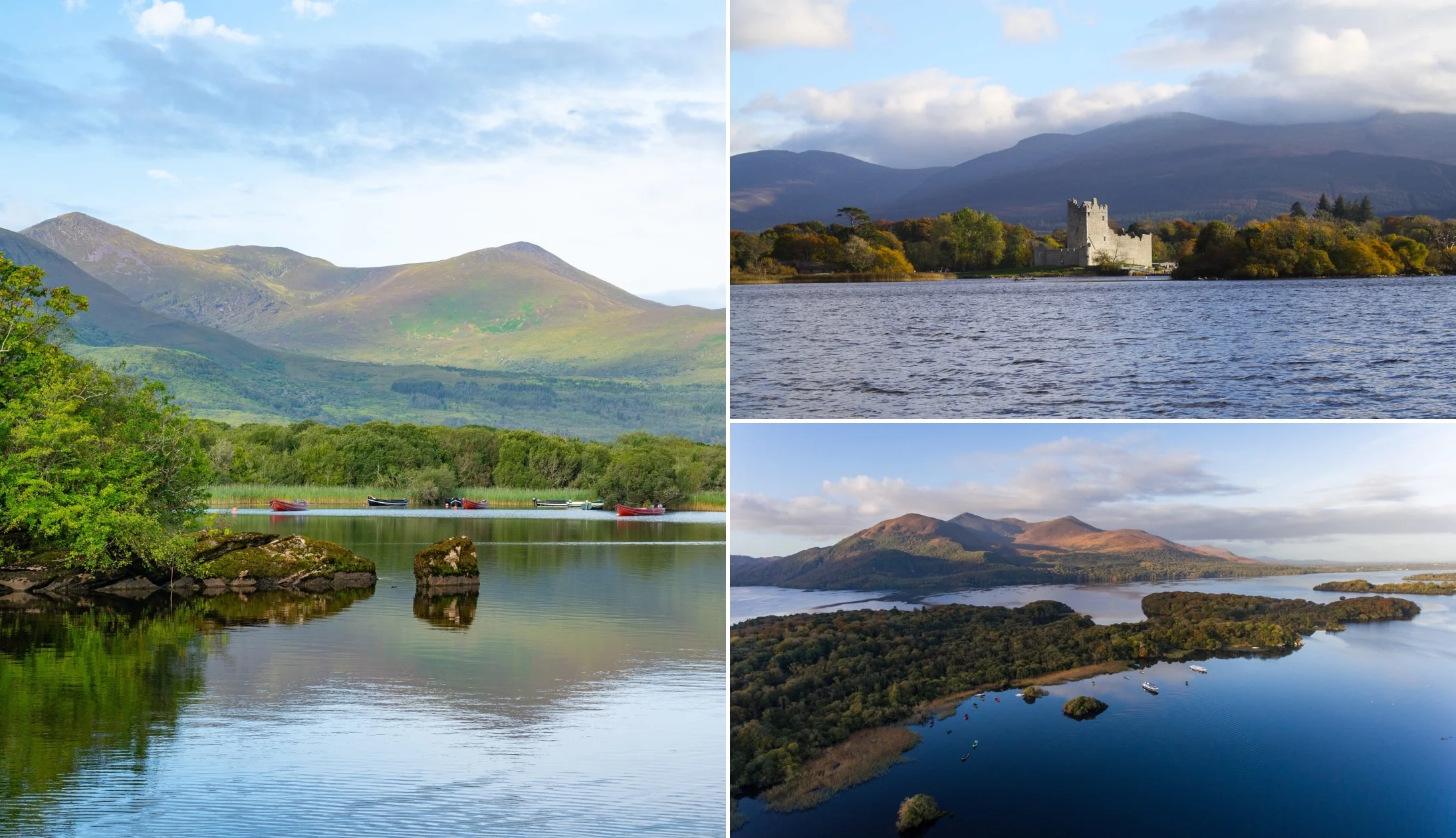
Photos via Shutterstock
Welcome to Killarney Town! If you can, try and check into your accommodation – this will likely depend on when you arrive, as some places won’t allow you to check-in until the afternoon.
When you’re ready, it’s time to explore the area and we’ve two different ways of exploring for you to choose from.
Option 1: The jaunty
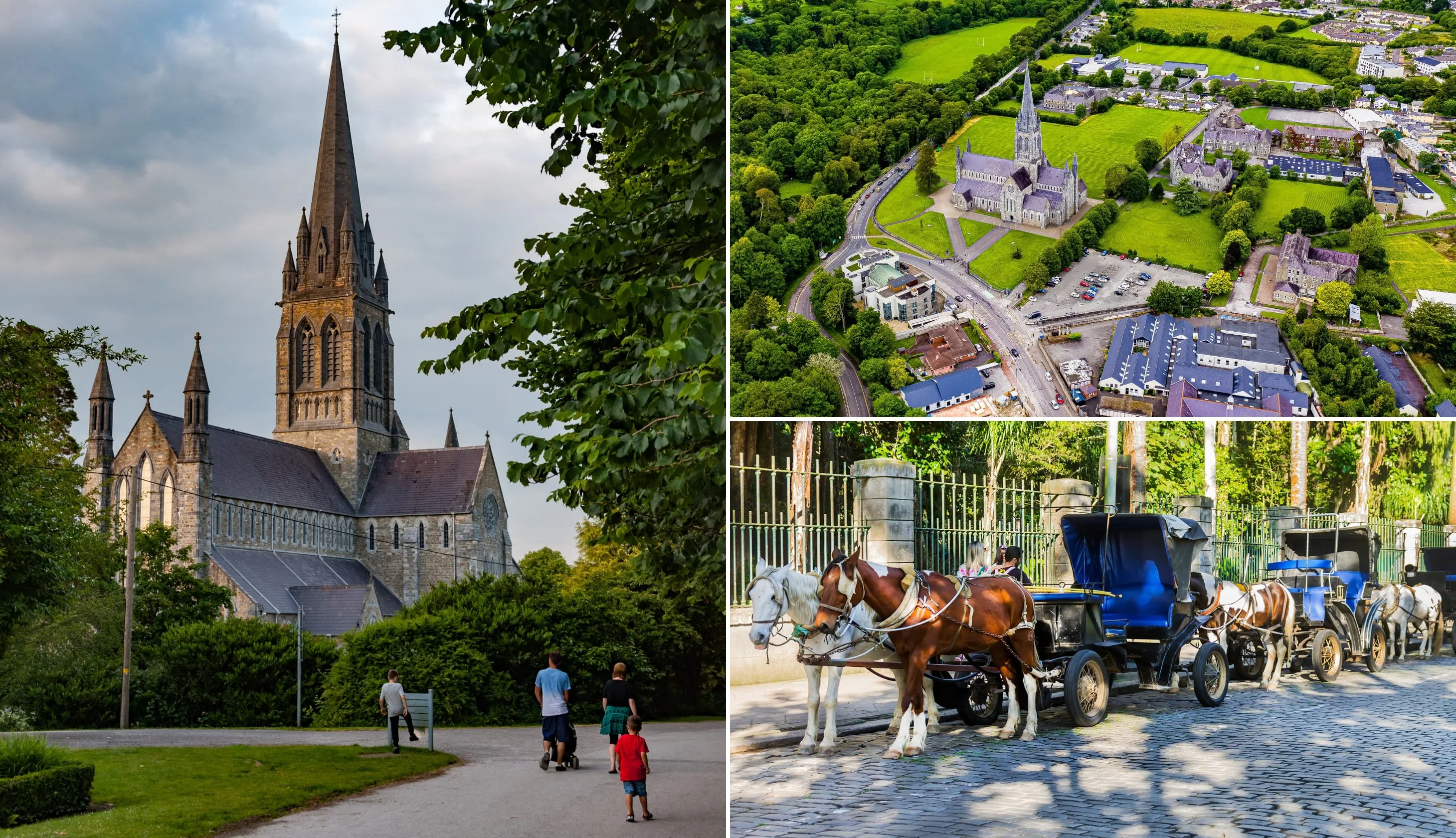
Photos via Shutterstock
Another great, and very unique way to explore Killarney, is via one of the traditional jaunting cars (i.e. the horse and cart).
On this 1-hour guided jaunty tour you’ll:
- See Ireland’s highest Mountain Range – the MacGillycuddys
- Trot past the 15th-century Ross Castle
- See the impressive St Mary’s Cathedral
- Learn about Killarney from a traditional Jarvey guide
Option 2: The Lakes of Killarney boat Cruise

Photos via Shutterstock
Arguably one of the most popular tours in Killarney is this 1-hour (and very reasonable) boat tour that takes you around Killarney’s lakes.
The tour takes place on a glass-covered boat with heating and it gives you a completely different perspective of the national park.
You’ll drift by the 6th-century Innisfallen Monastery, see the highest mountain in Ireland and, at times, see Red Deer and White Tailed Eagles.
Stop 2: Killarney for the night
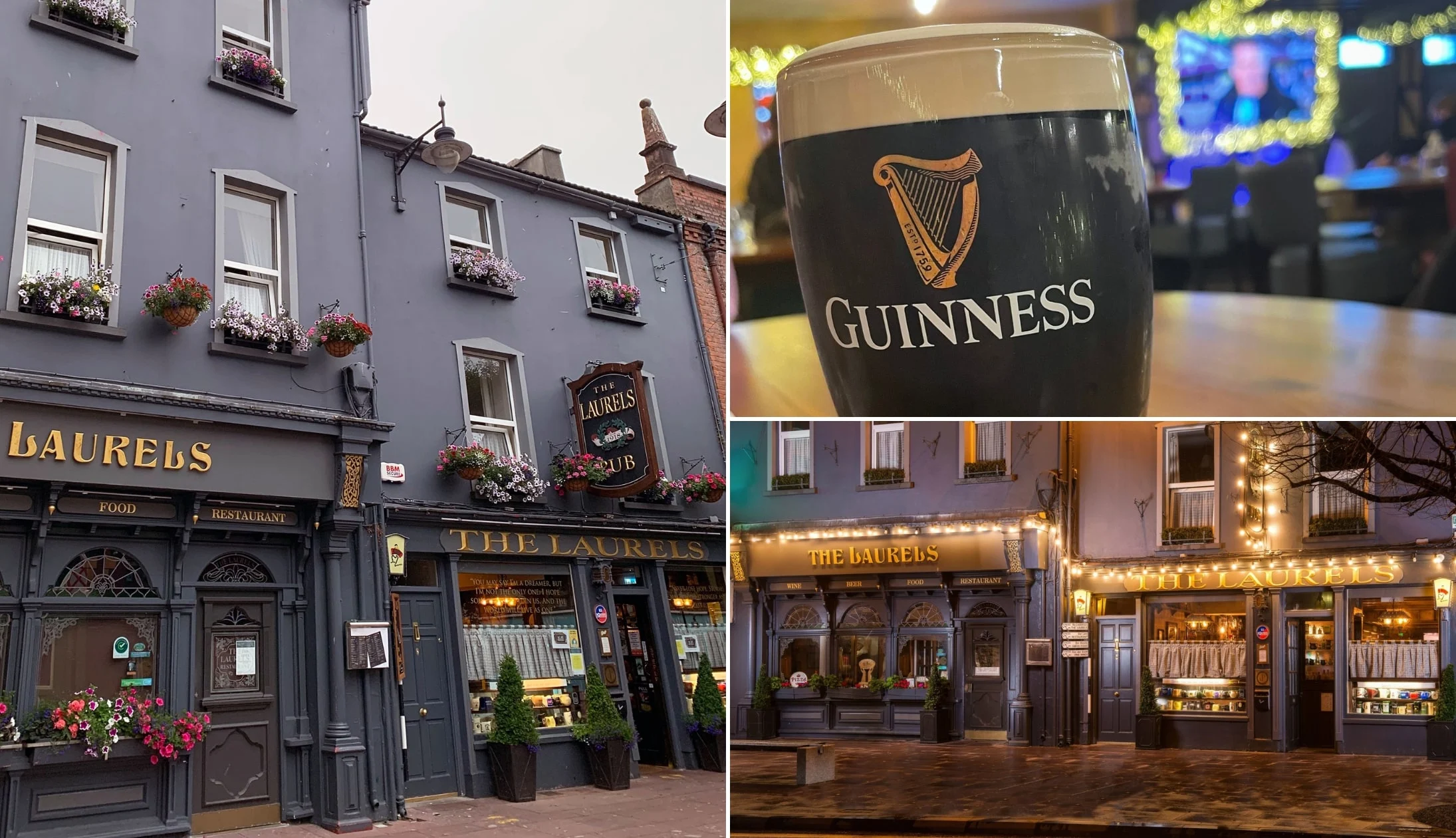
Photos via The Laurels on FB
Freshen up at your hotel then head out for a well-deserved dinner!
It’s been a long day and, luckily enough, there’s plenty of places to kick-back in for a fine feed and a tipple.
Our dinner recommendations
There are some exceptional restaurants in Killarney. Our favourites are the Mad Monk (they serve amazing seafood like sizzling crab claws and deep water prawn tagliatelle), Kitty O’Se (splash out on the Seafood Tower to share), and Murphy Browns (hearty Irish dishes like roasted duck and fish and chips).
Our pub recommendations
There’s some mighty old-school pubs in Killarney, too. For post-dinner drinks, head to JM Reidy’s, the Laurels Pub, or O’Connors.
They all have a traditional pub feel and are a great choice for a pint. JM Reidy’s has a lovely courtyard which is great in the summer, and O’Connors is perfect if you feel like cocktails.
If you want to hear some live music, JM Reidy’s and O’Connors often have live music sessions.
Day 4: Ring of Kerry
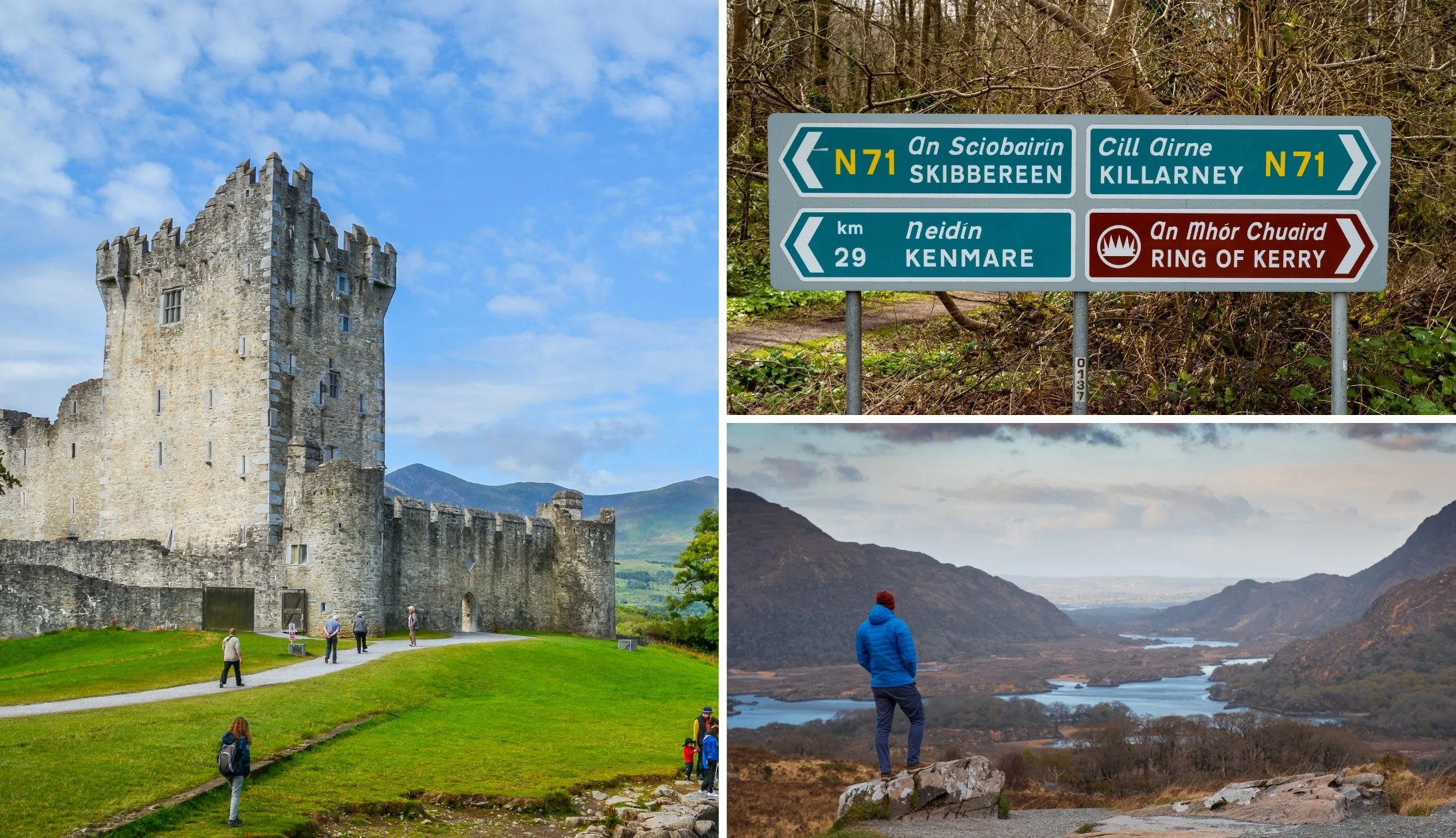
Photos via Shutterstock
Today you’re heading off for an adventure on the stunning Ring of Kerry! Be prepared for some amazing views and lovely beaches.
Be prepared for some amazing views and lovely beaches (if you’re visiting in the summer, you may want to bring swimming clothes and towels).
We’re going to recommend that you take this 7-hour Ring of Kerry day trip that’ll take you to all of the route’s highlights.
We’ll take you through the stops below, but note that 1, you may not always physically stop at all of these sights and 2, these tours are subject to change, so always check with the provider in advance.
Stop 1: Killorglin
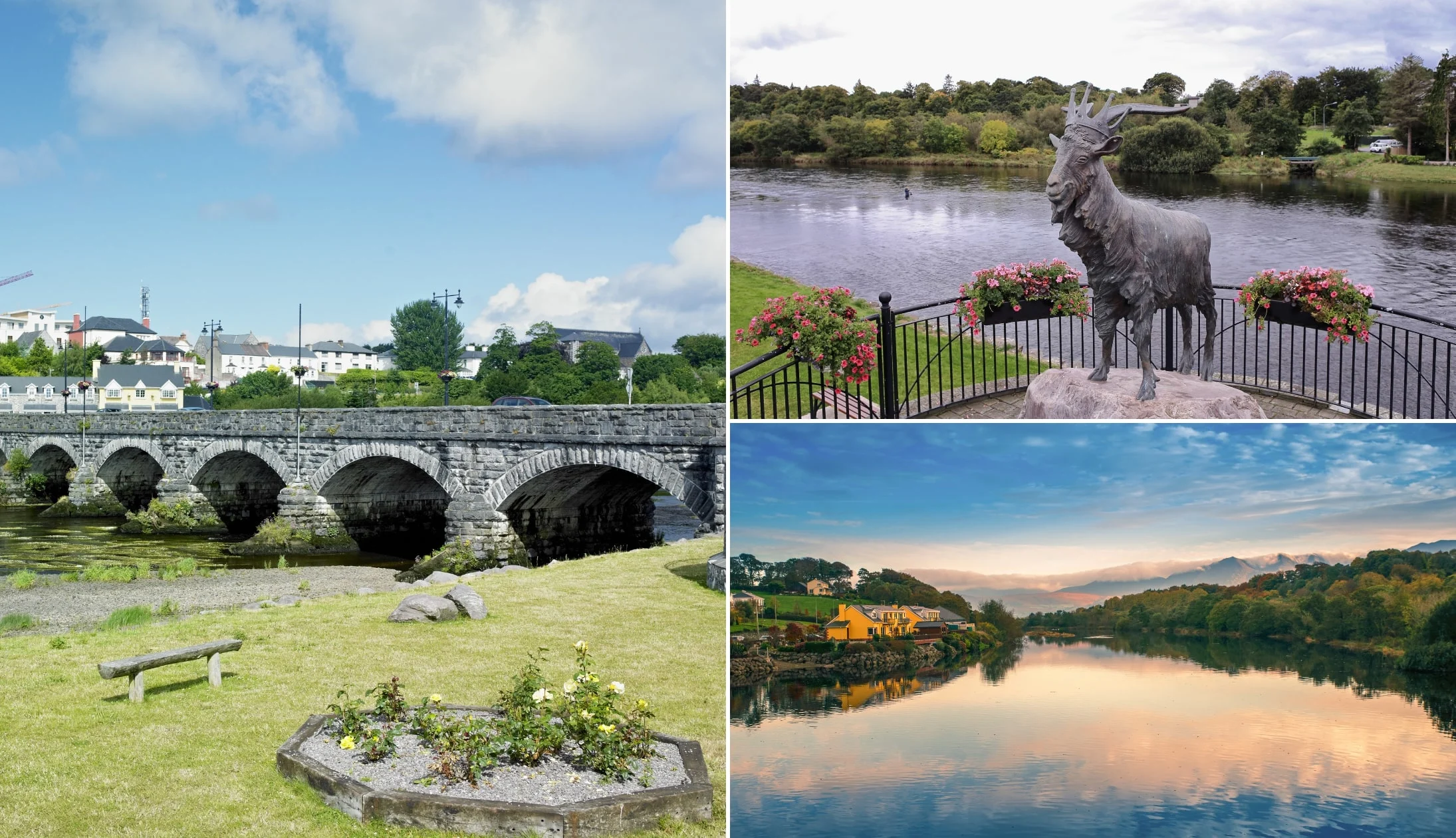
Photos via Shutterstock
Killorglin is a lovely little town on the Ring of Kerry. You’ll just be passing by, but keep an eye out of the window as it’s lovely.
The town is known for its annual Puck Fair, the country’s oldest street festival. It’s held every year in August, and following tradition, the fair starts with crowning the “king” goat
Stop 2: Dingle Bay and Inch Beach
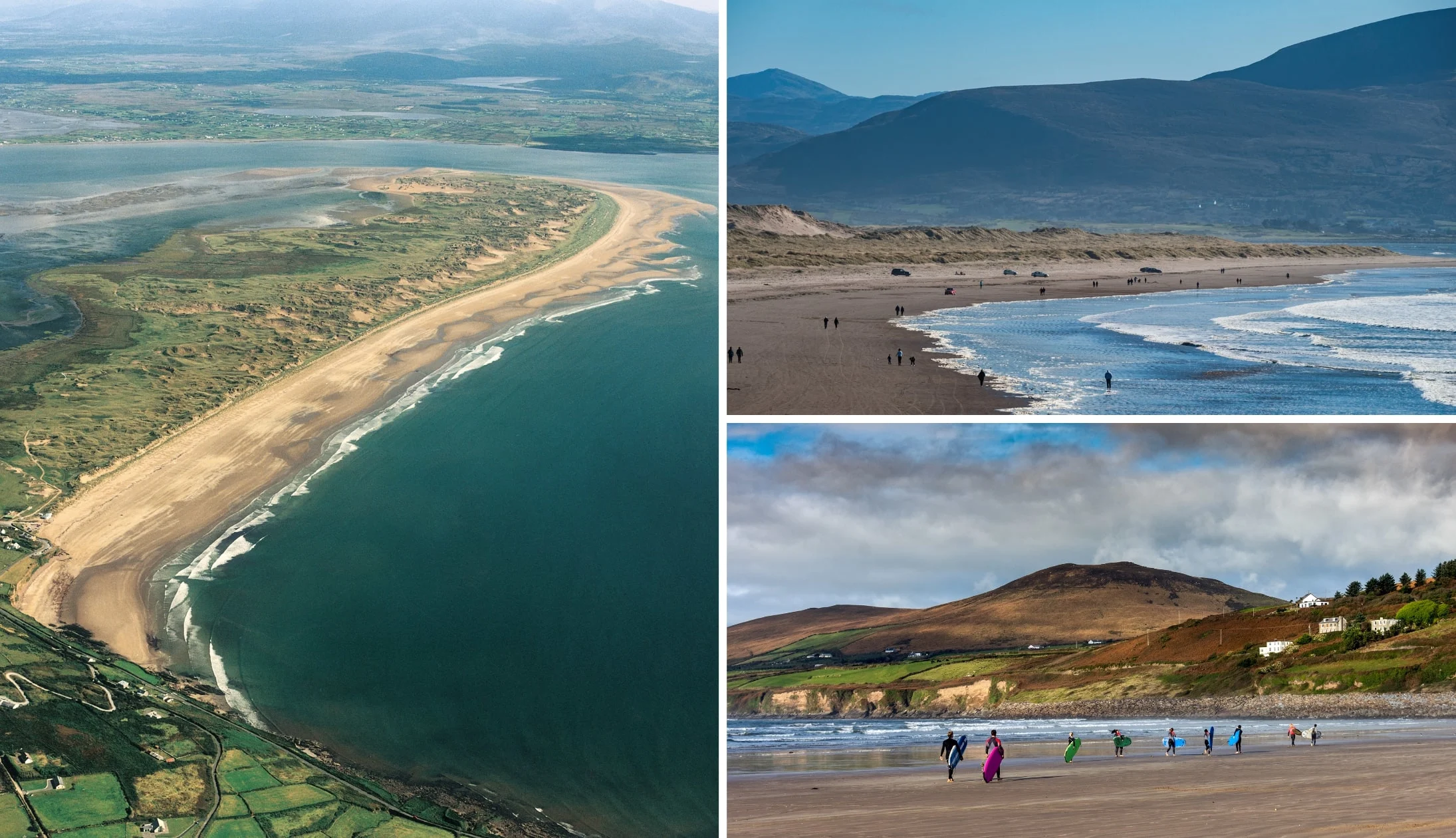
Photos via Shutterstock
As you pass through Killorglin, you’ll be driving alongside Dingle Bay and passing by Inch Beach, a long spit that juts out across the bay from the other side of the water.
Inch is one of Kerry’s most popular surf spots and you should be able to see surfers attempting to tame the waves here from afar.
Stop 3: Skellig views
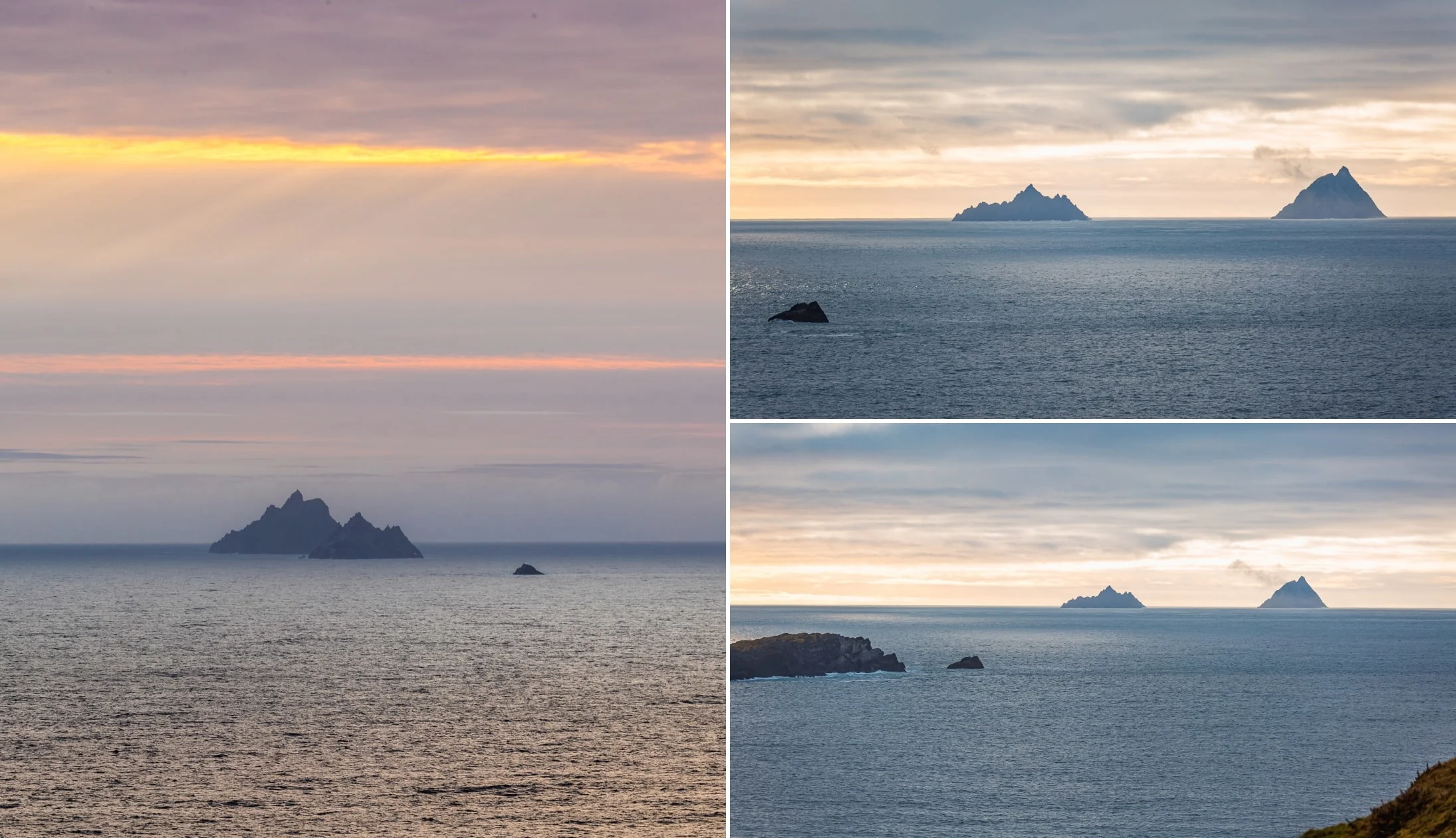
Photos via Shutterstock
As you make your way to Waterville, you’ll be passing by Ballinskelligs Bay, where on clear days, you’ll be able to spot the Skellig Islands off in the distance.
There are two islands – Skellig Michael and Little Skellig. The former shot to fame in recent years when scenes from a Star Wars movie were filmed on the island.
Stop 4: Waterville
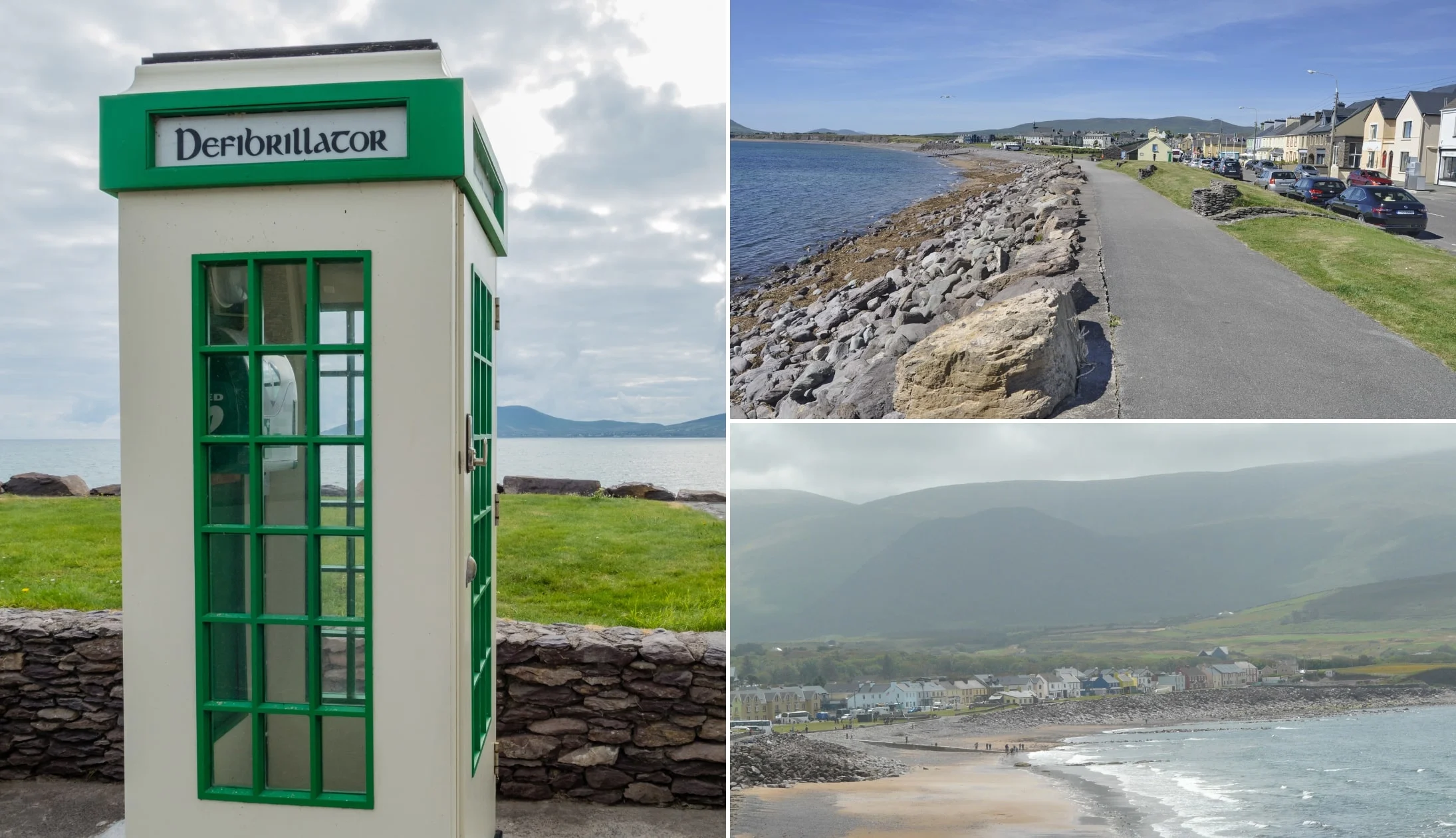
Photos via Shutterstock
Keep an eye out of the window as you pass through Waterville and discover why it was Charlie Chaplin’s favourite village in Ireland.
Chaplin first visited the village in 1959 after a recommendation from his friend Walt Disney!
Stop 5: Sneem
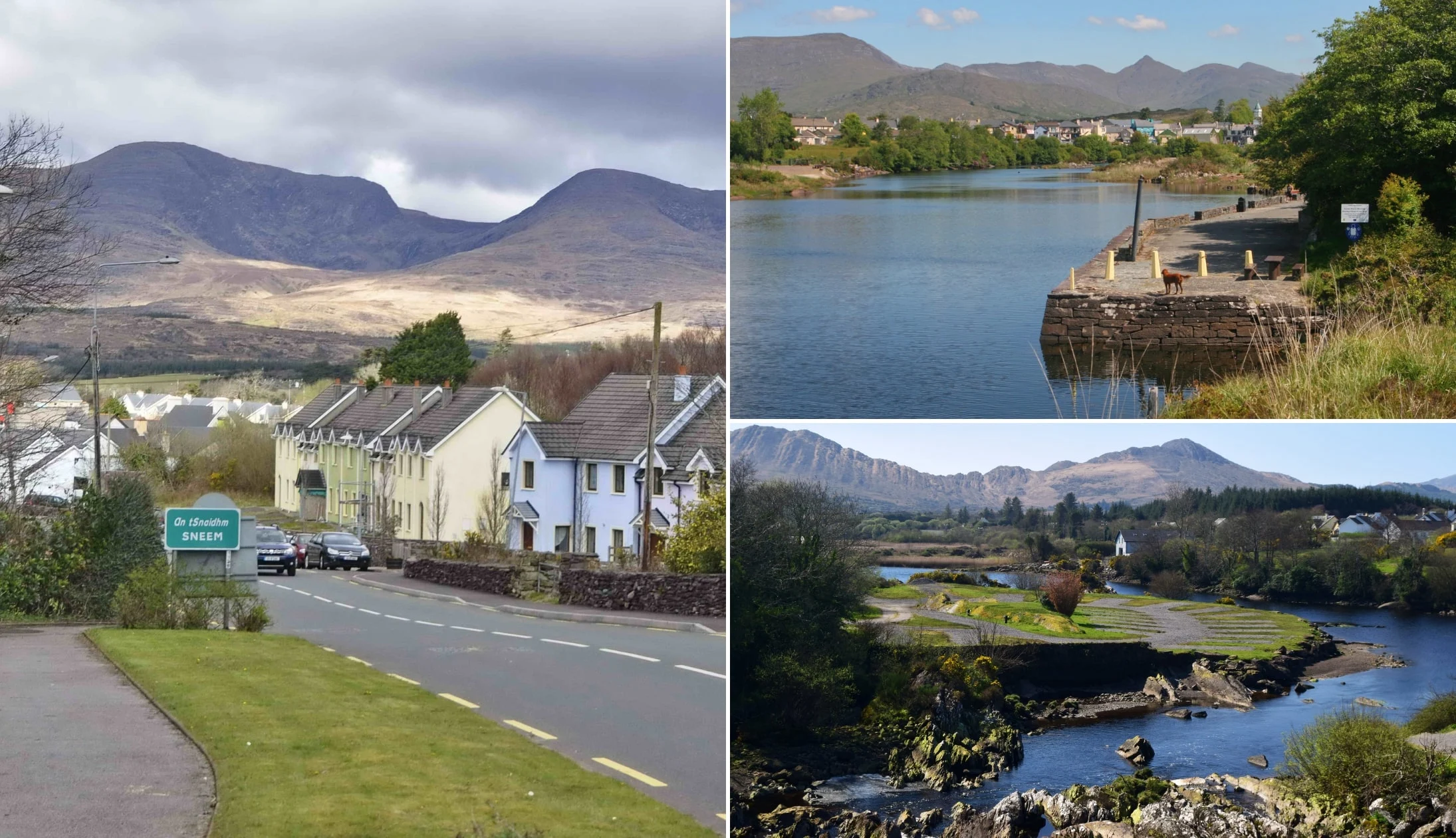
Photos via Shutterstock
You’ll be making a stop in Sneem, a colourful little village on the Sneem Estuary. The river flows right through the middle of the village and there’s a lovely stone bridge connecting both sides.
The bridge dates back to 1810, with five arches and a staircase down to the water.
Stop 6: Kenmare Bay
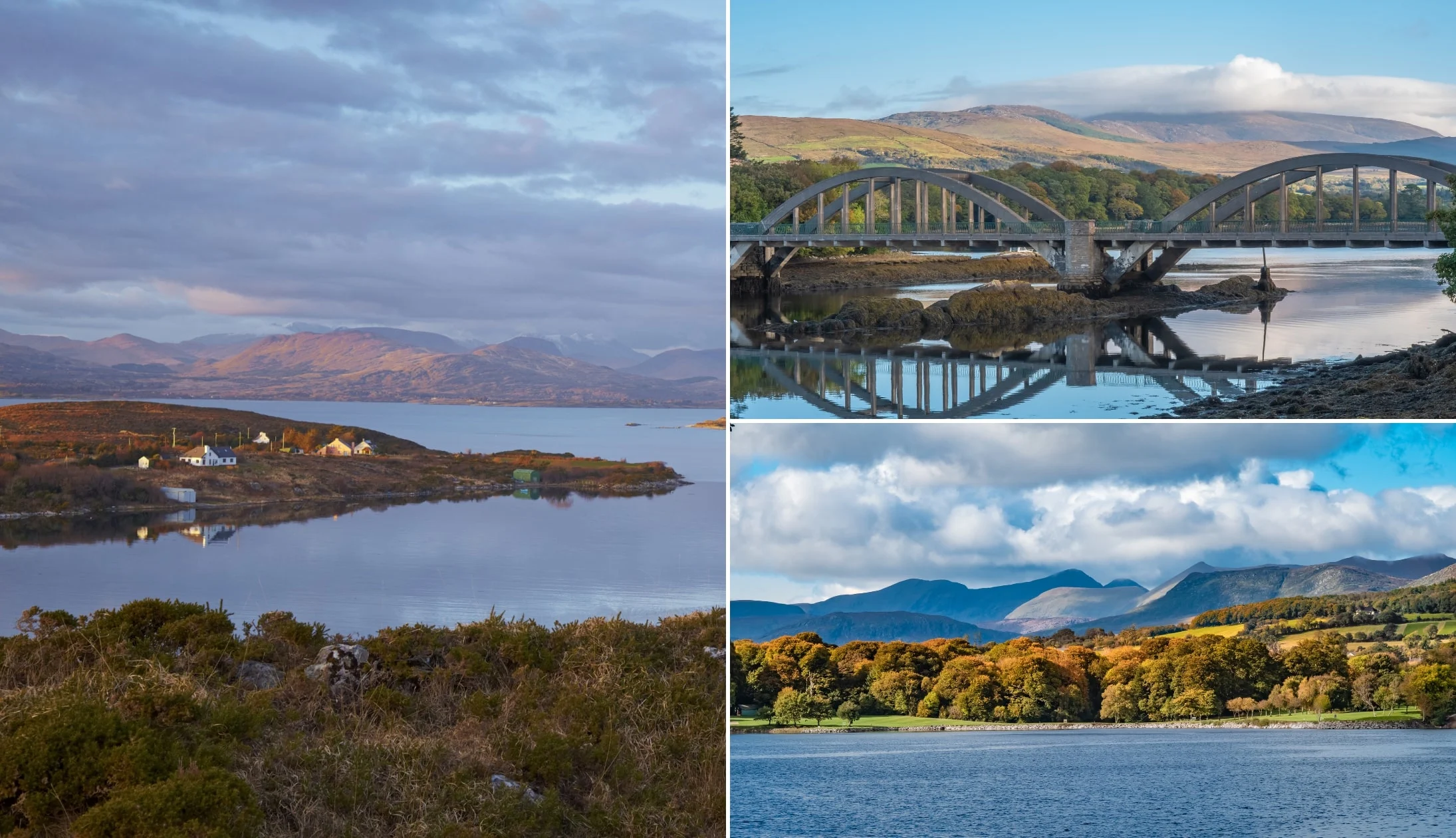
Photos via Shutterstock
As you drive out of Sneem on the Ring of Kerry road, you’ll be passing alongside Kenmare Bay, a long narrow bay that borders County Kerry and Cork.
This stretch of road hugs the coast and, while much of it is engulfed by tall trees, offers gorgeous views at times.
Stop 7: Moll’s Gap
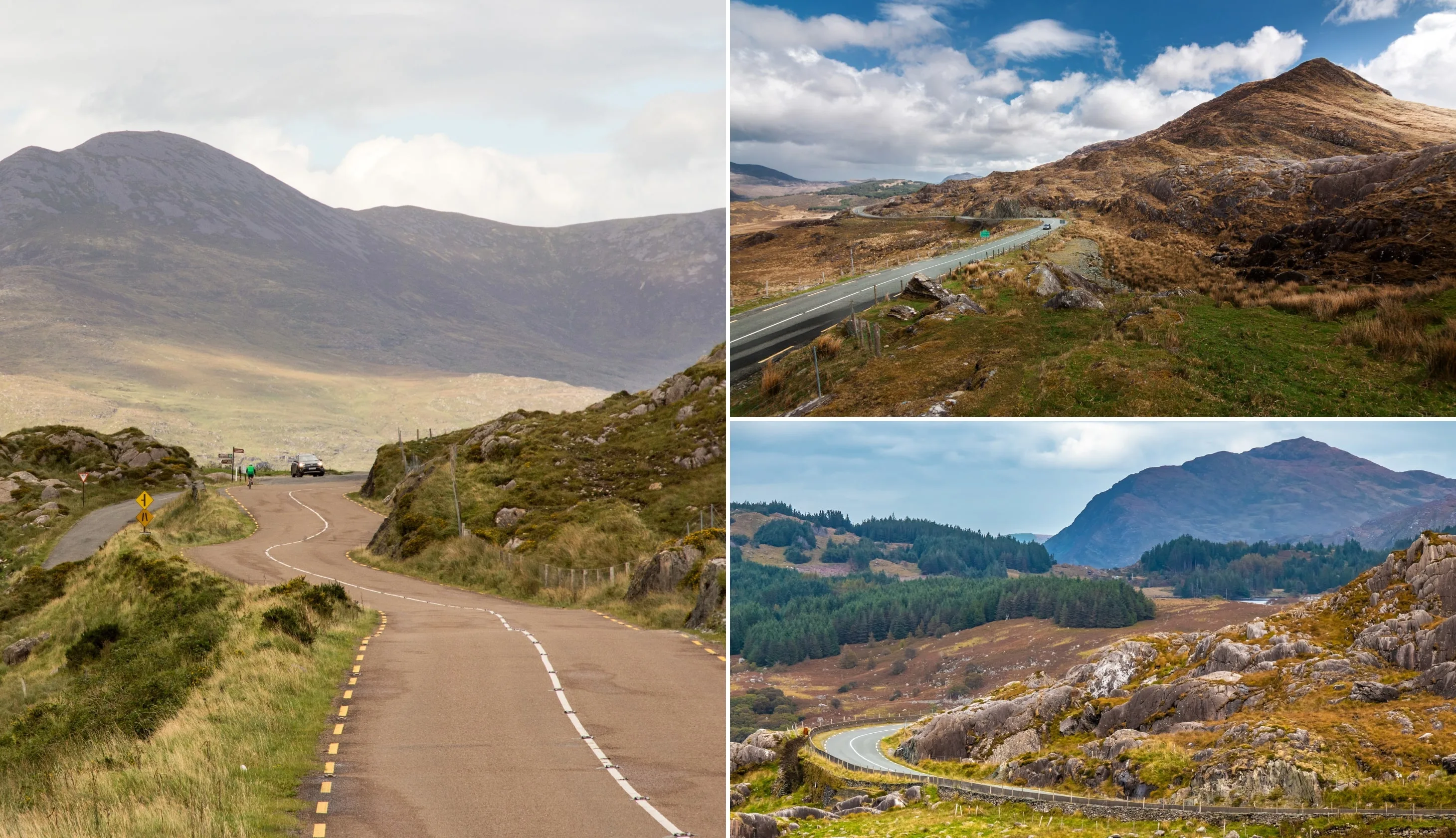
Photos via Shutterstock
Moll’s Gap is also known as Céim an Daimh in Irish or ‘Gap of the Ox’, but it gets its nickname after Moll Kissane, owner of a local shebeen (unlicensed pub).
The pub was established in the 1820s when the road was being built, and Moll’s homemade poitin (a strong liquor sometimes made from potatoes) was a favourite with the construction workers!
Stop 8: Ladies View
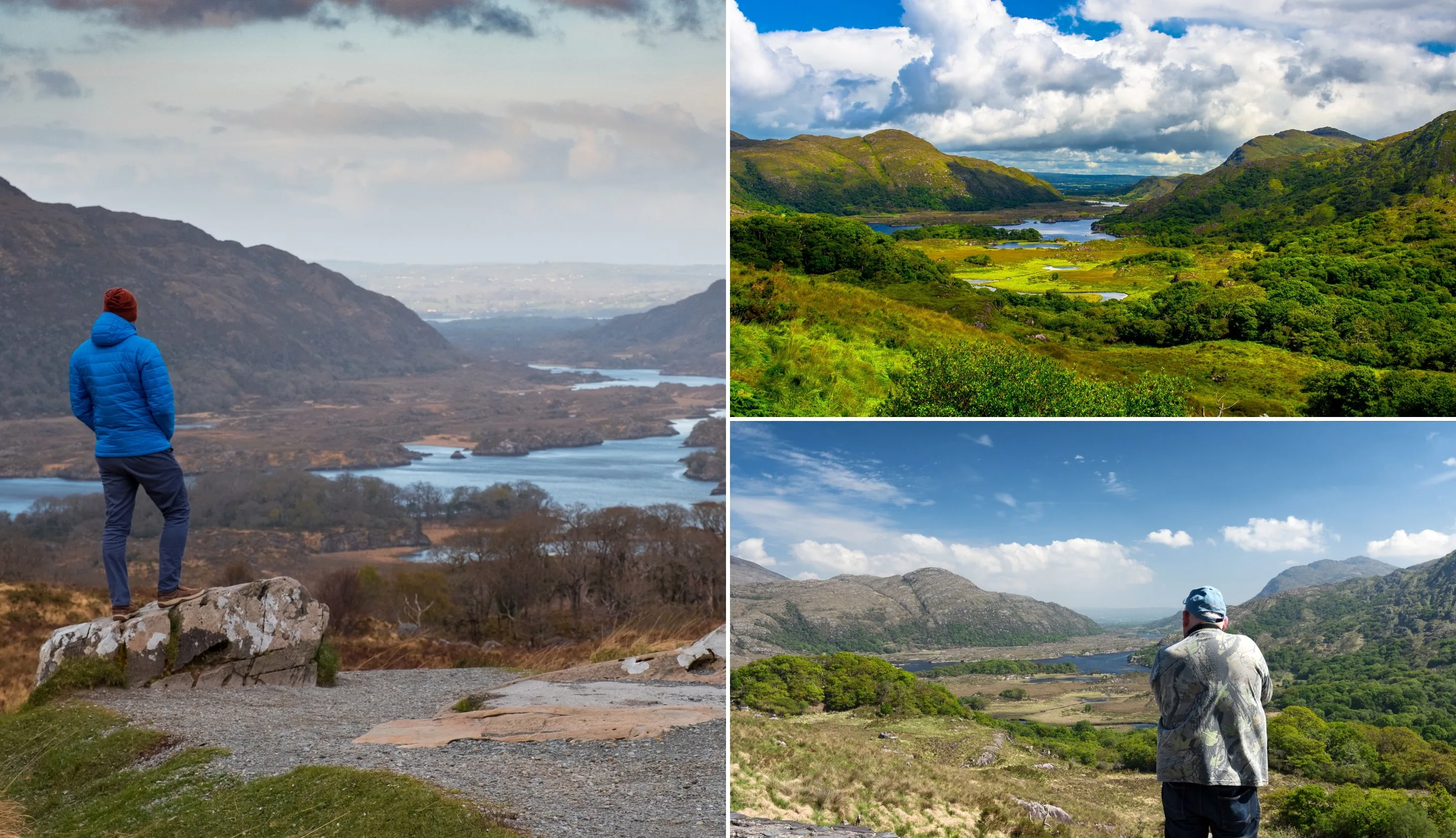
Photos via Shutterstock
Ladies View is one of the most popular stops on the Ring of Kerry, with roadside parking directly facing the view.
The viewpoint was named in honour of Queen Victoria’s ladies-in-waiting who were in awe when they visited in 1861 during a royal visit.
The view looks out over the Upper Lake with mountains rising up on either side. From Molls Gap and Ladies View, you’ll have views over the Black Valley, an isolated valley which was the last place in Ireland to get electricity!
From the previous viewpoint, try to spot the wonderful lakes of Killarney. There are three lakes in total: Lough Leane, Middle Lake (also called Muckross Lake), and Upper Lake.
Ladies View has fantastic vistas of the Upper Lake.
Stop 9: Torc Waterfall
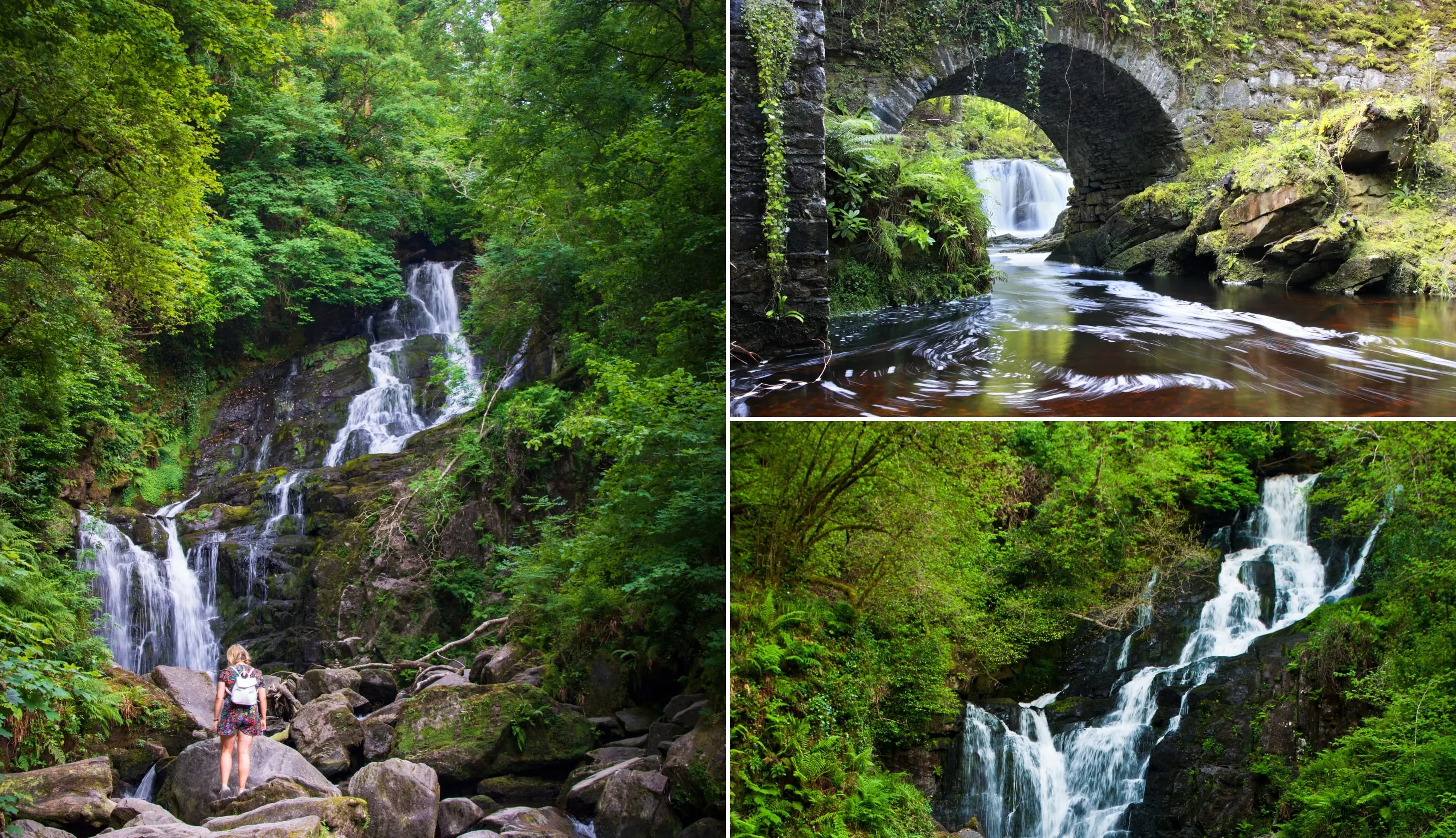
Photos via Shutterstock
According to local folklore, Torc Waterfall was home to a man who was cursed by the devil to turn into a boar each night.
When his secret was revealed by a farmer, the man burst into flames and retreated to the Devil’s Punchbowl.
The waterfall is breathtaking, tumbling for around 20 metres down rocks and boulders.
Stop 10: Back to Killarney for the night

Photos via Shutterstock
After the waterfall, the tour makes its way back to Killarney.
It’s been a long day and, luckily enough, there’s plenty of places to kick-back in for a fine feed and a tipple.
Our dinner recommendations
There are some exceptional restaurants in Killarney. Our favourites are the Mad Monk (they serve amazing seafood like sizzling crab claws and deep water prawn tagliatelle), Kitty O’Se (splash out on the Seafood Tower to share), and Murphy Browns (hearty Irish dishes like roasted duck and fish and chips).
Our pub recommendations
There’s some mighty old-school pubs in Killarney, too. For post-dinner drinks, head to JM Reidy’s, the Laurels Pub, or O’Connors.
They all have a traditional pub feel and are a great choice for a pint. JM Reidy’s has a lovely courtyard which is great in the summer, and O’Connors is perfect if you feel like cocktails.
If you want to hear some live music, JM Reidy’s and O’Connors often have live music sessions.
Day 5: Limerick City
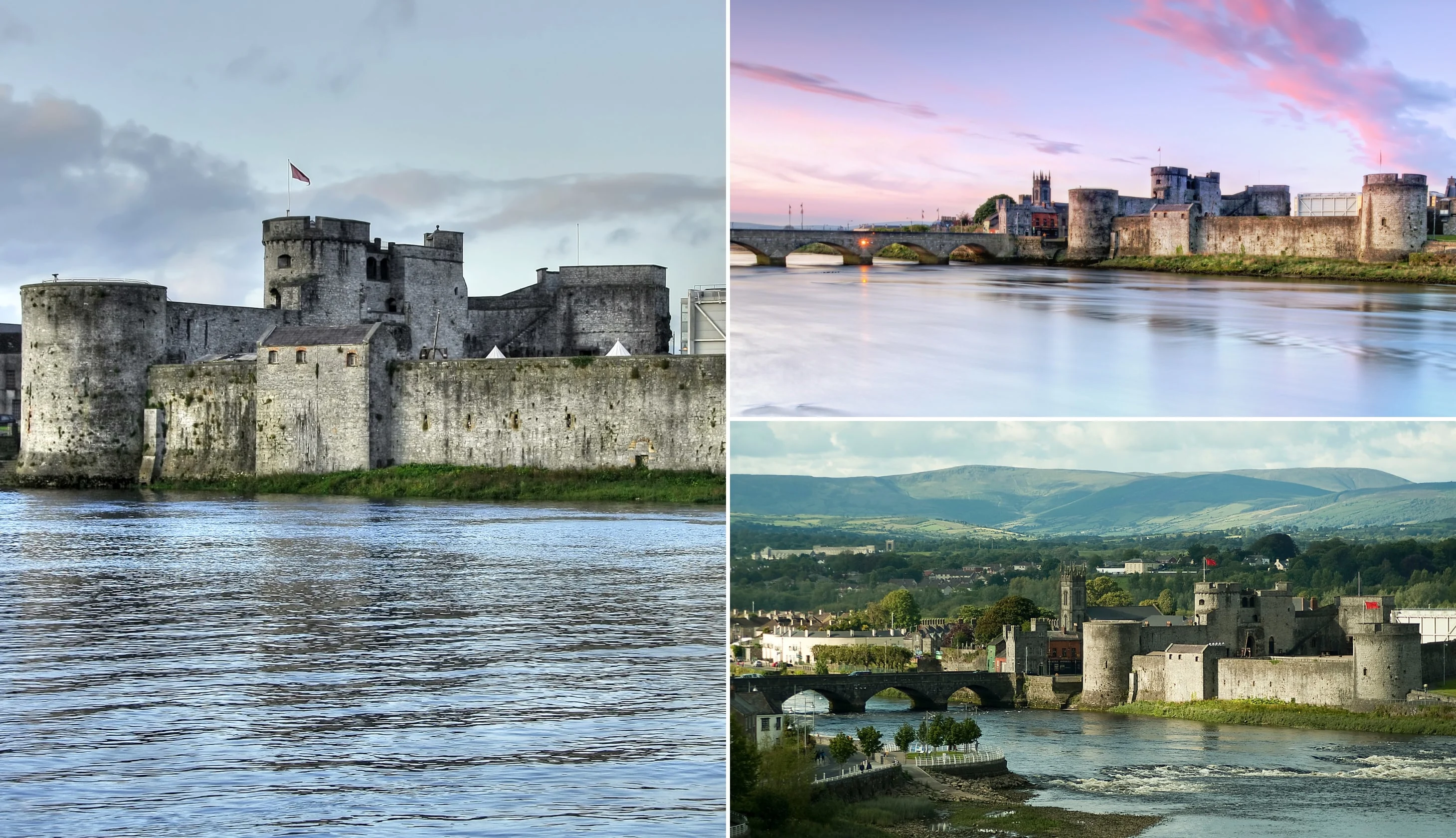
Photos via Shutterstock
Today we are heading to Limerick City, where we will spend two nights. Grab some breakfast at your accommodation or nearby, and then head out.
If you’re keen to eat somewhere in Killarney, we usually stop by Mug and Bean or Curious Cat whenever we’re in town.
Recommended accommodation in Limerick
- Budget: Woodfield House Hotel (15-minute walk from the city with excellent reviews) and Shelbourne House (cosy spot 20 minutes walk from the castle)
- Mid-range: Limerick City Hotel (very central hotel near the river) and The Bedford (very central boutique townhouse with exceptional reviews)
- Luxury: The Savoy Hotel (central, boutique 5-star) and The George (central spot on O’Connell Street in Limerick city centre)
Getting to Limerick City from Killarney
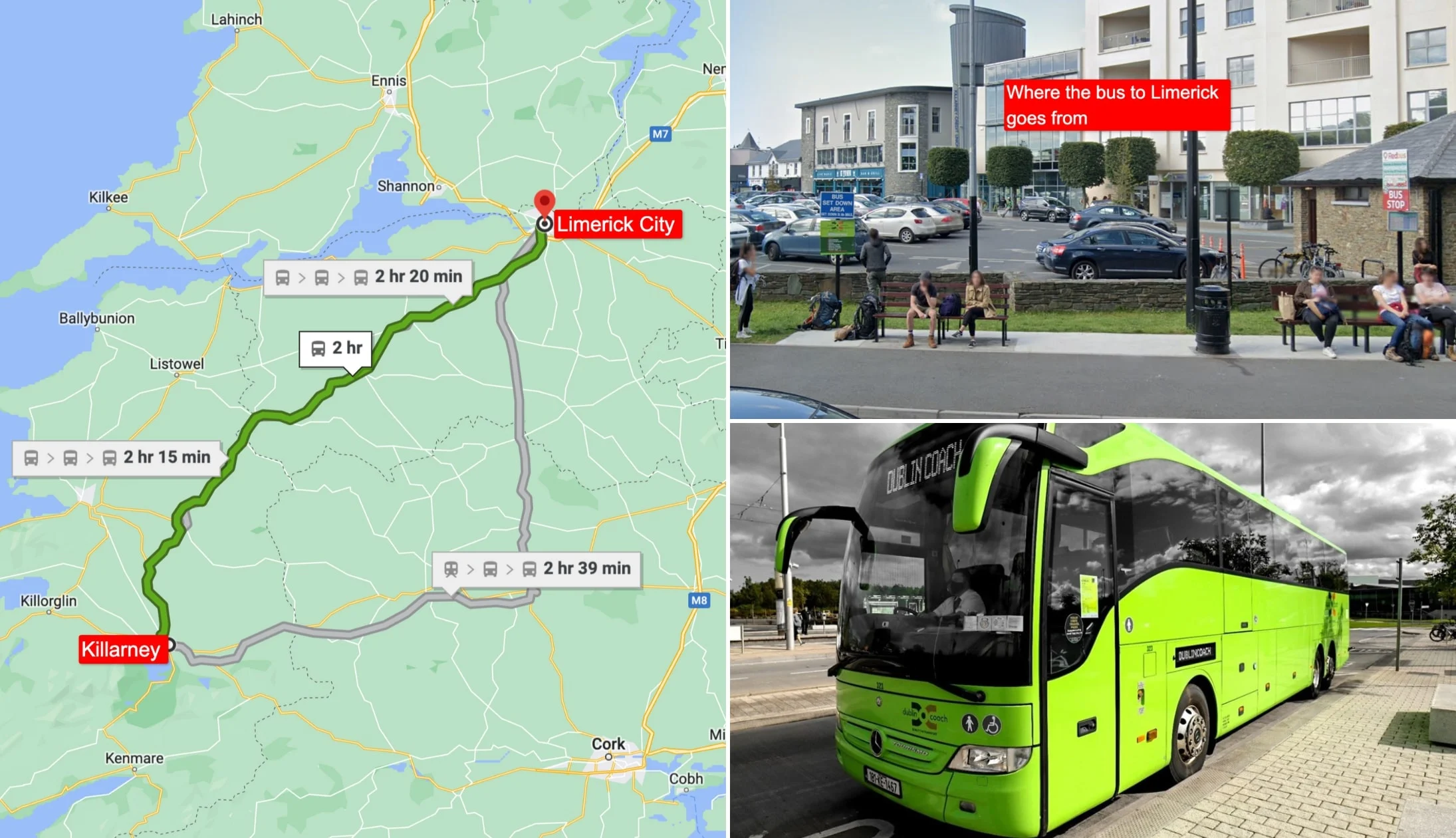
Photo left and top right: Google Maps. Bottom right: Dublin Coach
As always, with either of the options below, it’s important to book your tickets online in advance of your departure.
Option 1: Bus
We recommend that you take the Dublin Coach to Limerick from Killarney. I know what you’re thinking, Dublin Coach? But I’m in Killarney going to Limerick! That’s the name of the bus company. They are big green buses that are comfortable, affordable and quick. The trip from Killarney to Limerick takes 1 hour and 40 minutes. The bus stops a couple of times, so make sure you get off at the right stop, but the drivers are friendly and will help you out.
Option 2: Train
You can technically take the train from Killarney to Limerick, but we recommend that you take the bus instead. The train between the two takes at least three hours and has two changes (usually Limerick Junction and Mallow). The bus is a lot quicker and more straightforward.
Stop 1: St Mary’s Cathedral
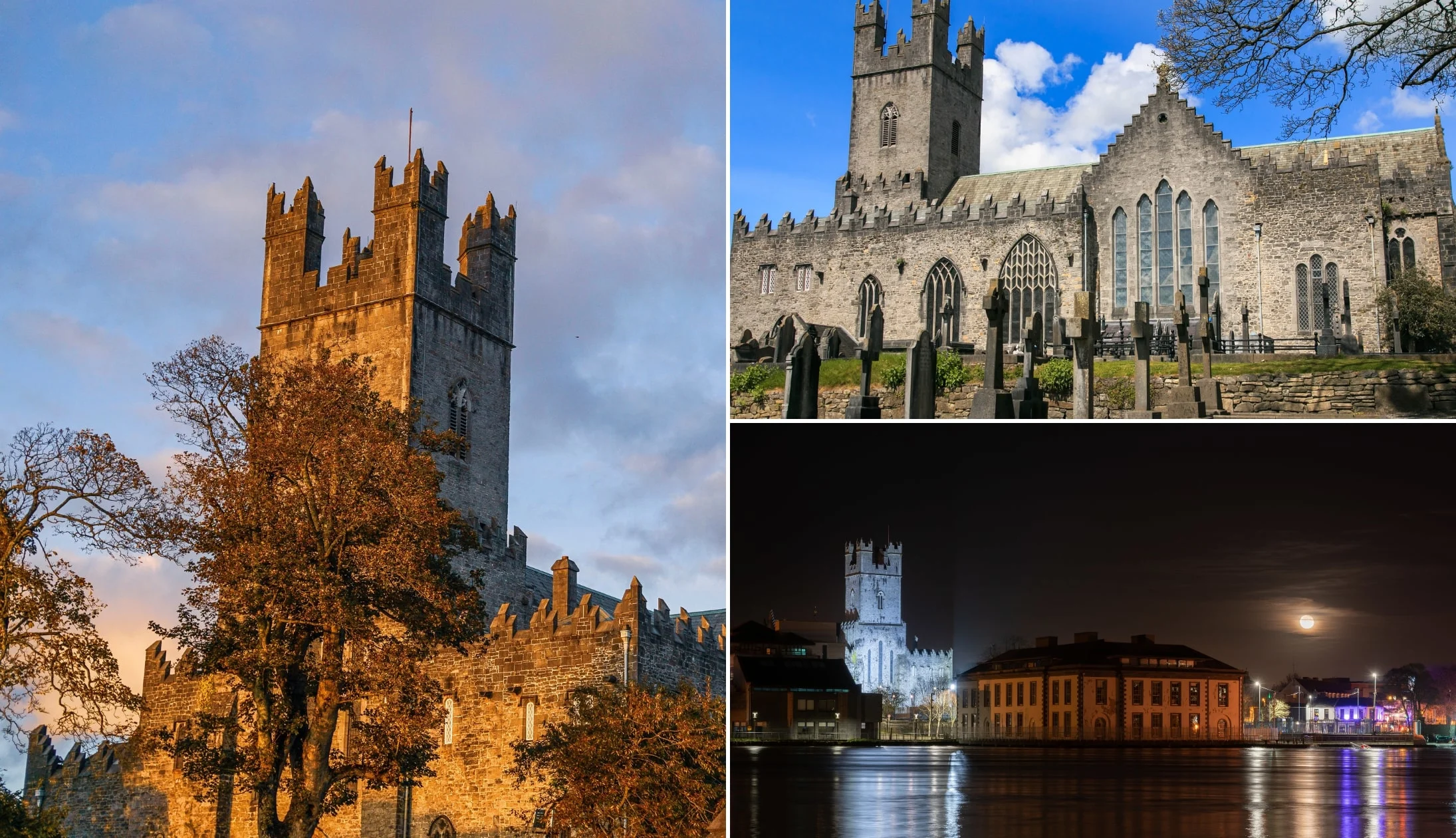
Photos via Shutterstock
Once you’ve arrived, drop off your bags if you can, then head over to St. Mary’s Cathedral. The cathedral was founded in 1168, making it even older than King John’s Castle (which you’ll see later) and the oldest building in Limerick that’s still in use today!
The cathedral contains six chapels, but if you’re pressed for time, the Lady Chapel is a must-visit. The Lady Chapel contains its original pre-reformation altar, which is four metres long and weighs three tons. During the mid-1600s, the altar was removed and dumped by Oliver Cromwell’s troops when they captured the city. But, by some miracle, it was recovered in the 1960s and reinstated to its rightful place.
Another highlight of St. Mary’s Cathedral is its misericords (small wooden carvings). They are the only complete set in Ireland and the only remaining pre-Elizabethan carvings.
Stop 2: Lunch
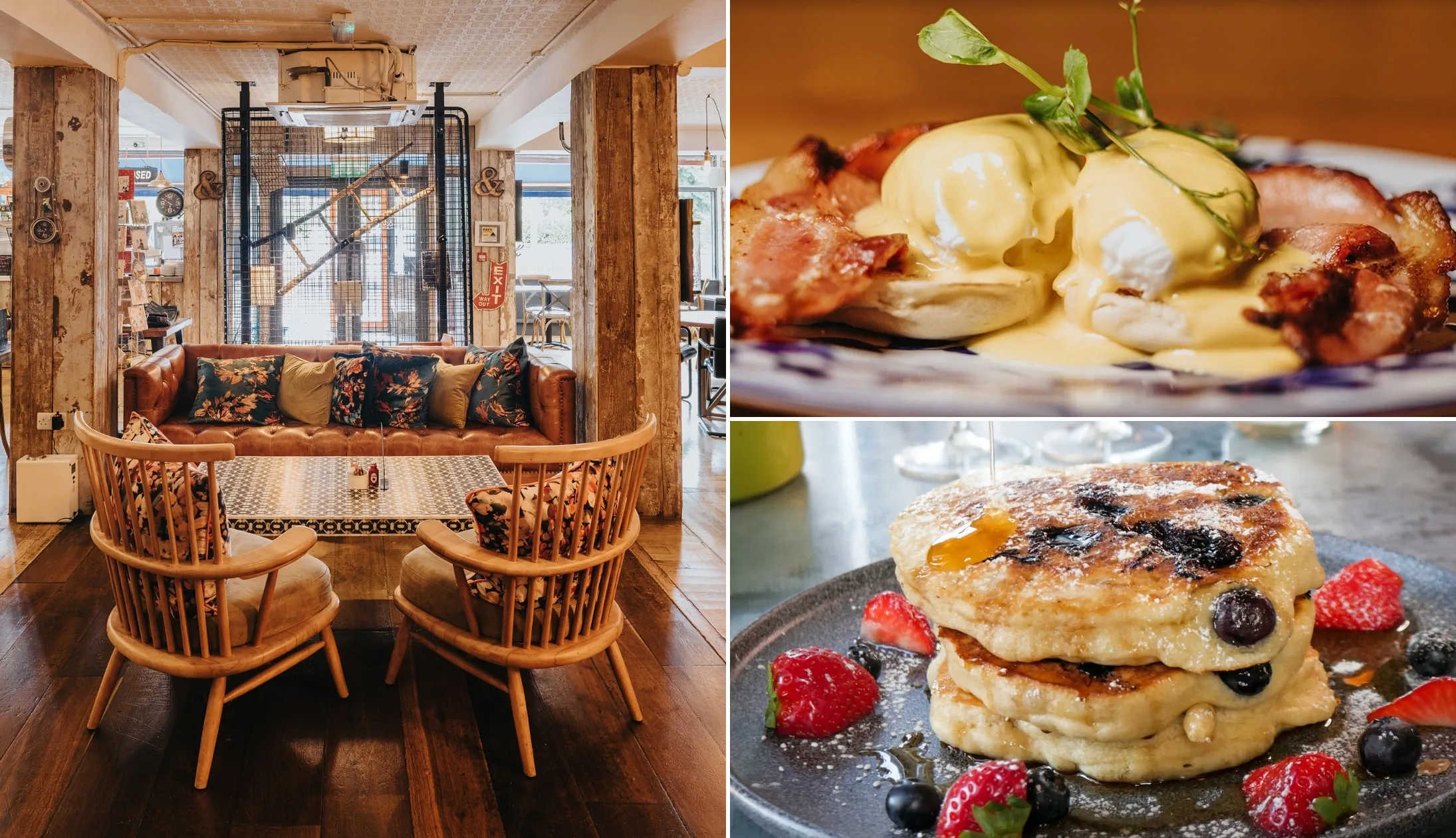
Photos via Hook and Ladder on FB
It’s probably close to lunchtime by now and we’ve got a couple of suggestions for you. We usually head to Coqbull, The Buttery, or the Hook and Ladder when we’re in the city. Coqbull is a casual dining restaurant serving up top-notch burgers and wings. The Buttery is our go-to for brunch, and the Hook and Ladder (the one on Sarsfield Street) has delicious sandwiches and a mouth-watering vegan burger.
Stop 3: King John’s Castle

Photos via Shutterstock
Head off to King John’s Castle, a 10-minute walk from the centre of the city. The 13th-century castle sits on King’s Island, on the banks of the River Shannon. The castle is in fantastic condition and is one of Europe’s best-preserved Norman castles.
King John’s Castle was built under the orders of King John, the “Lord of Ireland” and Richard the Lionheart’s brother. It was built between 1200 and 1212, with numerous repairs and extensions over its 800-year history.
The castle was a military stronghold with solid curtain walls, turrets, and strong fortifications. However, despite this, it sustained heavy damage during the 1642 siege of Limerick (the first of five Limerick sieges during the 17th century). There’s a fantastic exhibition on the siege inside the castle if you’d like to learn more.
Most people spend around one and half hours visiting the castle and visitor centre. You can have a look at the interactive exhibits, try on historical costumes, and in the summer, play Medieval games in the courtyard!
Stop 4: Treaty City Brewery
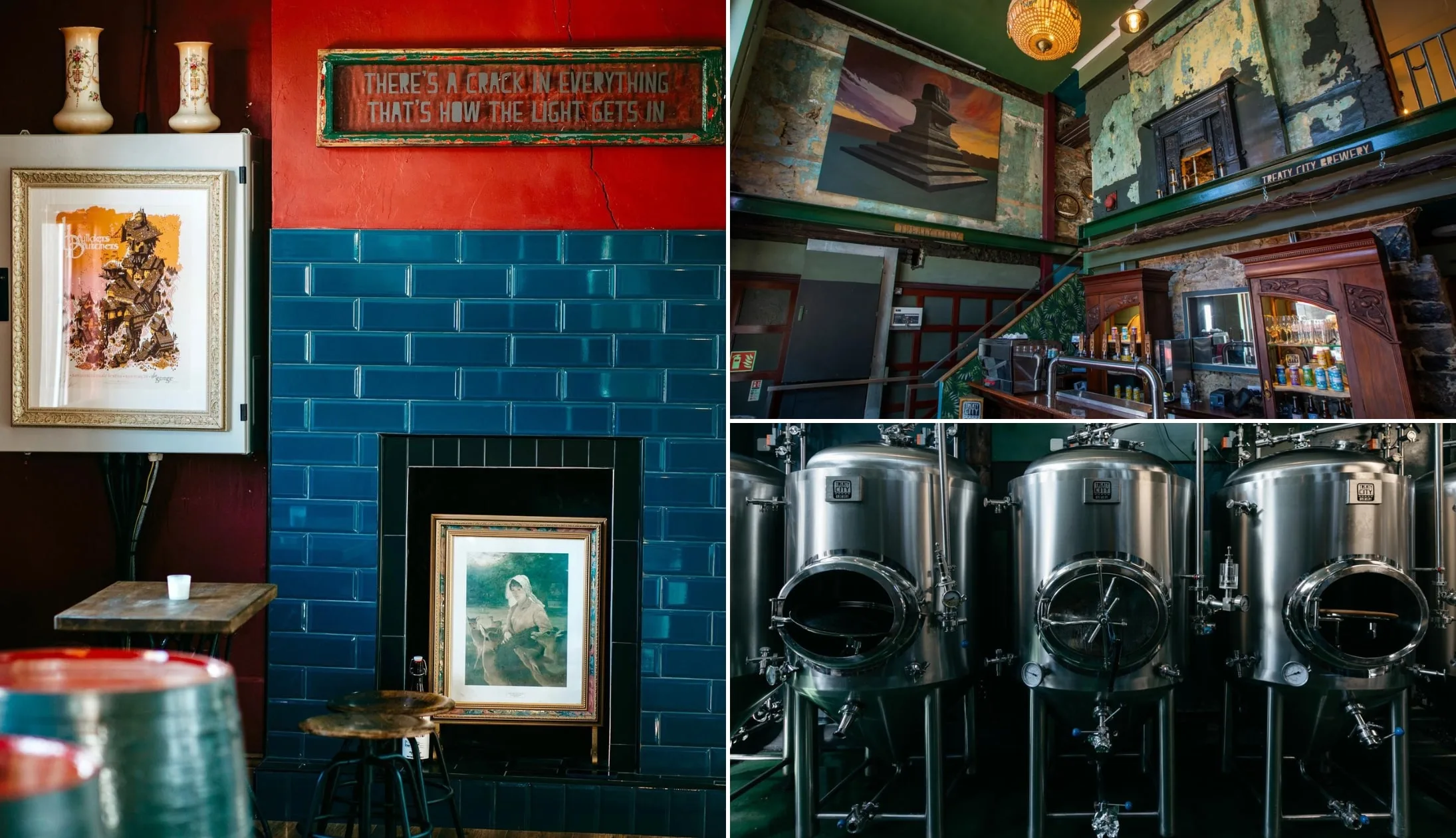
Photos via Treaty City Brewery on FB
The Treaty City Brewery is right across from King John Castle. It is inside what used to be a derelict building that was transformed into a beautifully modern brewery.
They offer an Ultimate Tour, where guests will be shown around the artisan brewery, learn about the brewing process from Master Brewers, followed by a complimentary beer tasting!
Stop 5: The Hunt Museum
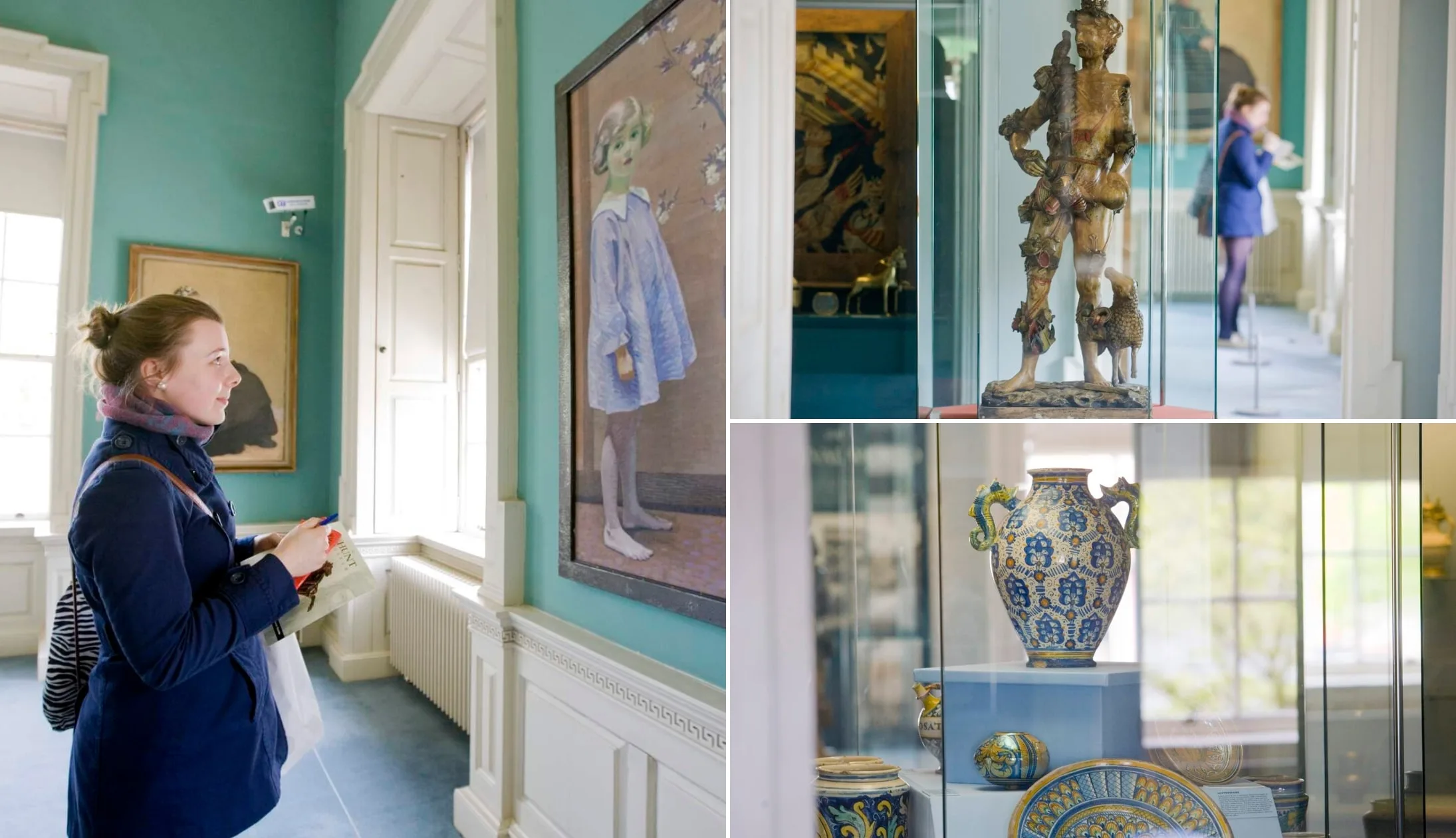
Photos via Tourism Ireland’s Content Pool
It’s time to walk another 3 minutes to the Hunt Museum. Again, you probably already passed it on your way to the castle.
The Hunt Museum was established after John and Gertrude Hunt decided to donate items from their personal collection to the people of Ireland.
The museum has a large collection with over 2,500 artefects, including pieces from Ancient Egypt and Stone-Age Ireland. Highlights of the collection include works by Picasso and dresses by famous Irish fashion designer Sybil Connolly.
Recently, the museum launched the “Museum in a Garden”, a beautiful garden dotted with 3D printed replicas of historical artefacts (you can grab a ticket online here).
Stop 6: Dinner, drinks and live music
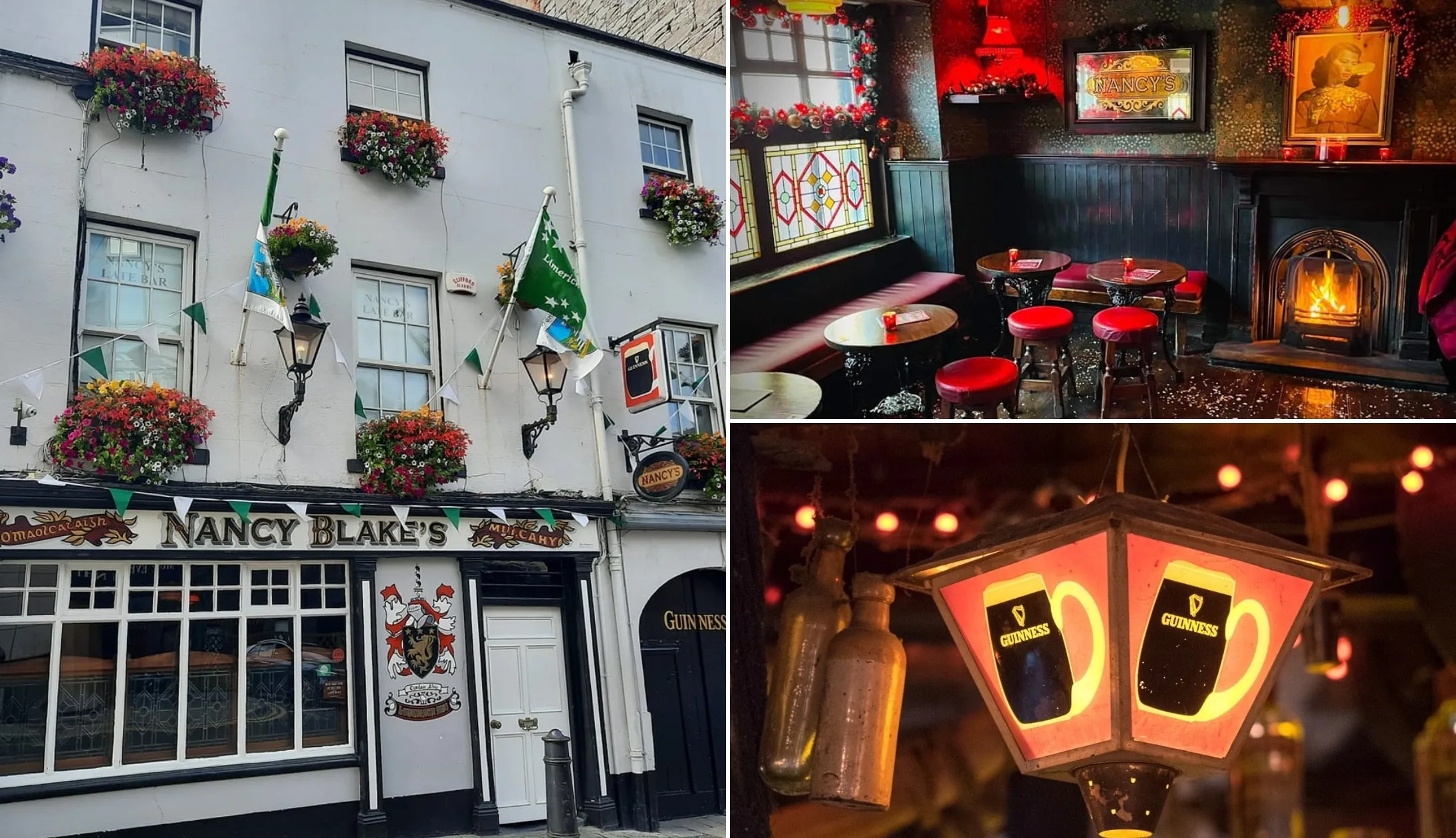
Photos via Nancy Blakes on FB
There’s some excellent restaurants in Limerick and there’s some mighty old-school pubs in Limerick, too.
Our Limerick food recommendations
Our absolute favourite spot for dinner is the Curragower. It’s right on the banks of the River Shannon with beautiful views of King John’s Castle across the water.
Grab some delicious pub grub like the roasted lamb rump or the lightly breaded scampi, then stick around for some pints after dinner.
Otherwise, we also like SpitJack (the rotisserie pork belly is a customer favourite) and The Locke (they have a delicious steak and ale pie and great vegetarian options).
Our Limerick pub recommendations
For drinks, again, we love the Curragower but Tom Collins is another lovely pub.
Another great trad pub is Nancy Blakes and depending on the night, they might have some music on. However, if you don’t mind heading a little out of the city centre, then Charlie Malones is a must-visit.
In our opinion, it’s one of Limerick’s best-kept secrets, with a real old-school pub vibe.
Limerick is a great city for trad music. The Locke often has music and even dancing on some nights if you’re lucky! Dolans is also great, but it’s a short walk from the city centre.
Day 6: The Clare coast
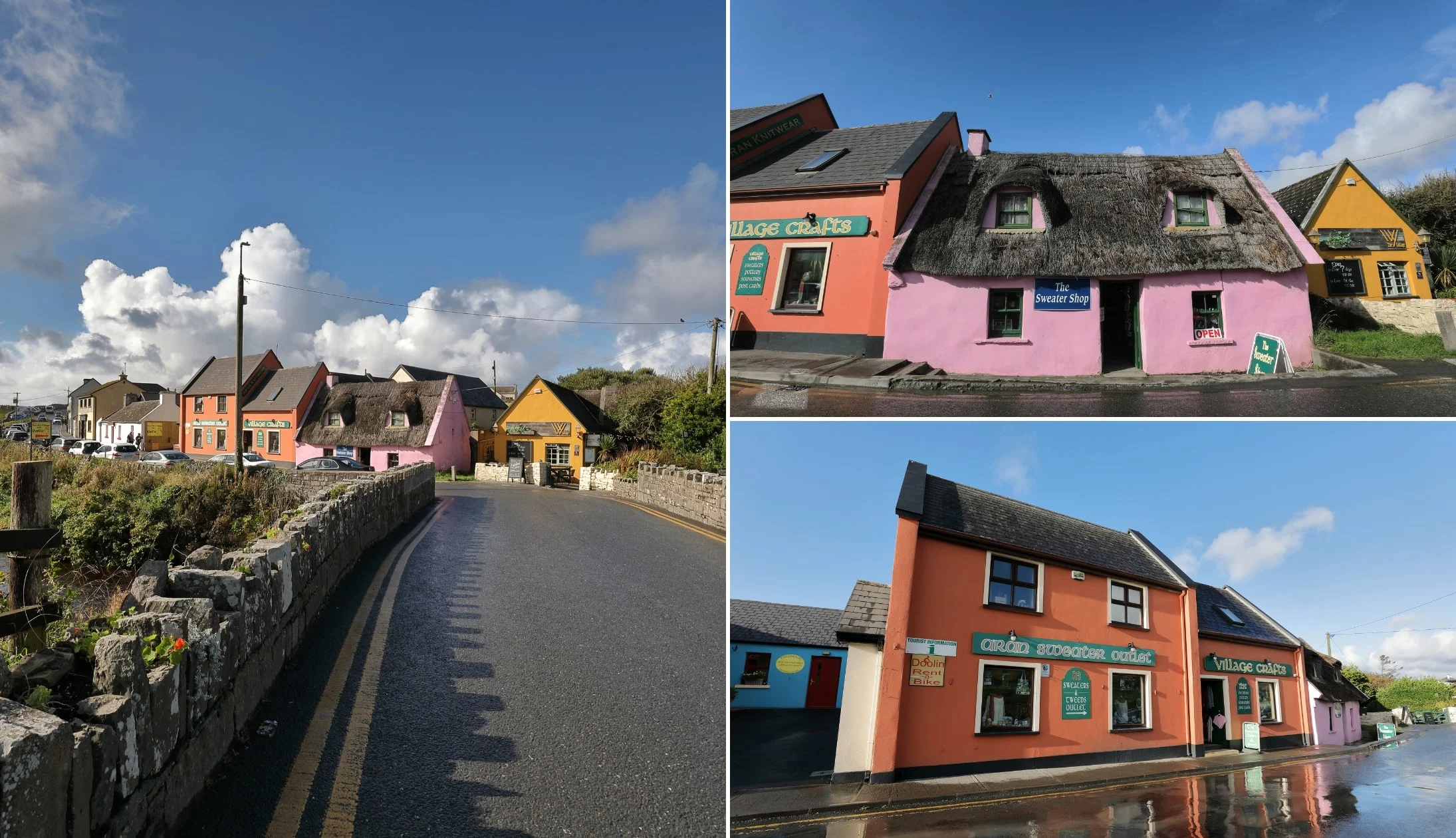
Photos courtesy of Chaosheng Zhang
Today, you’re going on an 8-hour adventure-filled tour of one of Ireland’s most popular natural attractions, the magnificent Cliffs of Moher!
First thing first, get yourself some breakfast either at your accommodation or nearby.
We are big fans of Hook & Ladder. They have several locations within Limerick, but the one on Sarsfield Street is a stone’s throw from where the tour begins, plus they open at 8am.
We’re going to give you an outline of the tour below. It’s an 8-hour trip departing from Arthur’s Quay at 9:15am.
Keep reading below for an overview of the tour, but please note that 1. You may not always physically stop at all of these sights, and 2. These tours are subject to change, so always check with the provider in advance.
Stop 1: Cliffs of Moher
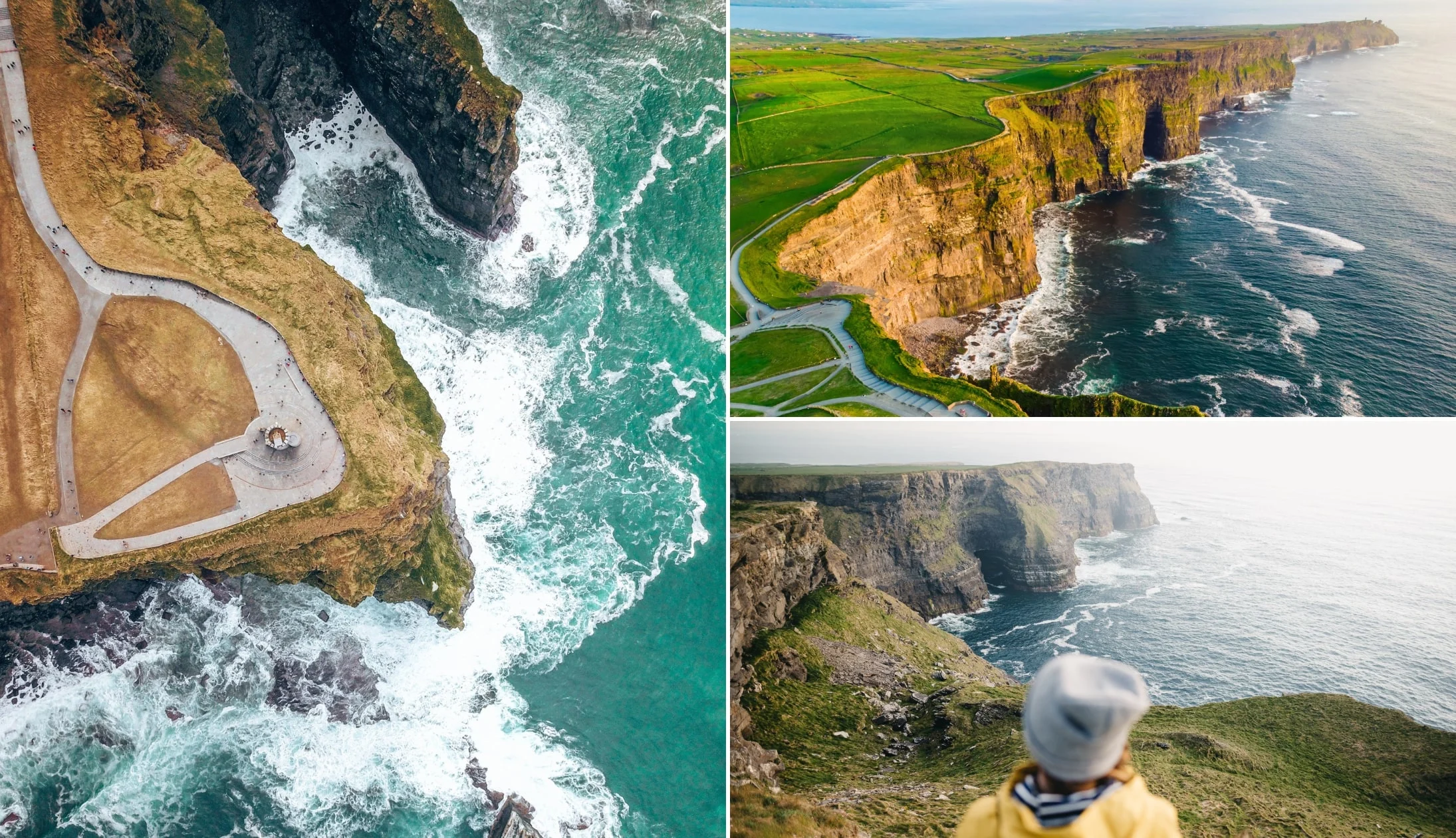
Photos via Shutterstock
Your first stop of the day is the Cliffs of Moher and, from what we can tell, we think you’ll have around one and a half hours here to explore the site.
The cliffs are an iconic attraction, with breathtaking views of the wild Atlantic, Galway Bay, and the Aran Islands.
There’s a visitor centre on-site, as well as 800 metres of paved walkways with viewing areas and the historic O’Brien’s Tower.
Stop 2: Lunch in Doolin
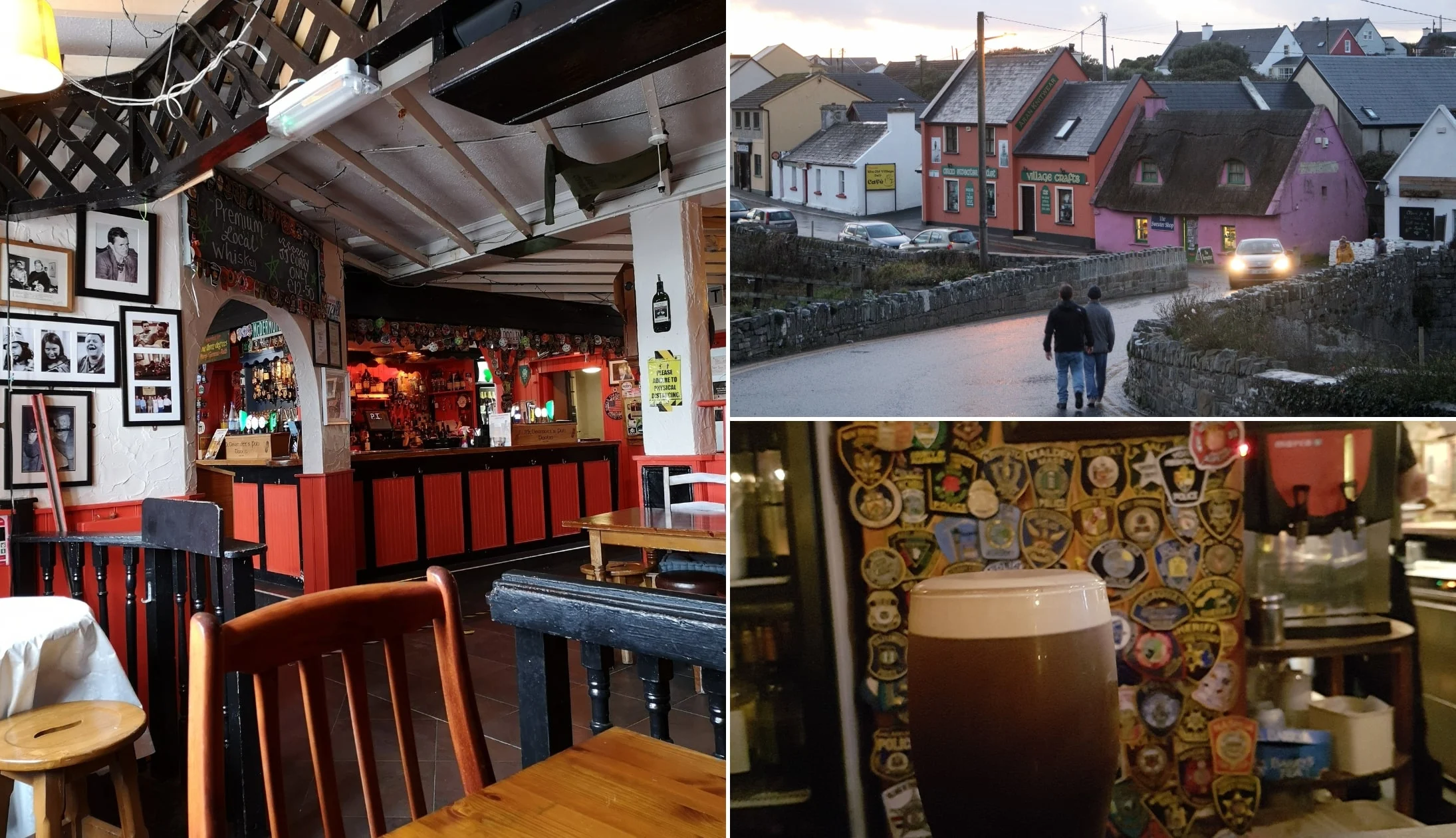
Photos by The Irish Road Trip
You’ll be stopping for lunch in Doolin, a coastal village just a short drive away from the cliffs. Doolin is filled with great pubs and you’ll have the chance to enjoy a typical pub lunch here. If it’s on the menu, we recommend trying a traditional seafood chowder or a warming Guinness and beef stew! Please note that lunch isn’t included in the ticket price.
As you make your way toward Bunratty Castle, you’ll pass by Galway Bay, where you may be able to spot distant islands, or, at the very least, take in the lovely views.
Stop 3: The Burren
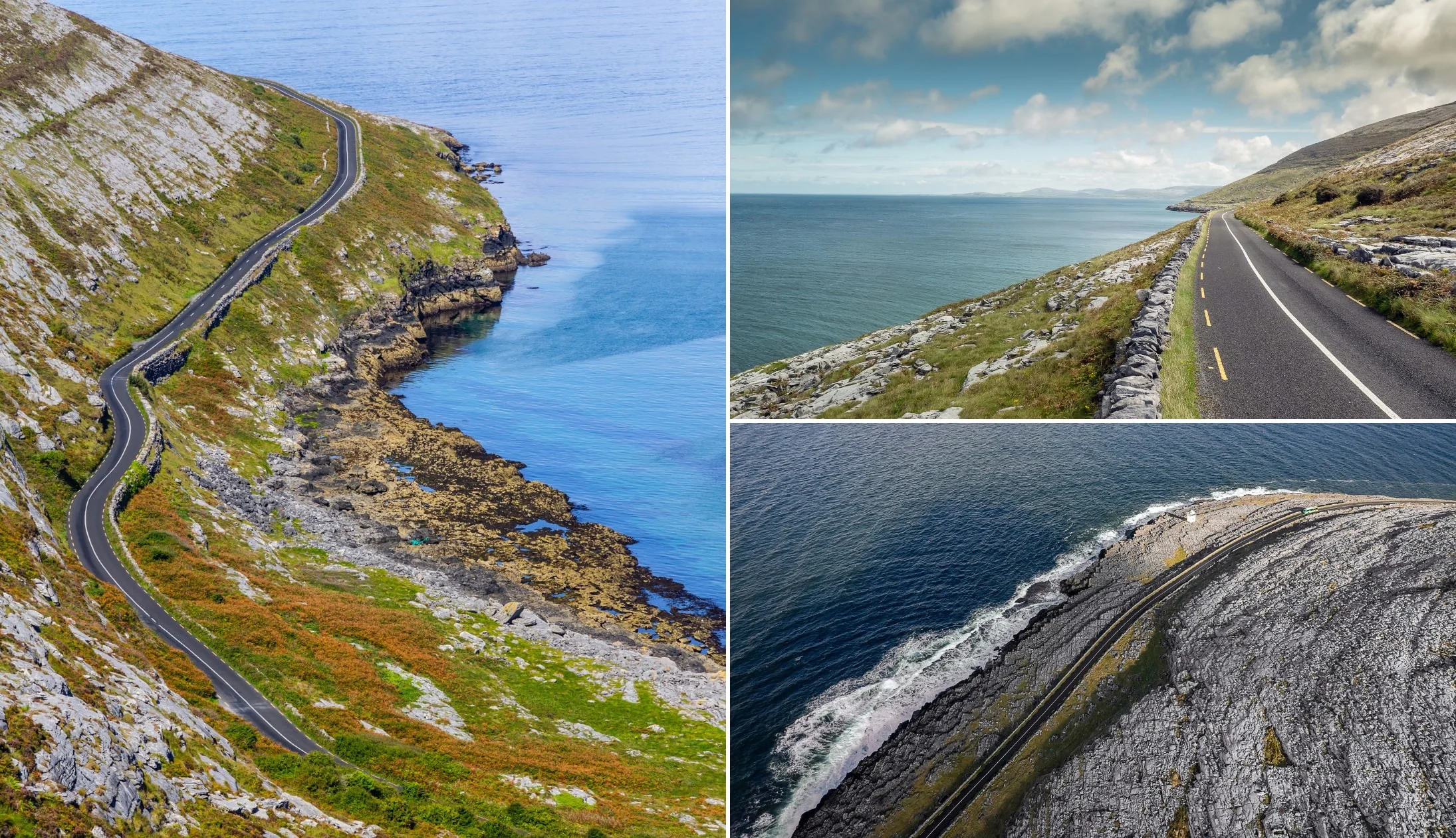
Photos via Shutterstock
The Burren is another scenic drive by on your way to Bunratty Castle.
It is a gorgeous landscape, characterised by huge limestone plateaus and what is known as a karst landscape, a distinct landform that arises when carbonate rock (such as dolomite, marble, or limestone) is slowly dissolved by water, giving the land its unique shape. In fact, the Burren is still being shaped by the rain to this day!
Karst landscapes have sinkholes, caves, and underground streams, the Burren being no exception, with huge subterranean caverns below its surface. The Burren is one of the best examples of karst landscapes worldwide, and it has a diverse range of flora and fauna thanks to its varied landscape.
Stop 4: Bunratty Castle
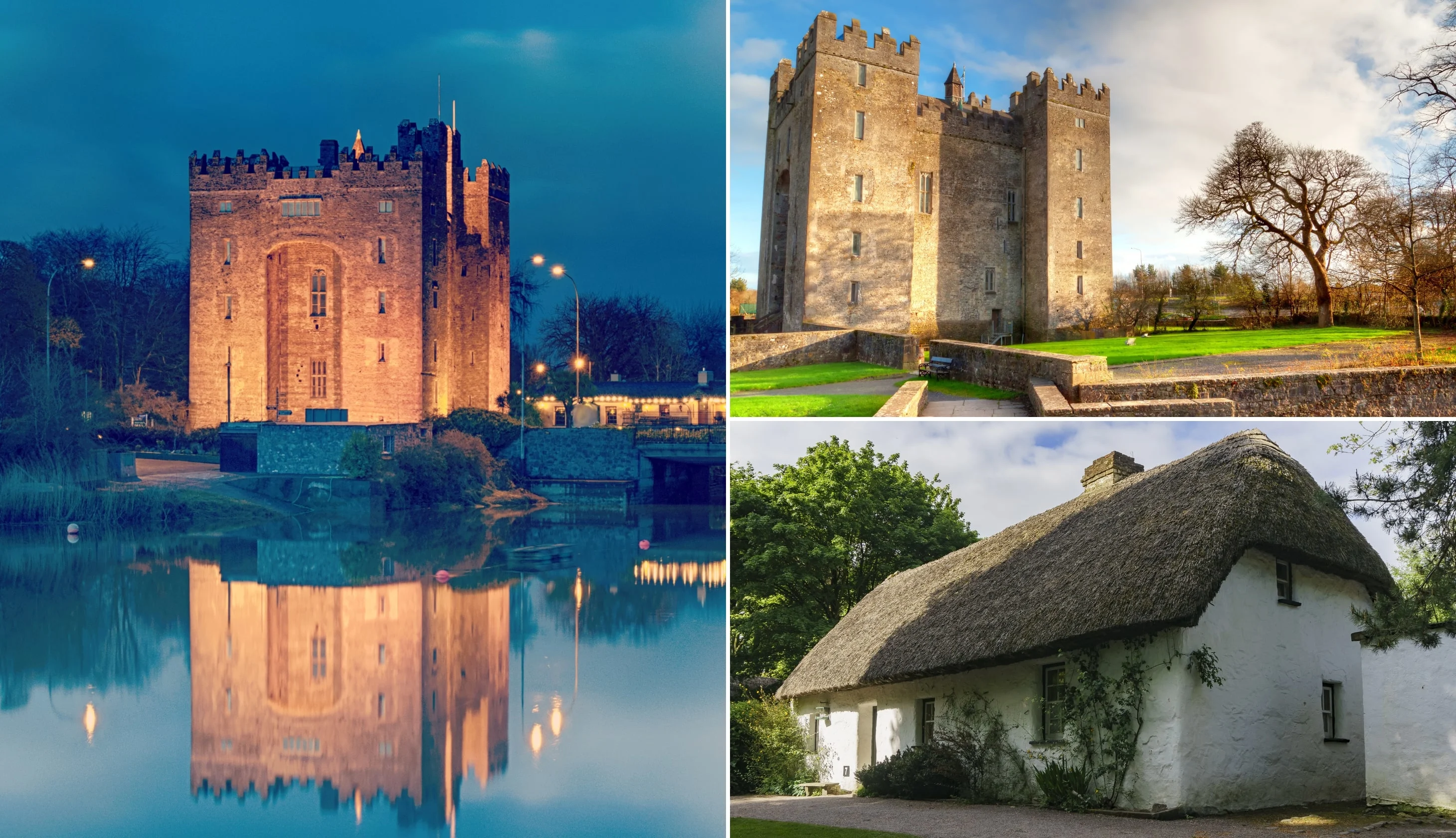
Photos via Shutterstock
Your final stop is at Bunratty Castle, a 15th-century castle and the last of four castles built on the site.
Bunratty Castle and Folk Park sit on 26 acres of lovely countryside. Visiting the Folk Park feels like stepping back in time as the 19th-century buildings and streets have been recreated to resemble what they would have originally looked like.
However, prior to the castles being built, the site was home to a Viking trading camp in 970.
Stop 5: Back to Limerick for the night
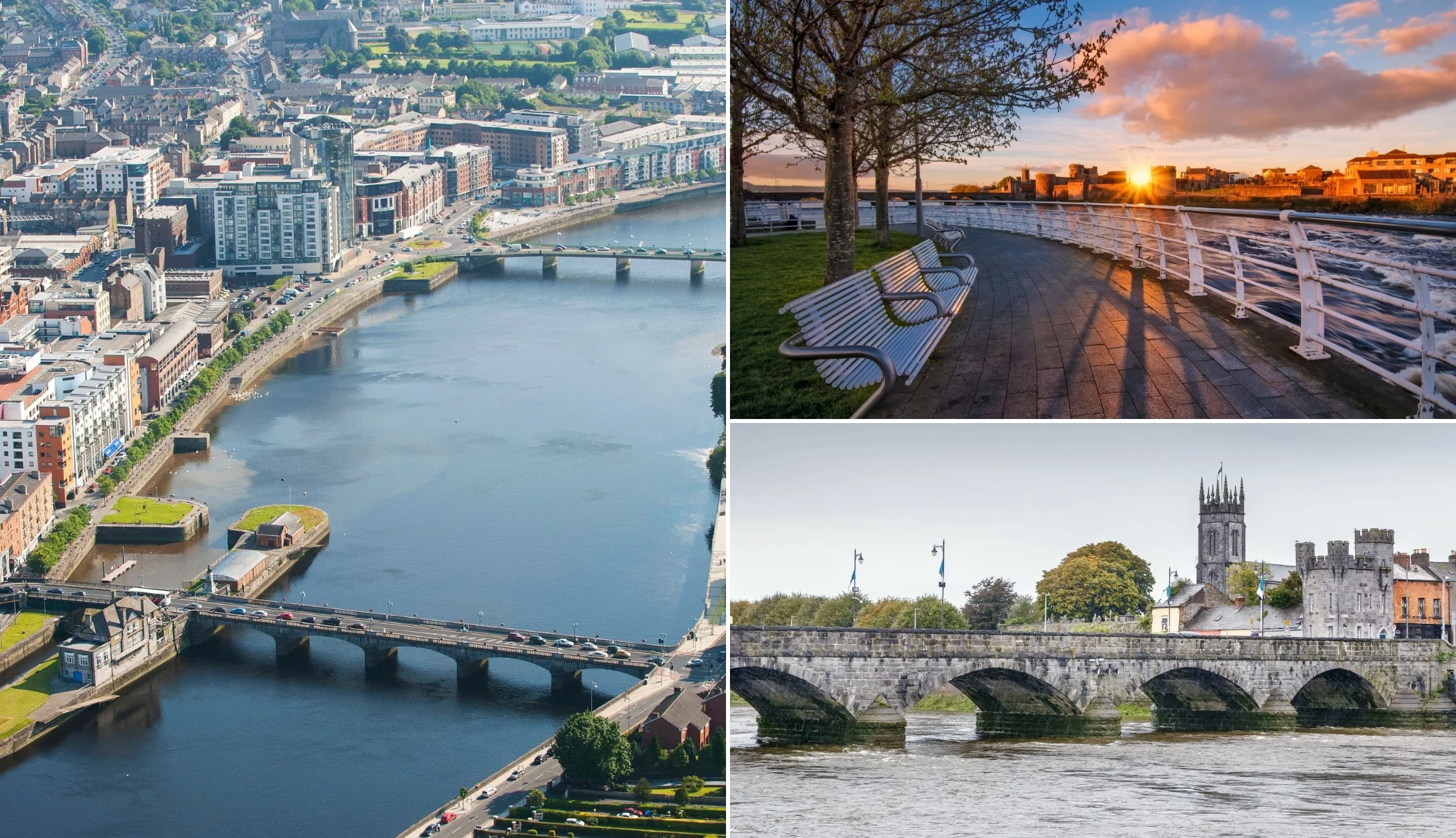
Photos via Shutterstock
From the castle, it’s a short 20-minute drive back to Limerick City where you’ll be dropped off at the pick-up point, Arthur’s Quay.
There’s some excellent restaurants in Limerick and there’s some mighty old-school pubs in Limerick, too.
Our Limerick food recommendations
Our absolute favourite spot for dinner is the Curragower. It’s right on the banks of the River Shannon with beautiful views of King John’s Castle across the water.
Grab some delicious pub grub like the roasted lamb rump or the lightly breaded scampi, then stick around for some pints after dinner.
Otherwise, we also like SpitJack (the rotisserie pork belly is a customer favourite) and The Locke (they have a delicious steak and ale pie and great vegetarian options).
Our Limerick pub recommendations
For drinks, again, we love the Curragower but Tom Collins is another lovely pub.
Another great trad pub is Nancy Blakes and depending on the night, they might have some music on. However, if you don’t mind heading a little out of the city centre, then Charlie Malones is a must-visit.
In our opinion, it’s one of Limerick’s best-kept secrets, with a real old-school pub vibe.
Limerick is a great city for trad music. The Locke often has music and even dancing on some nights if you’re lucky! Dolans is also great, but it’s a short walk from the city centre.
Day 7: The trip to Dublin
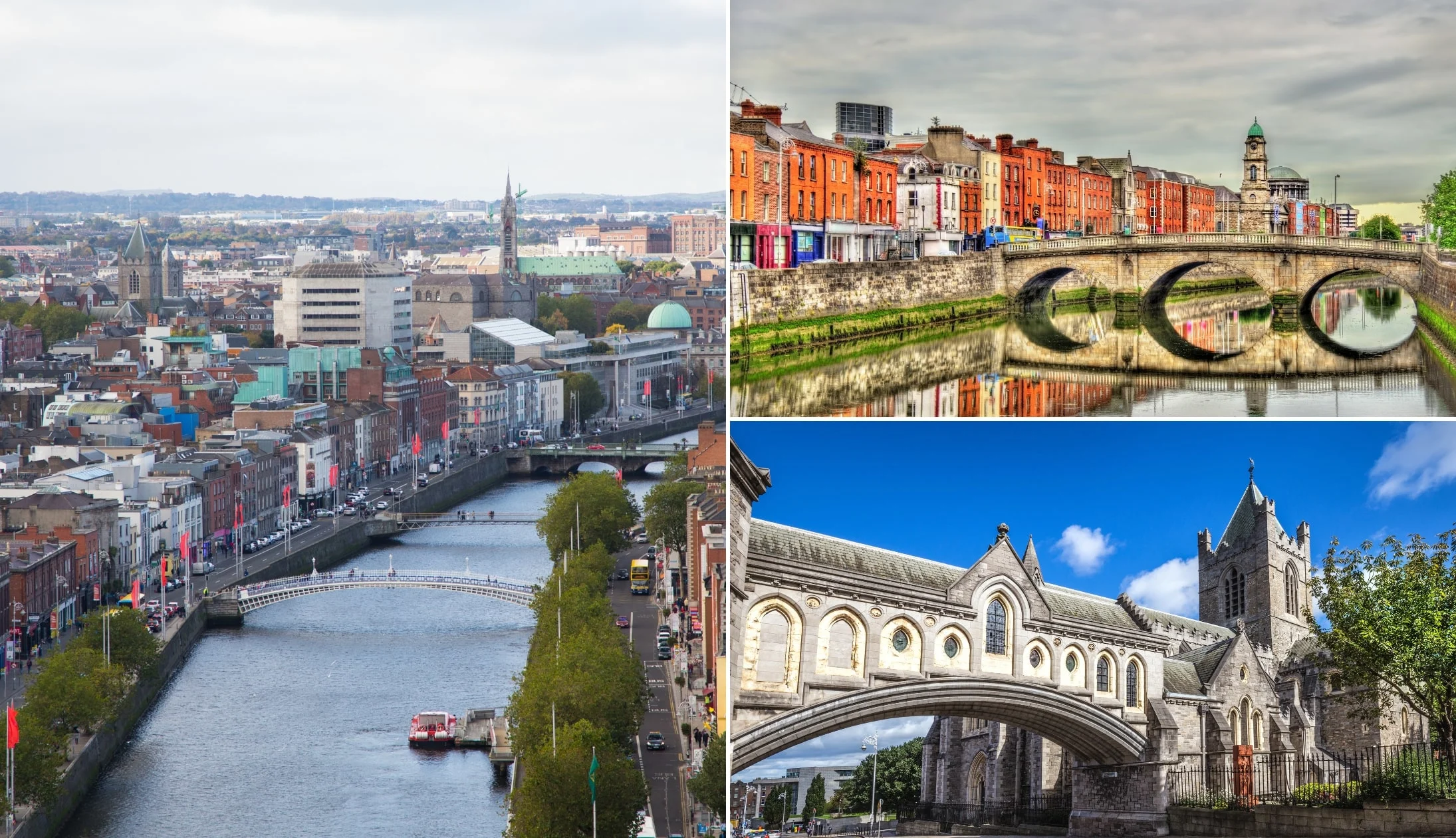
Photos via Shutterstock
On day 7, it’s time to say goodbye to Limerick City and head to Ireland’s vibrant capital, Dublin.
Get yourself some breakfast at your accommodation before you check out or if you have time, check out some of our earlier breakfast suggestions.
Recommended accommodation in Dublin
- Budget: Abigail’s Hostel (Temple Bar), Jacobs Inn (central hostel) and the Generator Hostel (short walk from city)
- Mid-range: Dublin Skylon Hotel (just outside the city), Wren Urban Nest (Temple Bar) and the Harding Hotel (very central)
- Luxury: The Merrion (St. Stephen’s Green – very central) and The Westin (just off Grafton Street)
Getting around Dublin + money savers
- Time savers: If you want to avoid walking where possible, it’s worth getting a ticket for the Hop On Hop Off Bus around Dublin. It goes to or near all of the main sites on this itinerary plus plenty more.
- Money saver: If you’re visiting the ‘main’ Dublin attractions, the Dublin Pass can save you €€€ (here’s how)
Getting to Dublin City from Limerick City

Photos via Google Maps
You have two options to get to Dublin – train or bus. We will go over both of them below. The bus is cheaper and more straightforward so we generally recommend it over the train.
Option 1: Train
You can take the train from Limerick Colbert to Dublin Heuston. Now, a warning – while there are some direct trains, others require you to change over, at Limerick Junction. Make sure to check this when you’re booking. Please note that when you arrive at Heuston you’ll then need to take a second train or a Luas tram to Connolly in the city centre.
Option 2: Bus
Dublin Coach operates a service between Limerick and Dublin that is fast and straightforward. The only thing we would say is that this is a very popular service so make sure to book ahead. If you just show up on the day, you might not be able to get a seat! The bus drops your right in the city centre, just off O’Connell Street.
Stop 1: Lunch
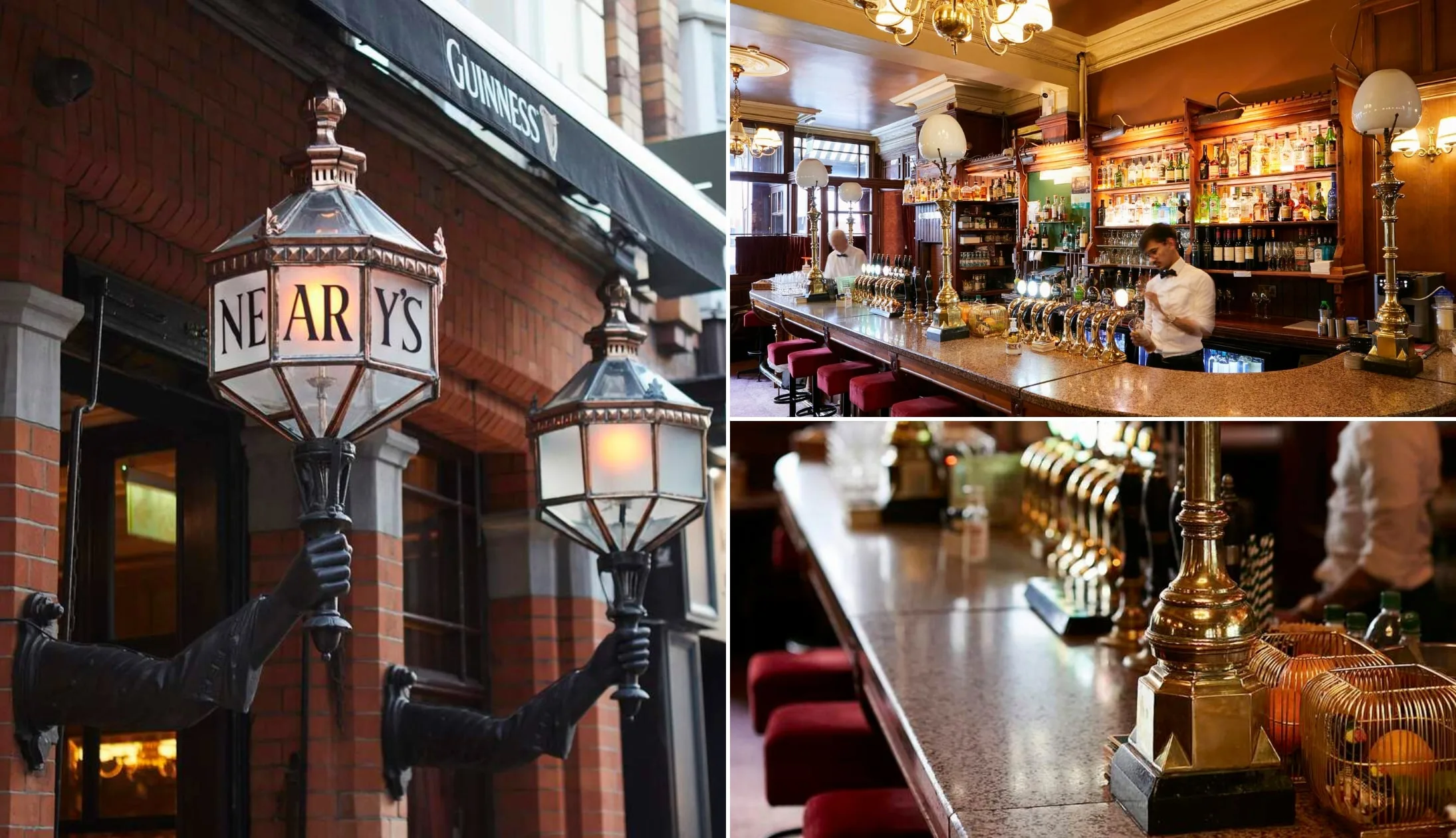
Photos © Tourism Ireland
There’s plenty of great restaurants in Dublin that serve up a delicious lunch, but if you fancy a tasty bite in a lovely old-world-style pub, Neary’s just off of Grafton Street is hard to bate!
They serve simple dishes (like soups and sandwiches) that are packed with flavour and great value for money. Alternatively, Sprout and Co. on Dawson St. is also a great choice.
They have a range of hearty salad bowls, with good options for vegetarians and vegans.
Stop 2: Trinity College
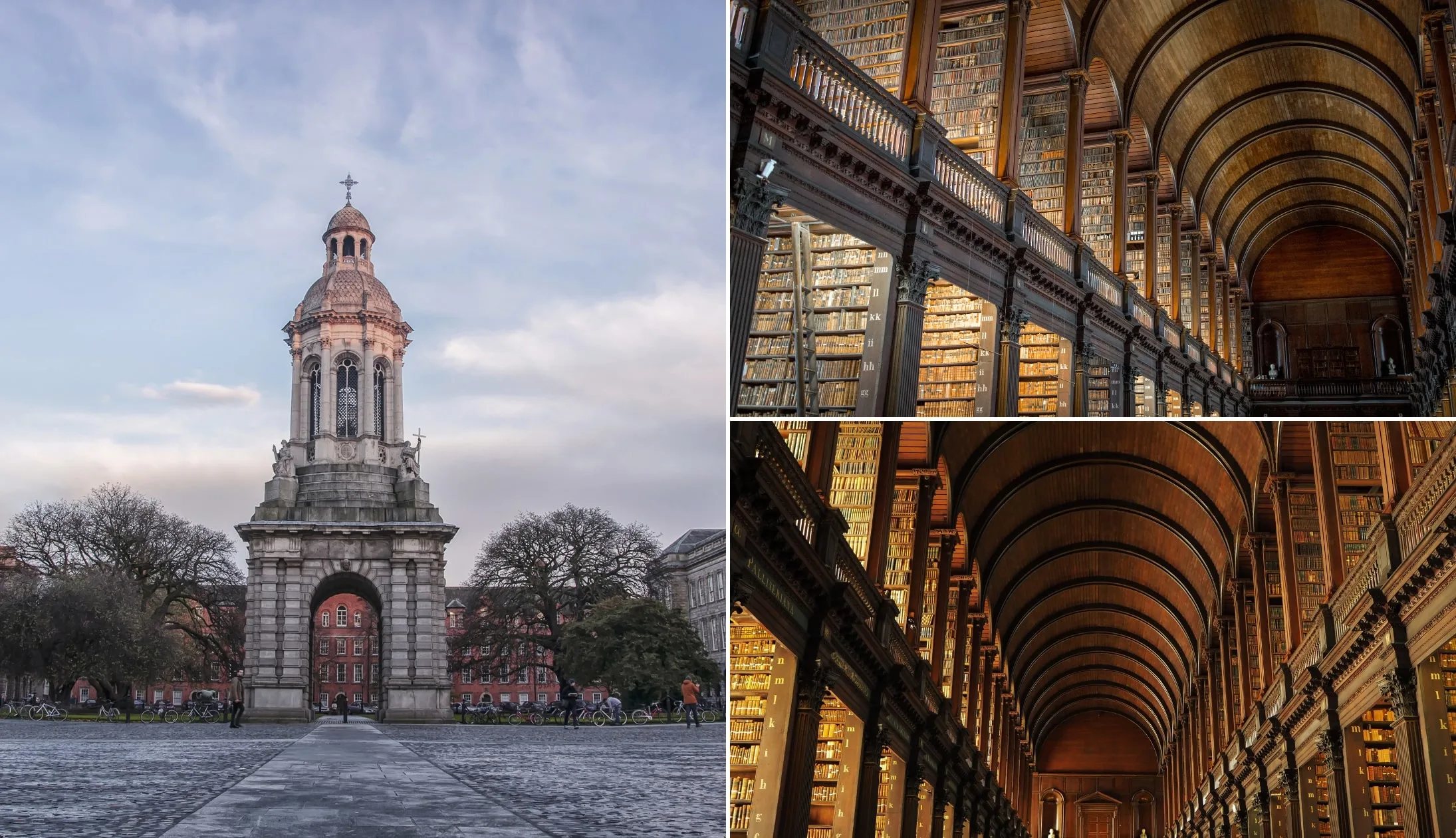
Photos via Shutterstock
Now you’re all fuelled up, it’s time to head to Trinity College to see the Book of Kells, arguably the most famous cultural attraction in Dublin.
If you can, we highly recommend pre-booking your tickets online, as the queues can get really long (bordering on ridiculous!). This fast-track ticket allows you to dodge the queue and gets you into Dublin Castle, too!
Spend around one hour seeing the Book of Kells, walking around the exhibit, and taking in the beauty of the Old Library. After that, give yourself another 20 minutes or so to walk around the university campus.
Stop 3: The Ha’penny Bridge (via Temple Bar)
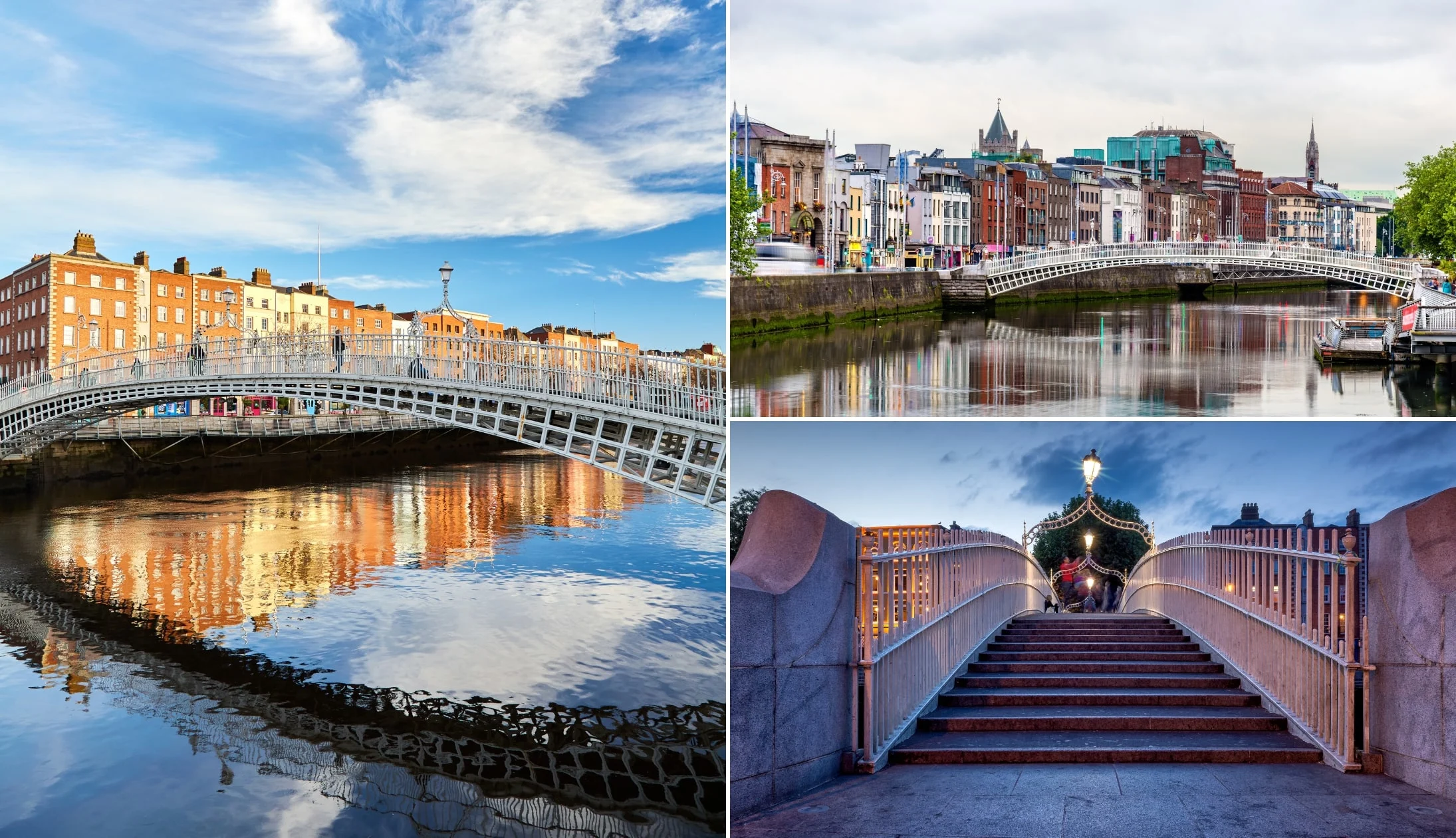
Photos via Shutterstock
The Ha’penny Bridge (officially named the Liffey Bridge) dates back to 1816 and was the first pedestrian bridge over the River Liffey!
It’s a seven-minute walk from the Trinity Gates, but feel free to take your time as you make your way through the lively streets of Temple Bar.
Now, Temple Bar can be a bit of a tourist trap. If you fancy a pint, here are several pubs in Temple Bar worth trying (the Palace is our go-to).
If you feel like an afternoon coffee, there are some great cafes in the Temple Bar area or on the other side of the river. Joe’s Coffee and Vice Coffee are two of our favourites across the water.
They’re both just a short stroll from the north side of the Ha’penny Bridge.
Stop 4: Dublin Castle
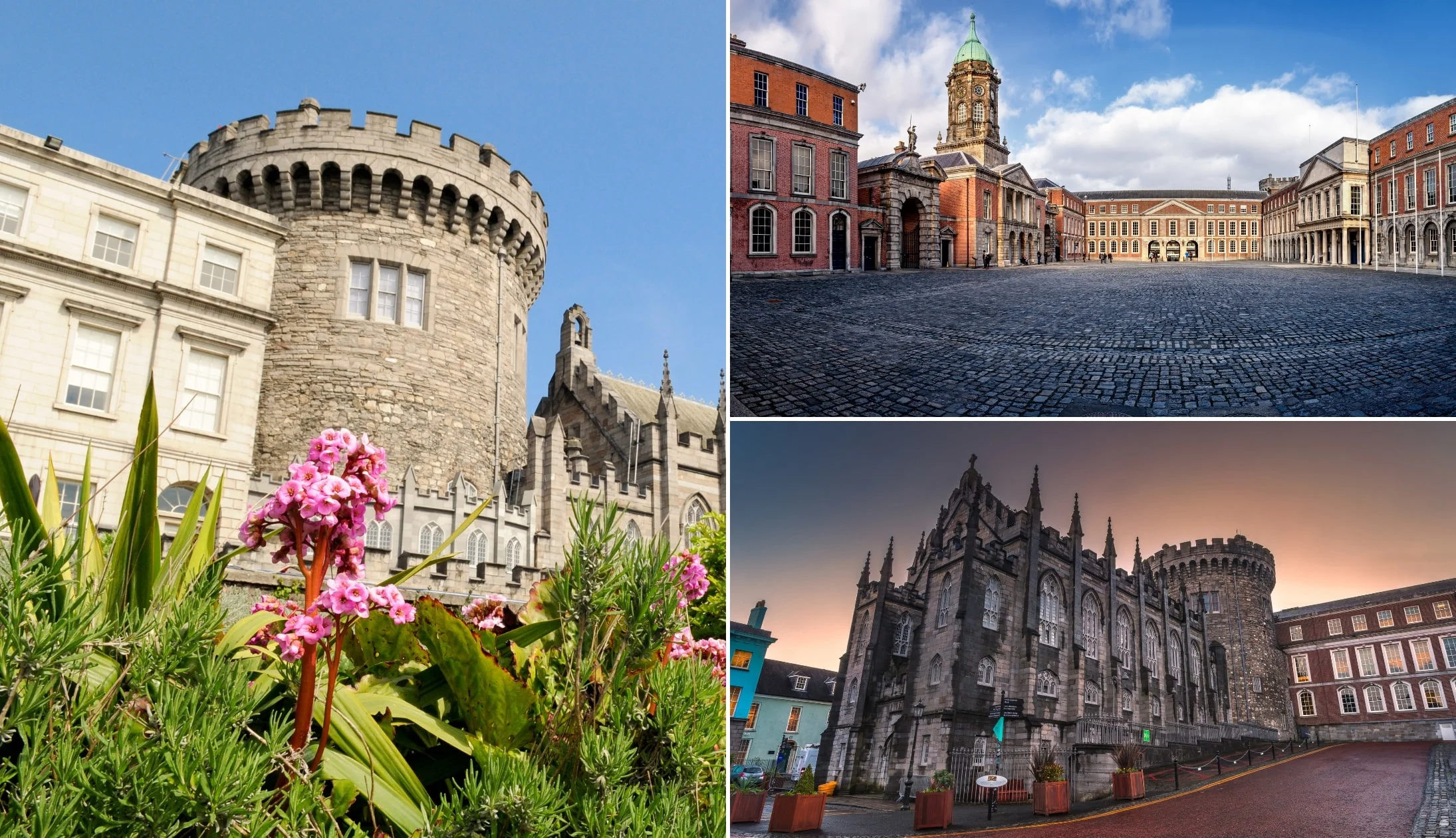
Photos via Shutterstock
Next on the itinerary is Dublin Castle. Nestled in the city centre, the castle dates back to the 13th century and was the seat of the English for over 700 years.
Today, it’s an important government complex and the site of Presidential Inaugurations and key State events. The castle is around 10 minutes from the Ha’penny Bridge on foot.
There’s no admission fee to explore the grounds, but if you want to have a look inside you’ll need to purchase tickets for either a self-guided tour or a guided tour.
Guided tours include access to the State Apartments, Exhibitions, Chapel Royal, and the Mediaeval Undercroft. Self-guided tours include access to the State Apartments and Exhibitions only.
Tickets for guided tours can be purchased on the day of your visit at the ticket booth.
Stop 5: Christ Church Cathedral
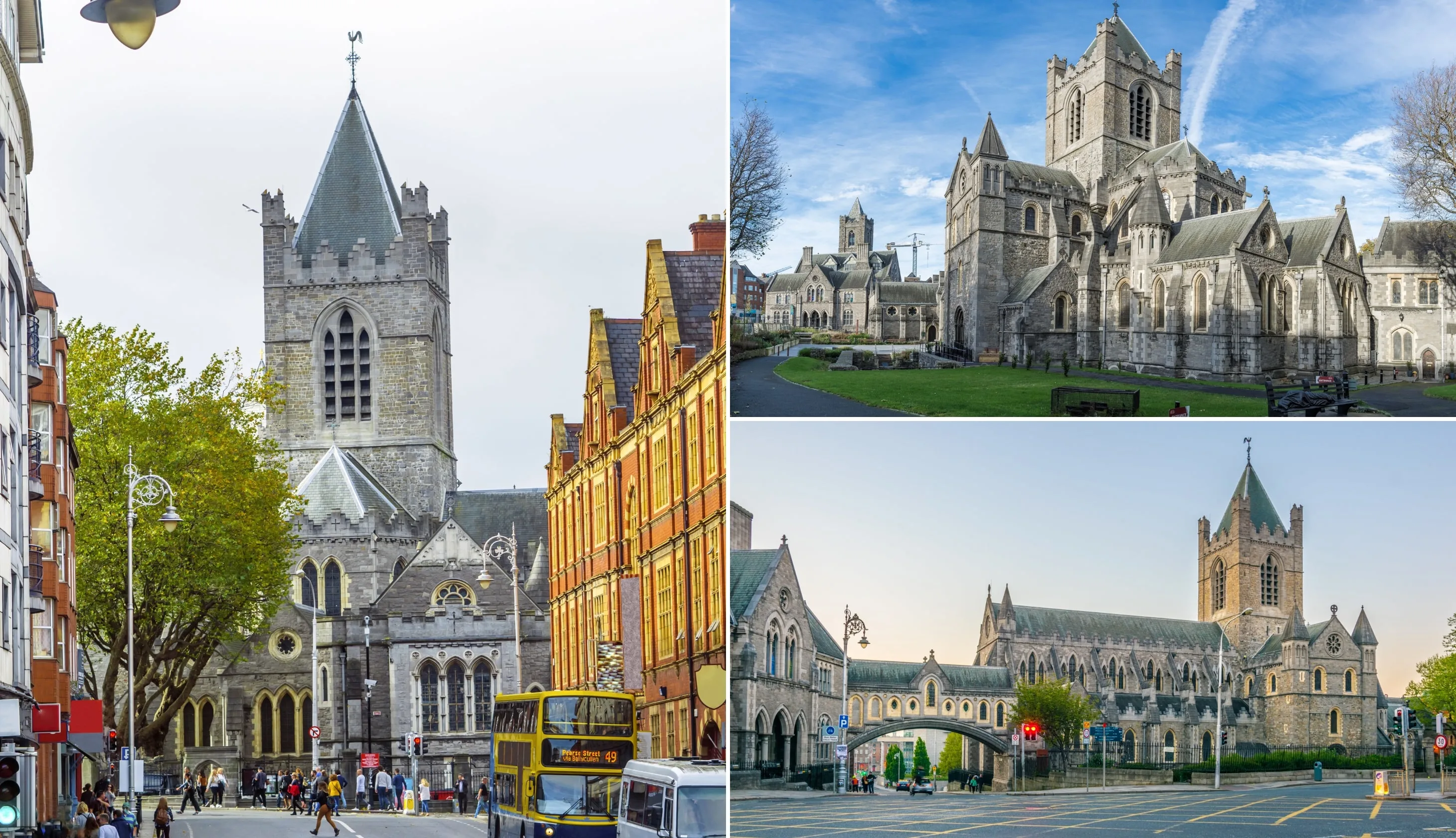
Photos via Shutterstock
Christ Church Cathedral dates back to the early 11th century when it was founded under Sigtrygg Silkbeard, a Norse King of Dublin. It was rebuilt later in stone, largely thanks to the first Anglo-Norman archbishop, John Cumin, in the late 12th century.
The cathedral is only a 4-minute walk from Dublin Castle and a really interesting place to visit. Some highlights are the restored crypt houses, Strongbow’s tomb, and the Treasures of Christ Church exhibition.
You can grab a ticket online here – these include an audio guide that comes in several languages, with three themes to choose from – ‘Power and Politics’, ‘Music and Spirituality’, and ‘Christ Church and the City’.
Self-guided tours with an audio guide usually last around one hour.
Stop 6: Guinness Storehouse
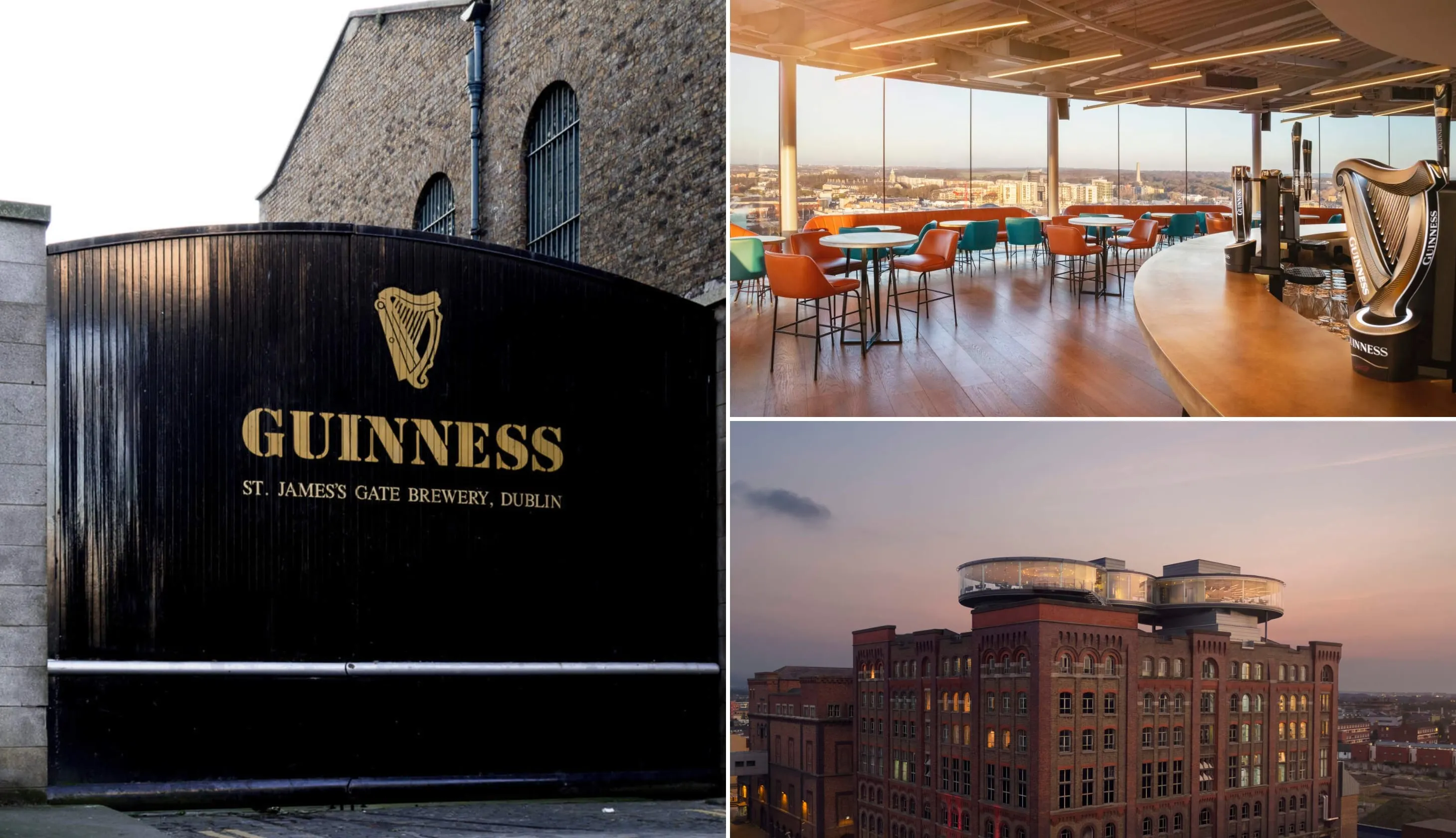
Photos © Diageo via Ireland’s Content Pool
The next stop is the Guinness Storehouse – a 17-minute walk from the cathedral. It’s at St. James’s Gate, the home of Guinness, and there are several tours available.
We recommend the Guinness Storehouse Experience, a self-guided tour that takes roughly 90 minutes.
You’ll learn about Guinness’ history, its ingredients and get to enjoy a pint of Guinness and one other Guinness beer (for ages 18+) whilst taking in the views of the Gravity Bar.
Stop 7: Dinner, drinks and live music
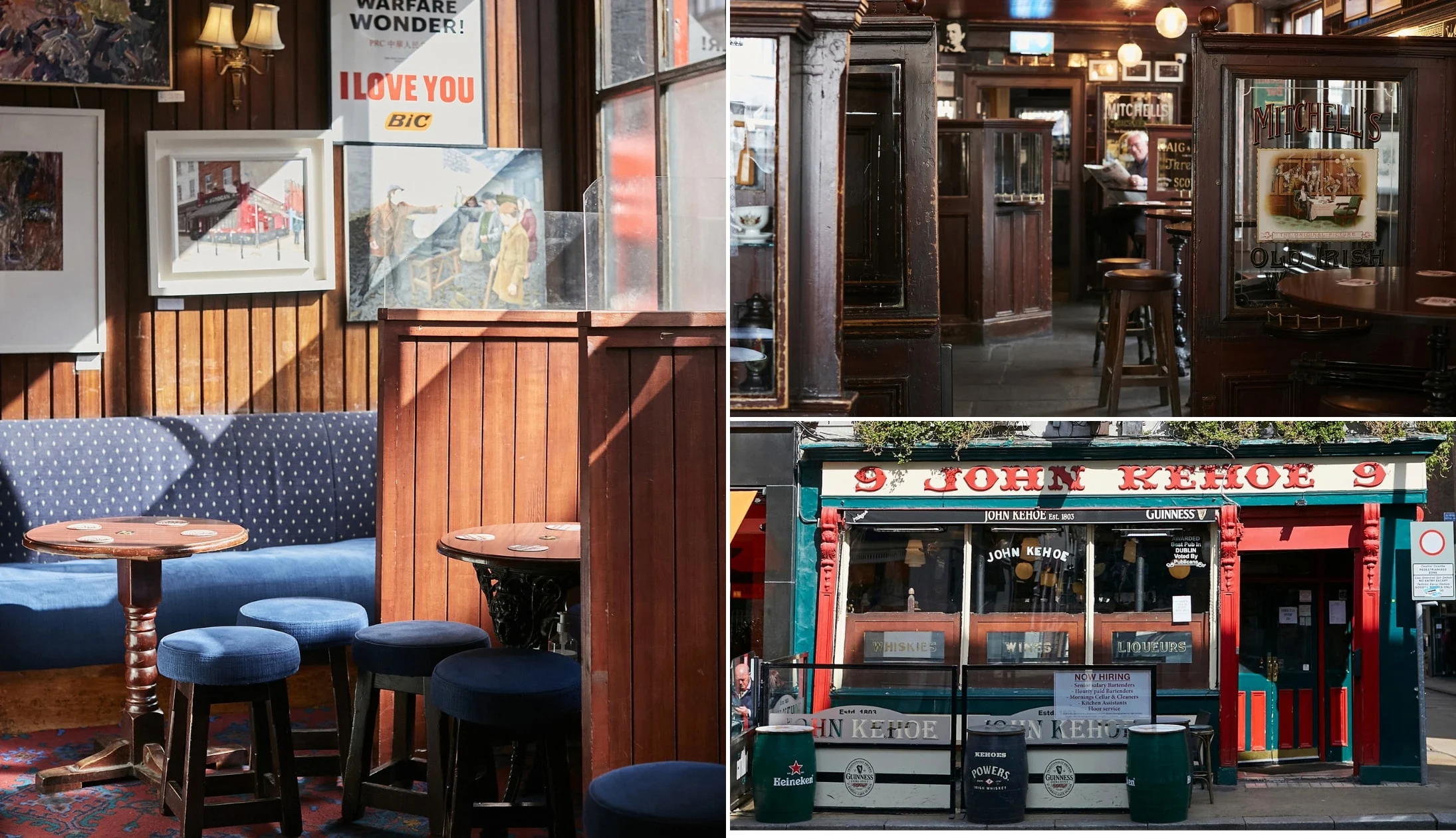
Different trad bars in Dublin. © Tourism Ireland
By now you must be getting hungry. Dublin has heaps of options for dinner, but we’ve got a couple of suggestions for you!
Our dinner recommendations
If you’re looking for something close by, Spitalfields is a short walk from the cathedral. It’s a little bit pricey, but the atmosphere is great, and the food is top-notch!
However, Spitalfields is 16+ only, so it’s not suitable for young families. Otherwise, check out The Bull and Castle across the street from Christ Church Cathedral.
Their menu has F.X. Buckley Steaks (renowned in Dublin), plus a great selection of local craft beers. The restaurant can get booked out pretty quickly, but you can always eat in the bar upstairs, which also has steak on the menu.
Live music and trad bars
If you want a taste of what Dublin’s best pubs are, see our detailed Dublin pubs guide. If you’re solely looking for places that do exceptional Guinness, see our guide to Dublin’s best pints.
If you fancy a bit of live music, there’s plenty on offer. Pipers Corner on Marlborough St. has some great tunes, with live music from 9pm every Tuesday to Saturday, and from 8pm on Sunday.
The inside has more of a modern feel, but you’ll be guaranteed authentic Irish music.
For the full experience, O’Donoghues Bar on Merrion Row has live music every night of the week. It’s about as traditional as Irish pubs get, with a brilliant atmosphere.
The Celt is another fantastic pub with live music every night from 9pm, although it’s not always traditional.
Day 8: Wicklow’s Wonders
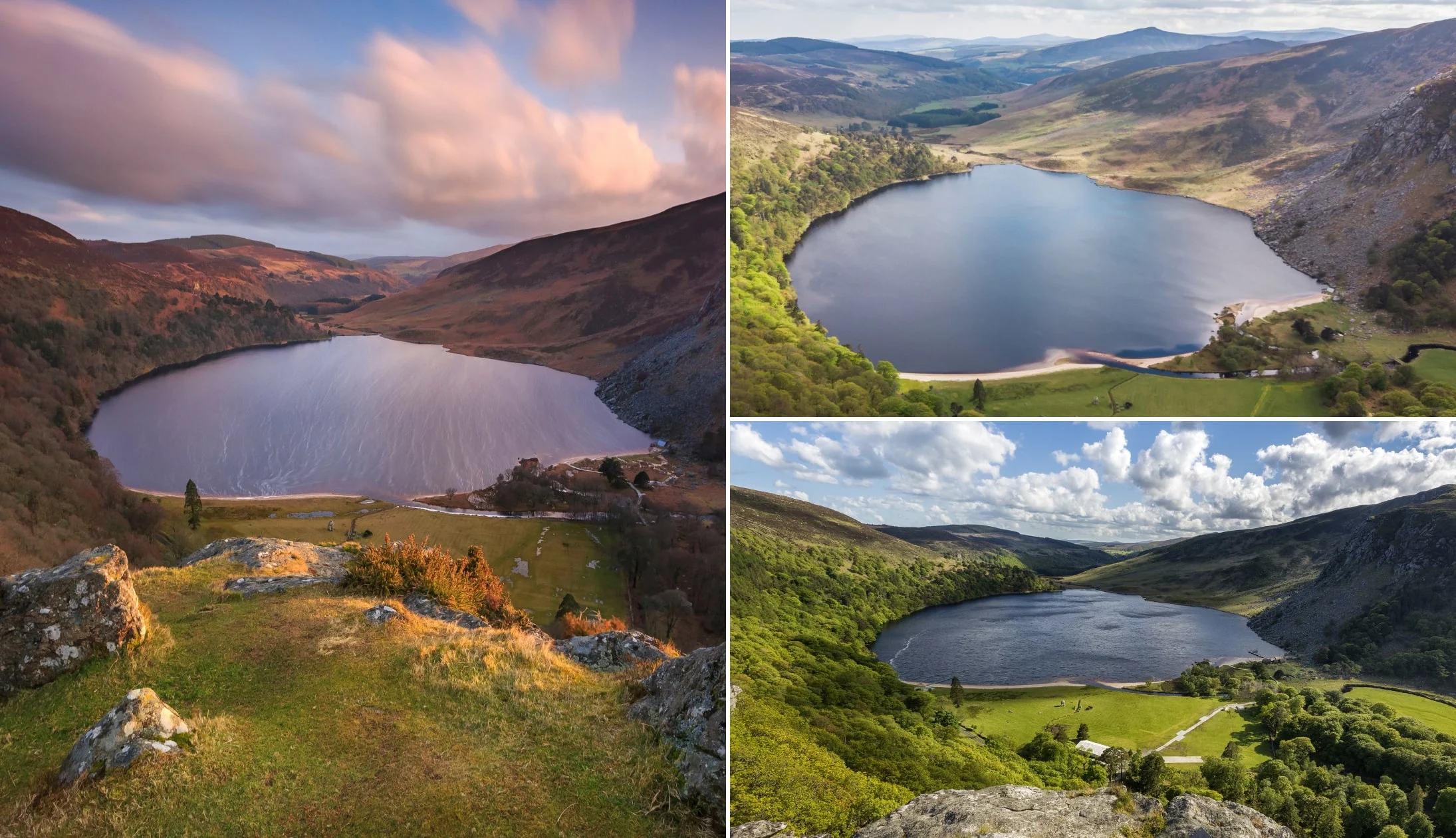
Photos via Shutterstock
Today, you’ll be exploring Wicklow, the country just south of Dublin, also known as the Garden of Ireland.
You’ve got a big day ahead of you, so make sure to grab a hearty breakfast before you head off on your bus tour.
The tour leaves near the Molly Malone Statue on Suffolk Street, so if you’d rather eat out, we recommend heading to Keoghs Cafe (just around the corner from the statue) for breakfast and a coffee.
Getting to Wicklow option 1: A guided day trip
This 8-hour day trip includes a fully-guided day tour of Wicklow’s best sights and includes a visit to Powerscourt Gardens (you’ll need to pay into the gardens separately)!
You’ll be driven along the Sally Gap, see iconic film locations used in P.S. I Love You, Brave Heart, and Vikings, and explore an ancient 6th-century settlement.
There are two options for this tour, so make sure to choose the option with the Powerscourt Garden visit as this is the more easy-going choice.
We’ll take you through the stops below, but note that 1, you may not always physically stop at all of these sights and 2, these tours are subject to change, so always check with the provider in advance.
Getting to Wicklow option 2: St. Kevin’s Bus
We definitely think a guided tour is the best way to explore Wicklow without a car, but if you can’t book onto the tour above, we suggest using St. Kevin’s Bus to get to Glendalough.
Take a look here for an in-depth guide. This should really be your Plan B as the guided tour includes the Sally Gap Drive, which is fantastic!
Stop 1: The Sally Gap Drive
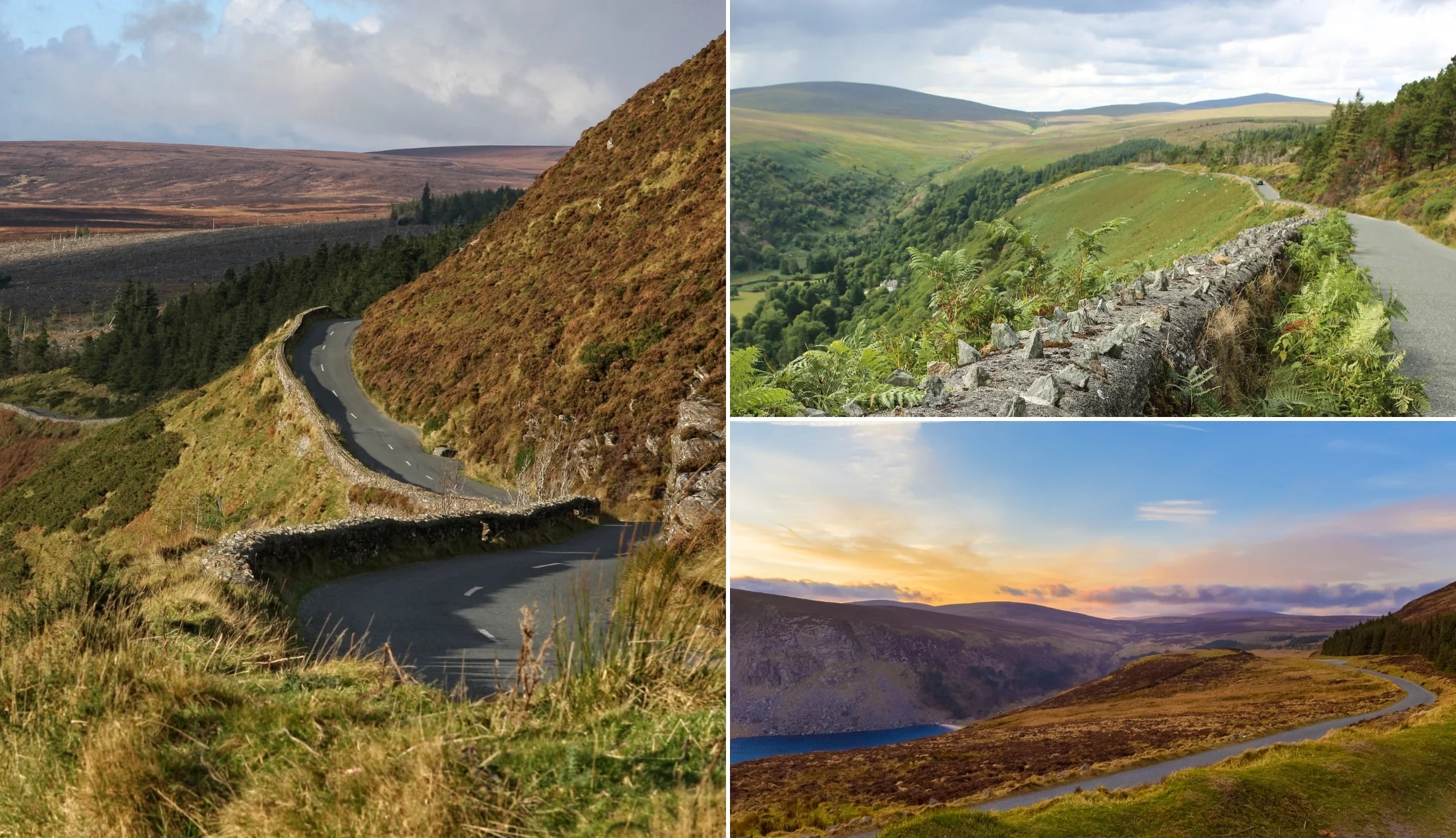
Photos via Shutterstock
OK, this isn’t really a stop. The Sally Gap is a famous crossroad on the Old Military Road through the Wicklow Mountains. The road was built in the early 1800s following the Irish Rebellion of 1798.
It’s a beautiful drive, with spectacular views of the mountains and blanket bog. One of the most notable attractions in this area is Lough Tay (AKA Guinness Lake).
Another is Glenmacnass Waterfall. However, the mountain views and the narrow roads that you drive along are what’ll really make this corner of Ireland a place that you won’t forget.
Stop 2: Glendalough Monastic City
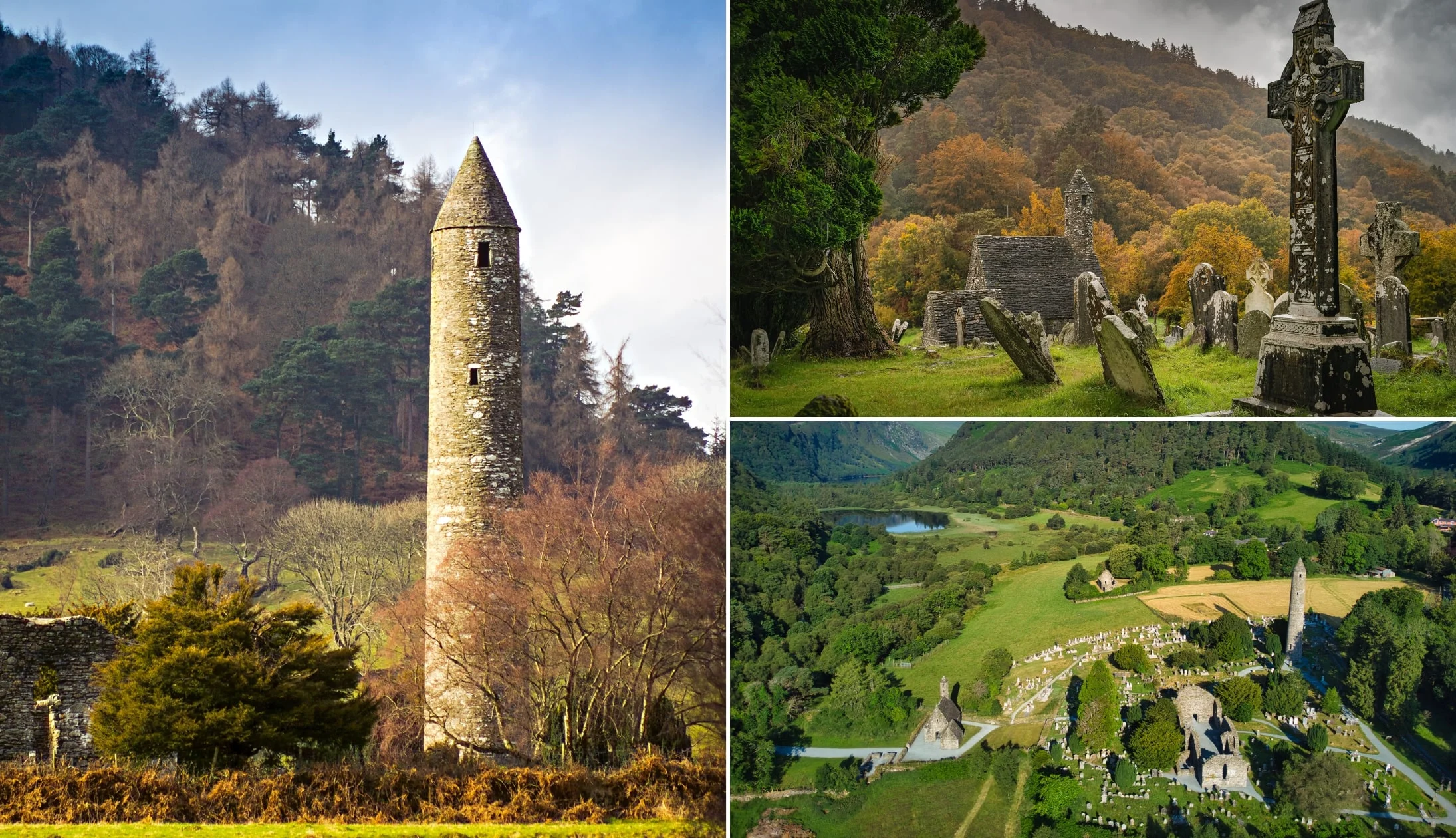
Photos via Shutterstock
The Monastic City was one of the most important monastic sites in this part of the country. The city was founded by St. Kevin in the 6th century and went on to become one of Europe’s most famous religious sites!
Right next to the settlement, there’s a visitor centre where you can enjoy the exhibits and learn more about the site and what made it so important.
After you’re all clued up, walk the 2 minutes to the monastic site and admire the Glendalough Round Tower, Cathedral, and St. Kevin’s Church.
Stop 3: The Lakes at Glendalough
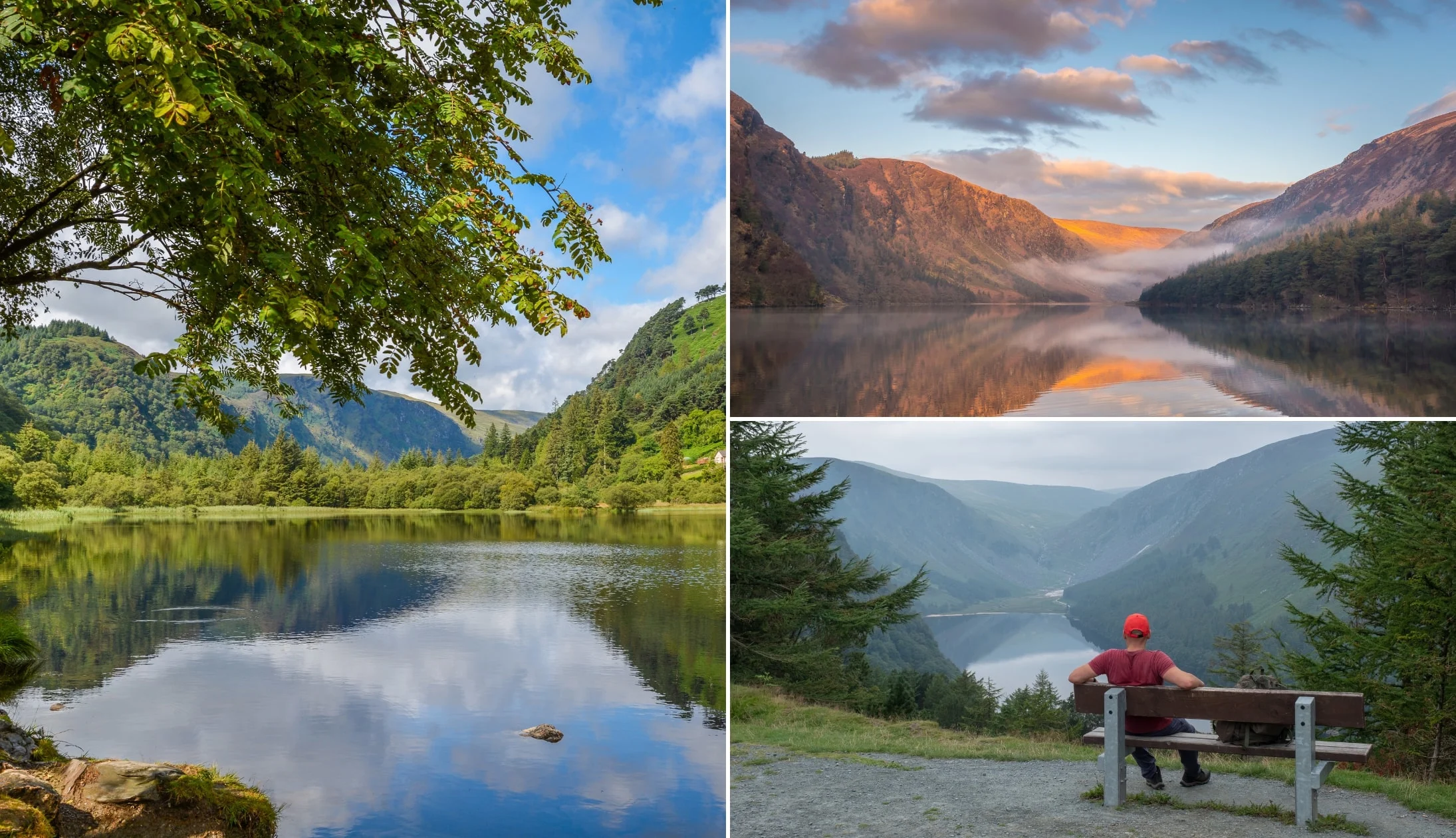
Photos via Shutterstock
Along the way, you’ll be passing by Glendalough Upper Lake and Lower Lake. Carved out by a melting glacier long ago, the upper lake is spectacular, nestled between trees and mountains.
It’s home to St. Kevin’s Bed, a small cave where St. Kevin lived as a hermit for several years before he founded the monastic city.
The lower lake is the smaller of the two, but equal in beauty, with gorgeous views of the mountains and forest.
Stop 4: Powerscourt Gardens
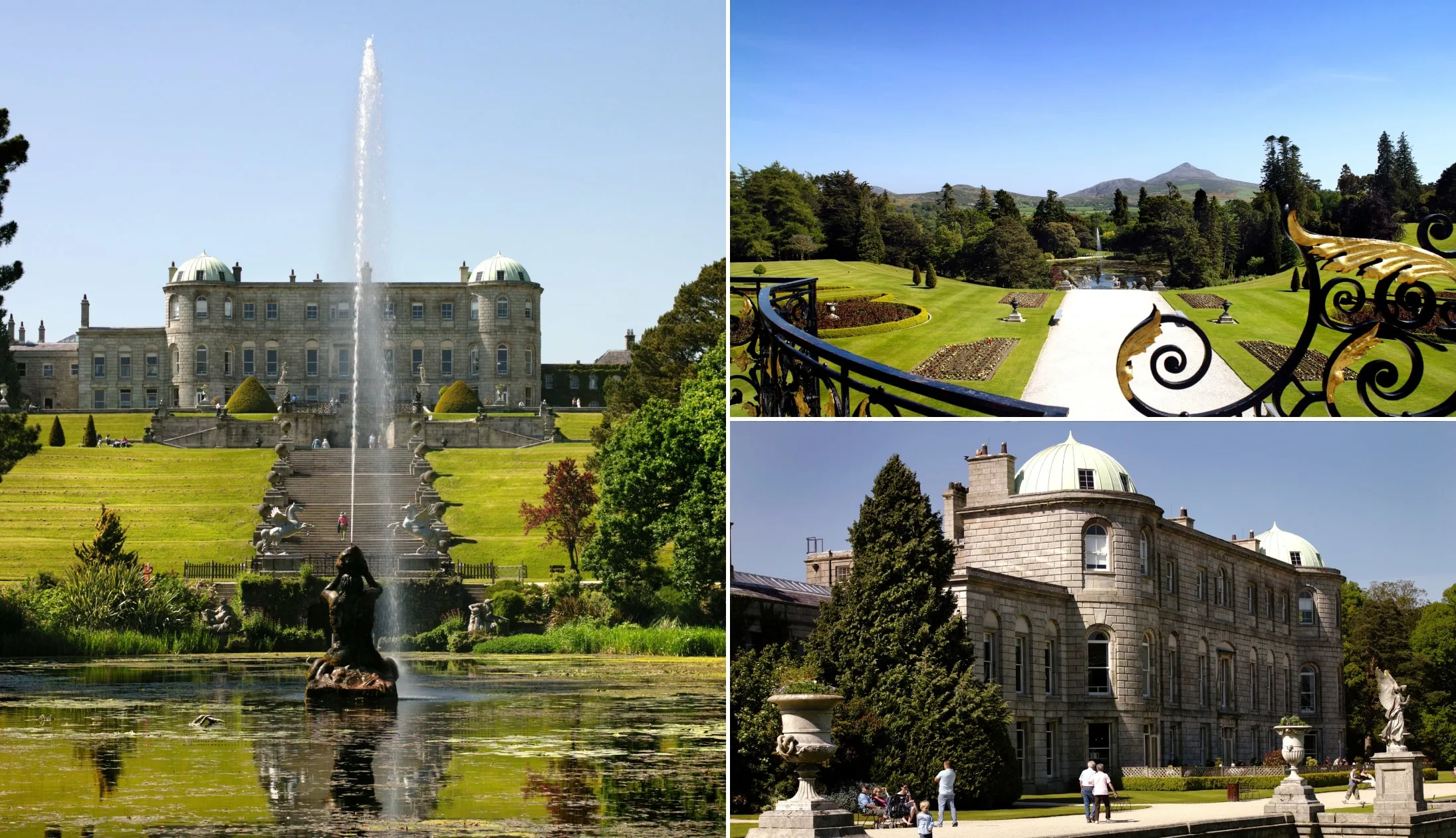
Photos by Chris Hill via Failte Ireland
The Powerscourt Gardens are filled with grandeur and were voted by National Geographic as one of the world’s Top Ten Gardens!
The 47-acre Powerscourt Gardens are managed by a team of five gardeners, who tend to the Walled Garden, the Japanese Garden, the Italian Garden, and more.
The grounds are filled with ornamental lakes, formal gardens, and statues, making them perfect for a leisurely stroll!
Stop 5: Back to Dublin for the night

Different trad bars in Dublin. © Tourism Ireland
After a long day of sightseeing, you’ll be heading back to the city.
Dublin has heaps of options for dinner and drinks, but we’ve got a couple of suggestions for you!
Our dinner recommendations
If you’re looking for something close by, Spitalfields is a stone’s throw from the Teeling’s Distillery. It’s a little bit pricey, but the atmosphere is great, and the food is top-notch!
However, Spitalfields is 16+ only, so it’s not suitable for young families. Otherwise, check out The Bull and Castle across the street from Christ Church Cathedral.
Their menu has F.X. Buckley Steaks (renowned in Dublin), plus a great selection of local craft beers. The restaurant can get booked out pretty quickly, but you can always eat in the bar upstairs, which also has steak on the menu.
Live music and trad bars
If you want a taste of what Dublin’s best pubs are, see our detailed Dublin pubs guide. If you’re solely looking for places that do exceptional Guinness, see our guide to Dublin’s best pints.
If you fancy a bit of live music, there’s plenty on offer. Pipers Corner on Marlborough St. has some great tunes, with live music from 9pm every Tuesday to Saturday, and from 8pm on Sunday.
The inside has more of a modern feel, but you’ll be guaranteed authentic Irish music.
For the full experience, O’Donoghues Bar on Merrion Row has live music every night of the week. It’s about as traditional as Irish pubs get, with a brilliant atmosphere.
The Celt is another fantastic pub with live music every night from 9pm, although it’s not always traditional.
Day 9: Mighty Meath and Louth
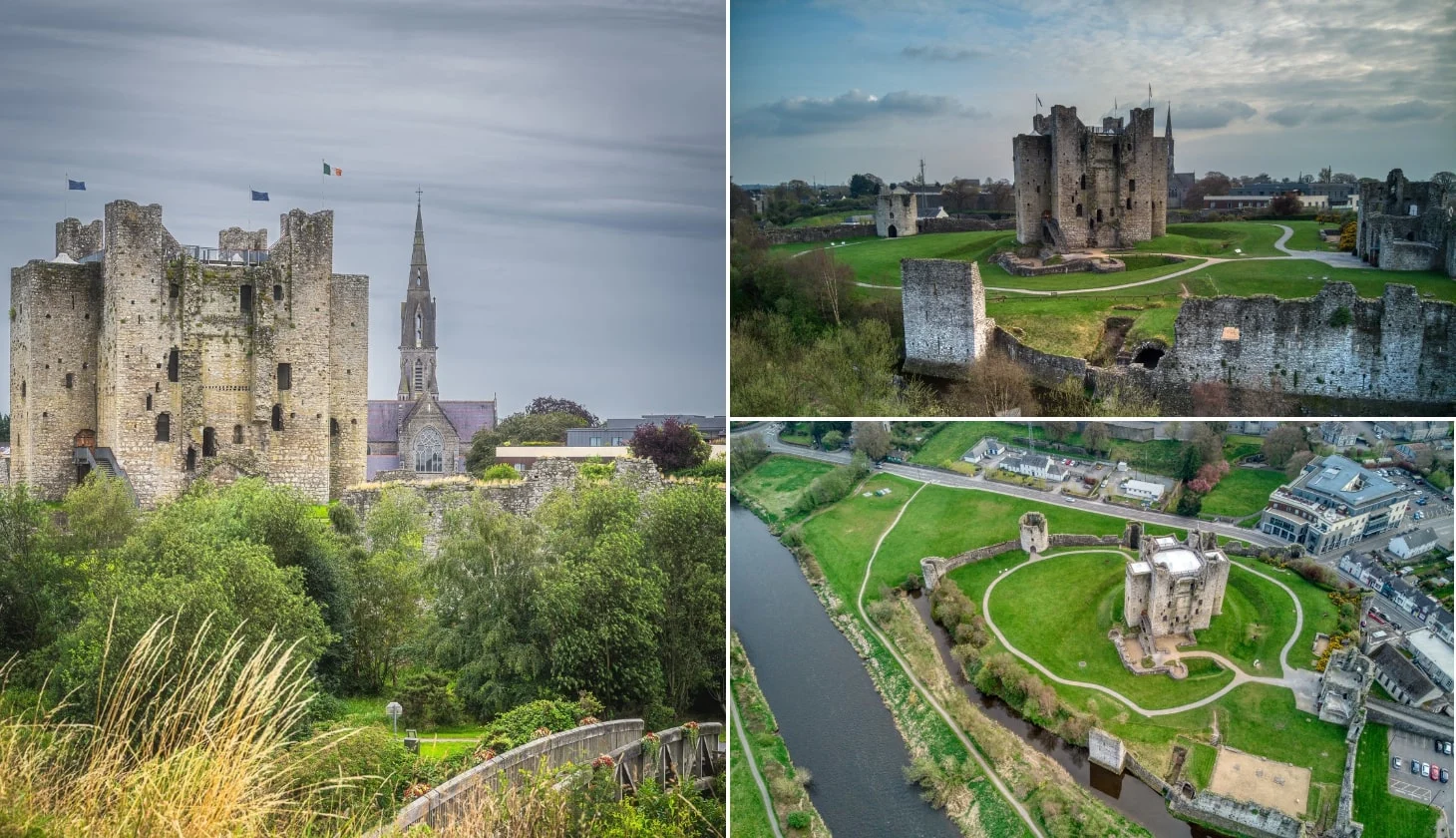
Photos via Shutterstock
On day 9 of the 11 days in Ireland itinerary, you’ll be heading out to County Meath to explore the Boyne River Valley, known for its archaeological sites.
It’s another jam-packed day, so make sure to have a hearty breakfast and pack some snacks in case you get peckish on the road.
Today’s 10-hour organised day trip leaves from the same spot, near the Molly Malone statue. There aren’t too many breakfast options open this early, so once again, we recommend Keoghs Cafe as they open at 6am.
Keep reading below for an overview of the tour, but please note that 1, you may not always physically stop at all of these sights and 2, these tours are subject to change, so always check with the provider in advance.
Stop 1: Hill of Uisneach
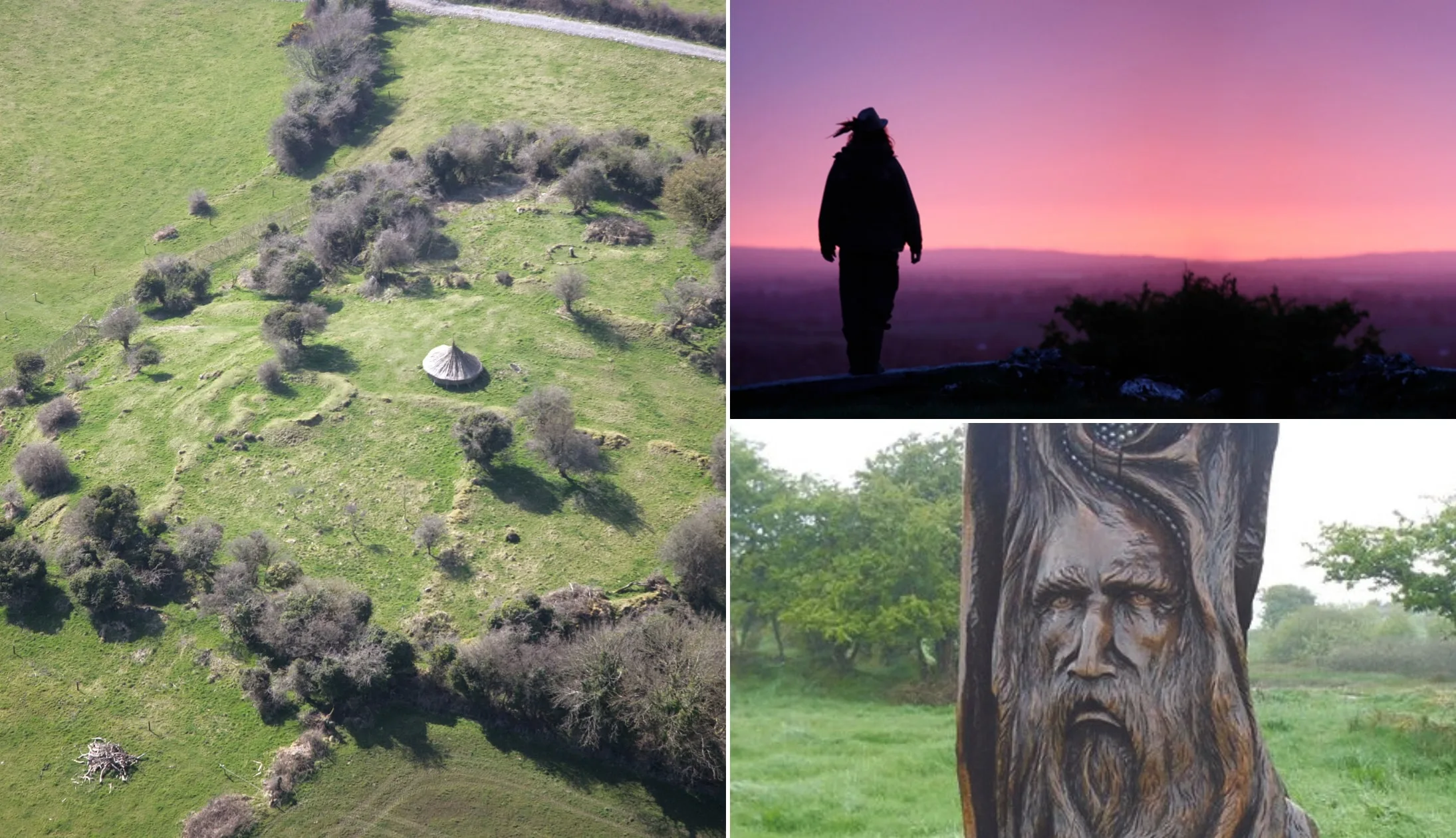
Photos via Shutterstock
The Hill of Uisneach is an ancient ceremonial site that’s home to numerous monuments and earthen artefacts.
It’s an interesting spot that’s steeped in folklore, and according to Irish mythology, the hill is the centre of Ireland and where everything began!
At the site, you’ll find a conjoined ringfort, arguably the most important monument on the hill, a monument known as St Patrick’s Bed (stood at the highest point on the hill), and the Stone of the Divisions, a group of stones said to mark the exact centre of Ireland.
Stop 2: Fore Abbey
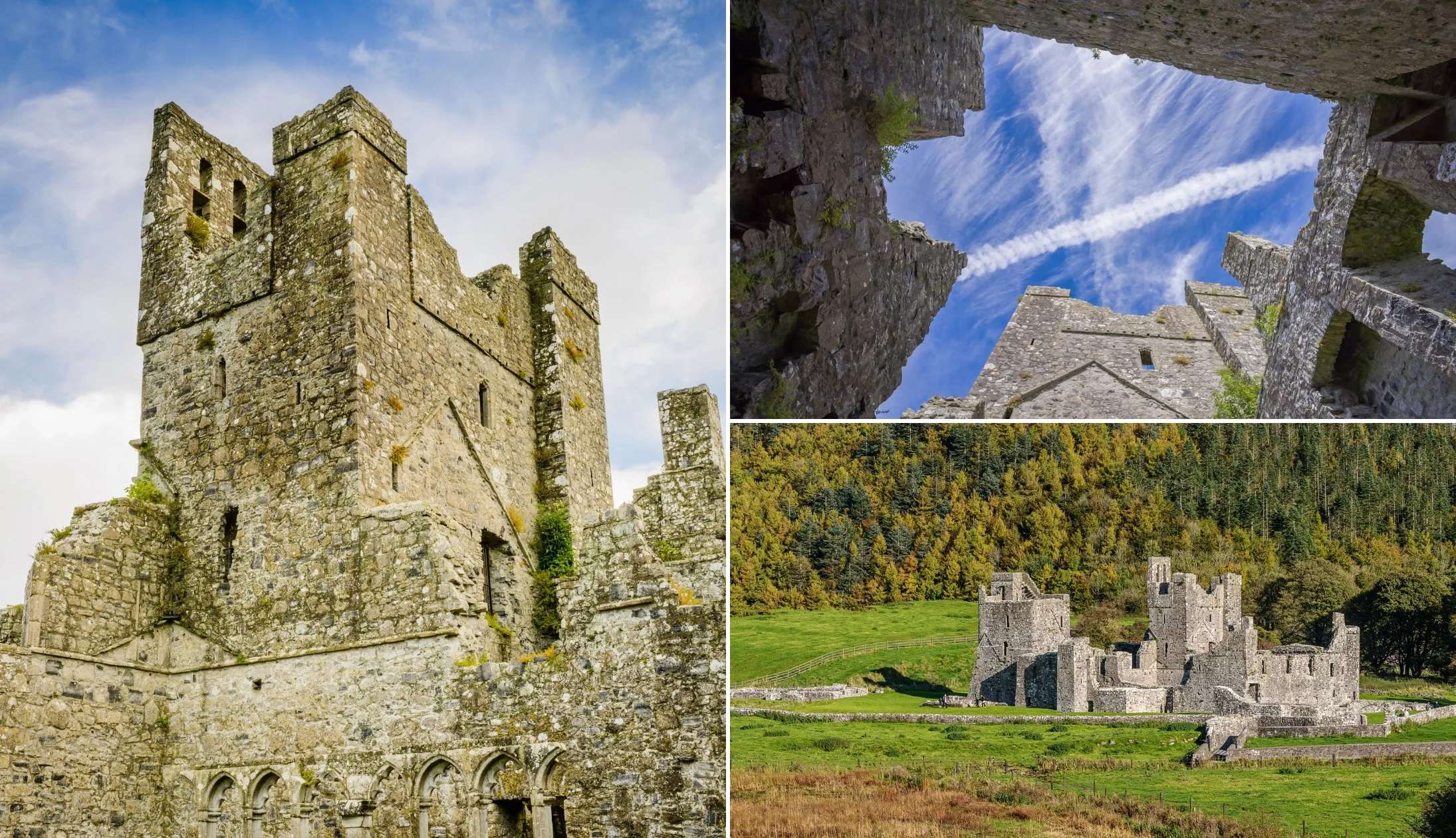
Photos via Shutterstock
Fore Abbey is the ruin of a Benedictine Abbey founded by St. Feichin in the 7th century. The ruins are in good condition with several features that are still visible to this day, including St. Feichin’s Church which was built in 900 AD.
The abbey is known for its legendary “Seven Wonders of Fore”. These are the monastery in the bog; the water that flows uphill; the tree that has three branches; the mill without a race; the water that doesn’t boil (in St. Fechin’s holy well); the anchorite in a cell; and the lintel-stone raised by St. Fechin’s prayers.
Aside from the wonders, Fore Abbey is also well known for the Fore Crosses, 18 crosses that are spread out over 10km.
Stop 3: Loughcrew Passage Tombs
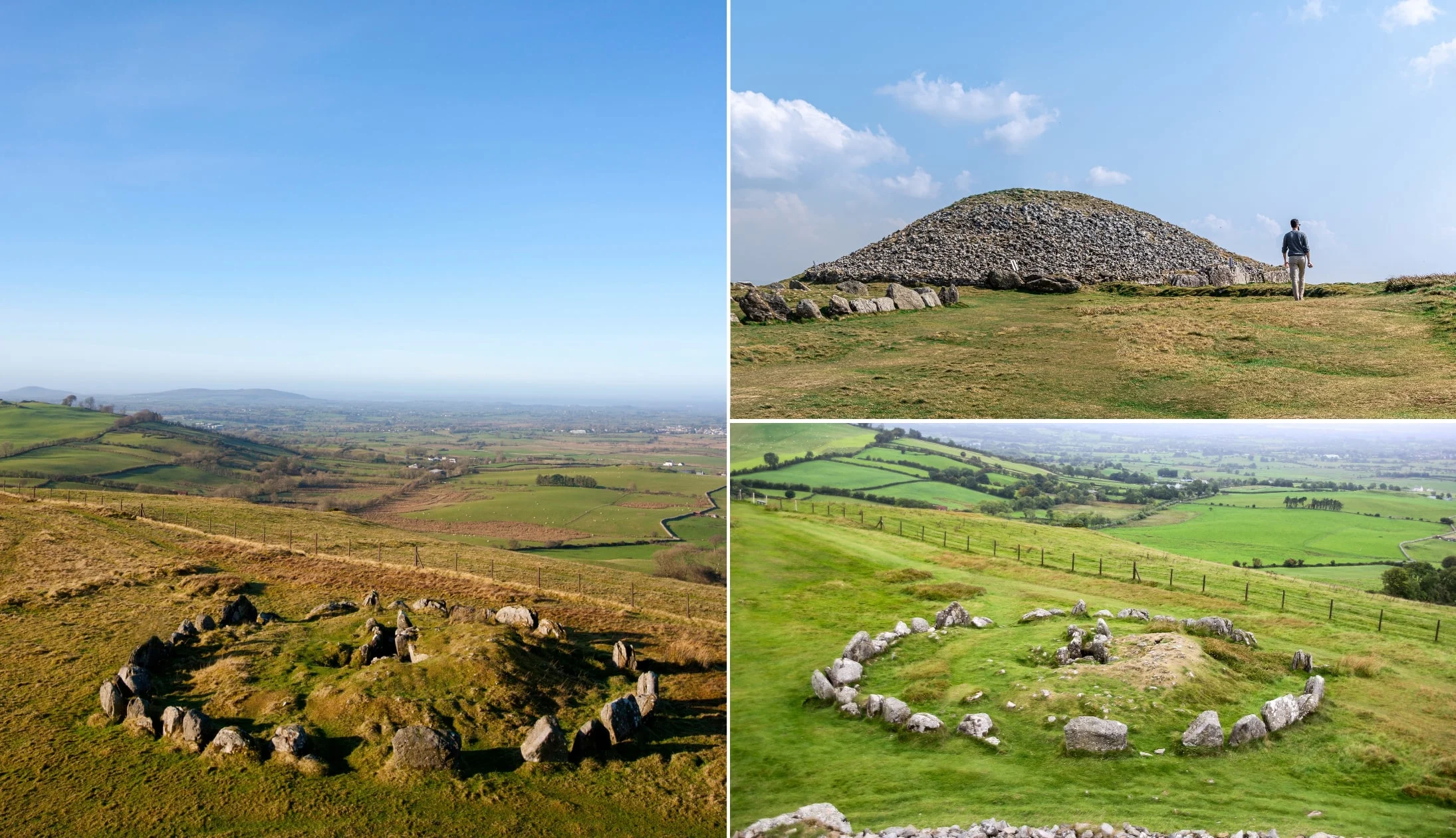
Photos via Shutterstock
The Loughcrew Passage Tombs, or Loughcrew Cairns, are a group of neolithic passage tombs that date back to 3000 BC.
Cairn T is the largest of the tombs and can be seen from many miles away. It contains magnificent examples of neolithic art and is perfectly aligned to the sunrise during the spring and autumn equinoxes.
Like Fore Abbey, this site is also entangled in folklore. According to local legend. The huge throne-like boulder (nicknamed the Hag’s Chair) on the Cairn’s north side, was the seat of an old witch!
Please note that the walk up to the cairns is very steep and may prove difficult for those with low levels of fitness.
Stop 4: Trim Castle

Photos via Shutterstock
Trim Castle is Ireland’s largest Anglo-Norman fortification. It’s very impressive with an imposing presence that’ll catch your eye from afar as you approach the town.
The Castle dates back to the 12th century and took Hugh de Lacy and his successors 30 years to complete.
The tour of Trim Castle is well worth it, especially for any Braveheart fans, as parts of the movie were filmed there!
If you have time, take a stroll out to the large tower ruins on the hill past the castle (you can’t miss them). You’ll get a great view of the castle from afar from this point.
Stop 5: The Hill of Tara
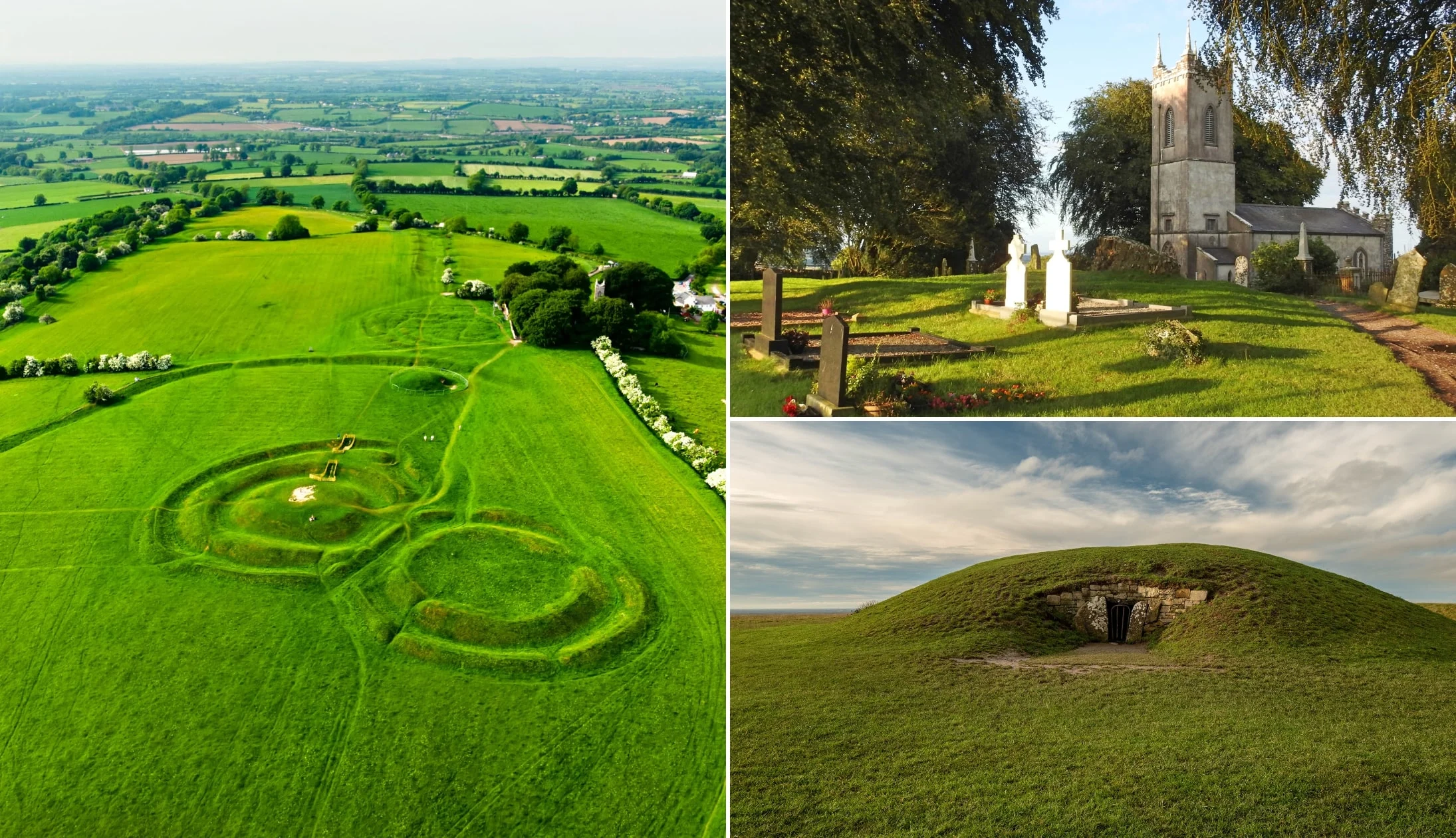
Photos via Shutterstock
The Hill of Tara has been in use since the late Stone Age, but it’s known best as the seat of the High Kings of Ireland, with all old Irish roads leading to the site!
The site is shrouded in myth, and the story of Conn of the Hundred Battles tells the tale of how the High Kings of Ireland came to be.
It’s free to visit, with a free 25-minute Audio Visual Show at the visitor centre (in the church), and free guided tours scheduled every day.
Stop 6: Back to Dublin for the night

Different trad bars in Dublin. © Tourism Ireland
From the Hill of Tara, it’s a 50-minute drive back to Dublin City Centre (depending on traffic).
By now you must be getting hungry. Dublin has heaps of options for dinner, but we’ve got a couple of suggestions for you!
Our dinner recommendations
If you’re looking for something close by, Spitalfields is a short walk from the cathedral. It’s a little bit pricey, but the atmosphere is great, and the food is top-notch!
However, Spitalfields is 16+ only, so it’s not suitable for young families. Otherwise, check out The Bull and Castle across the street from Christ Church Cathedral.
Their menu has F.X. Buckley Steaks (renowned in Dublin), plus a great selection of local craft beers. The restaurant can get booked out pretty quickly, but you can always eat in the bar upstairs, which also has steak on the menu.
Live music and trad bars
If you want a taste of what Dublin’s best pubs are, see our detailed Dublin pubs guide. If you’re solely looking for places that do exceptional Guinness, see our guide to Dublin’s best pints.
If you fancy a bit of live music, there’s plenty on offer. Pipers Corner on Marlborough St. has some great tunes, with live music from 9pm every Tuesday to Saturday, and from 8pm on Sunday.
The inside has more of a modern feel, but you’ll be guaranteed authentic Irish music.
For the full experience, O’Donoghues Bar on Merrion Row has live music every night of the week. It’s about as traditional as Irish pubs get, with a brilliant atmosphere.
The Celt is another fantastic pub with live music every night from 9pm, although it’s not always traditional.
Day 10: Waterford City
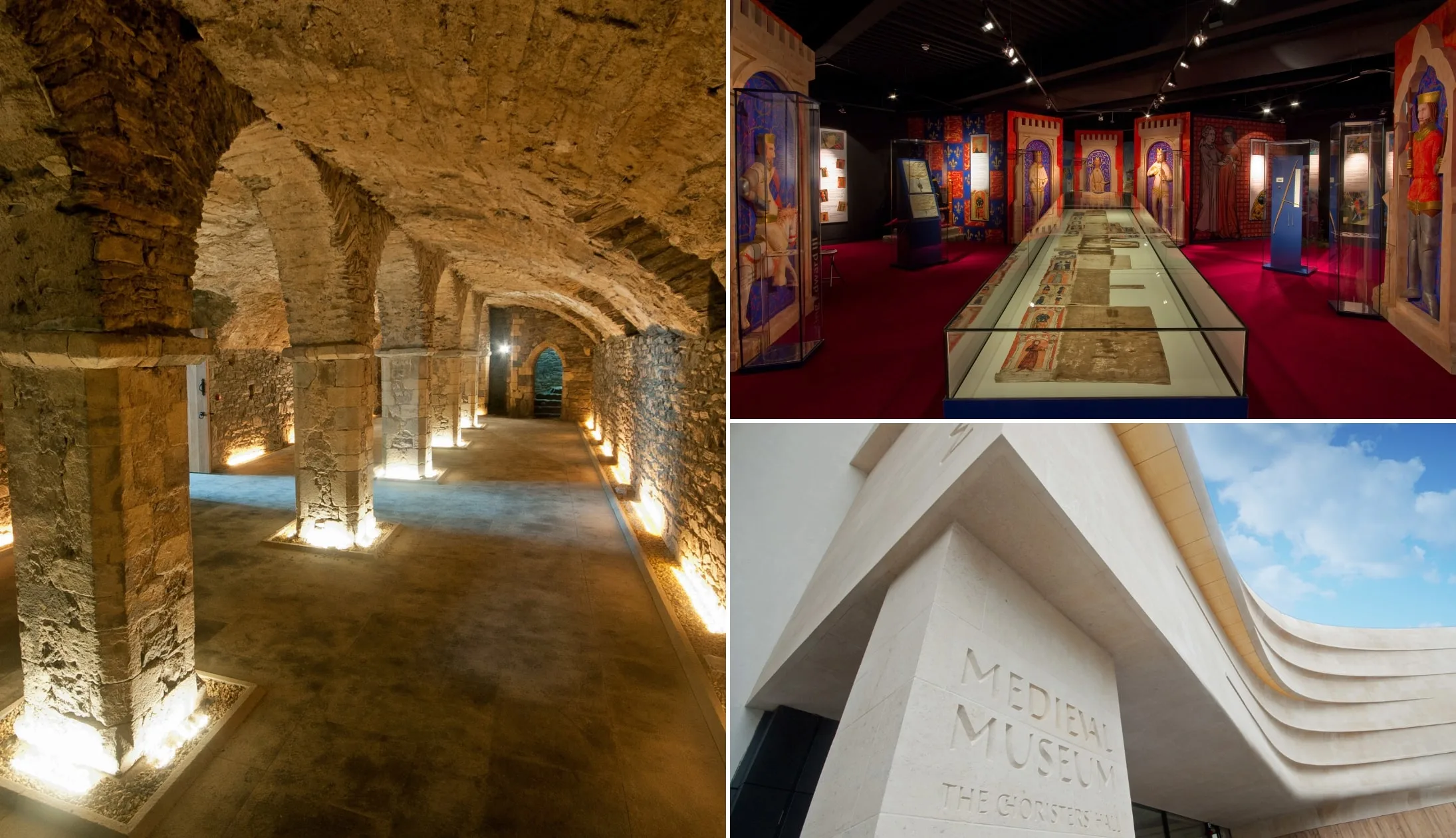
Photos courtesy Waterford Museum of Treasures via Failte Ireland
It’s time to pack your things and check out of your accommodation in Dublin, as today you’re heading to Waterford City, the oldest city in Ireland. You’ll spend your final night here before heading back to Cork City to fly home.
Recommended accommodation in/near Waterford City
- Budget: The Vee B&B (cheap and cheerful and a 20-minute walk from main attractions) and Diamond Hill Country House (20-minute drive from city with great reviews)
- Mid-range: Granville Hotel (cosy and super central in the city) and Tower Hotel & Leisure Centre (great views and right in the city)
- Luxury: Faithlegg Hotel (stunning hotel 20-minute drive from city)
Stop 1: Dublin Heuston
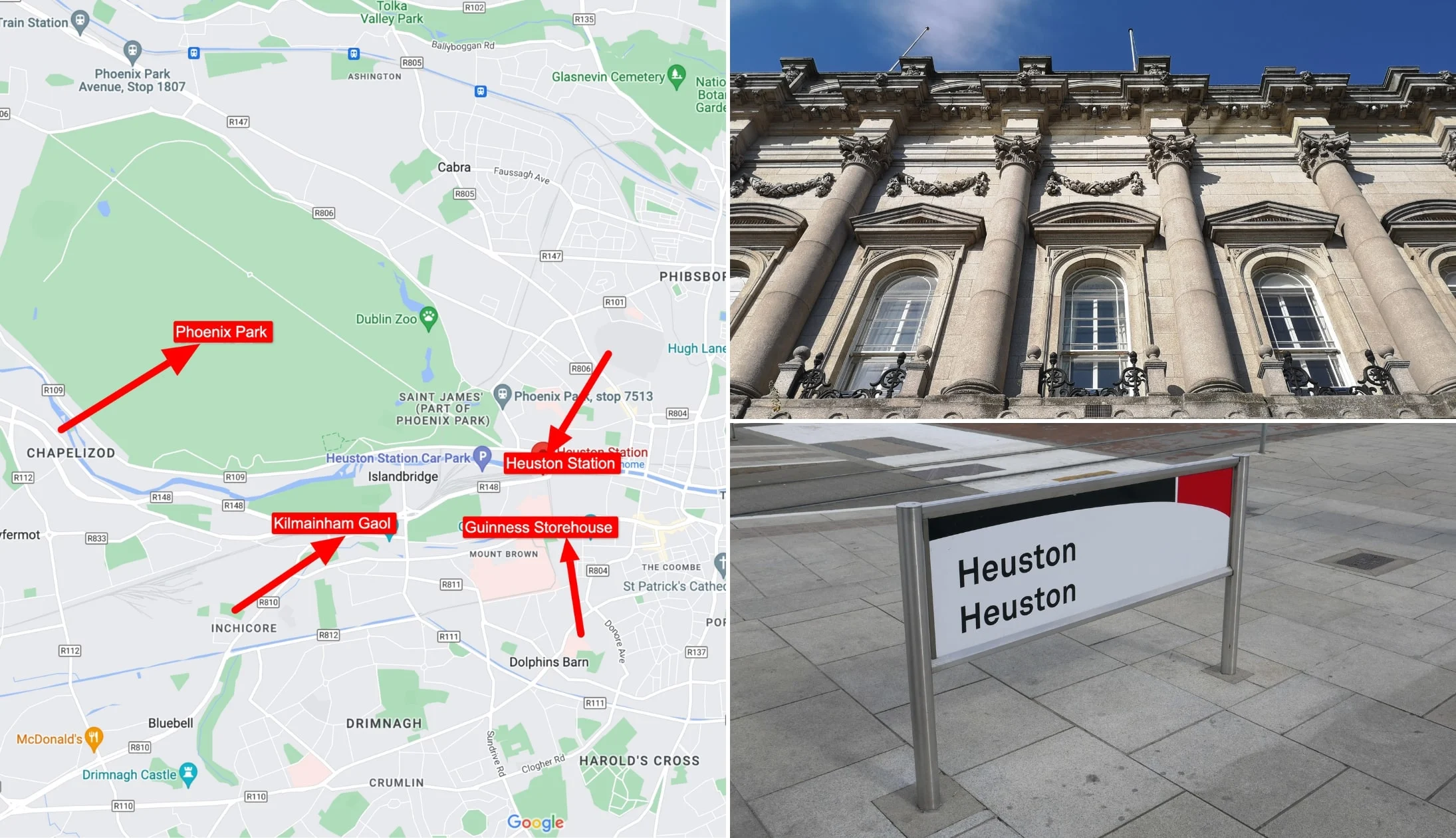
Photo left: Google Maps. Others: Shutterstock
You are taking the train to Waterford today, as the train is quick, easy and makes the most sense. The train takes a little over 2 hours. Make sure to pay attention when you book your ticket, as there are multiple direct trains a day but some do require you to switch trains at Limerick Junction.
Welcome to Waterford! You have a full day walking around this beautiful city today. Go ahead and drop your bags off, and then set out!
Stop 2: King of the Vikings
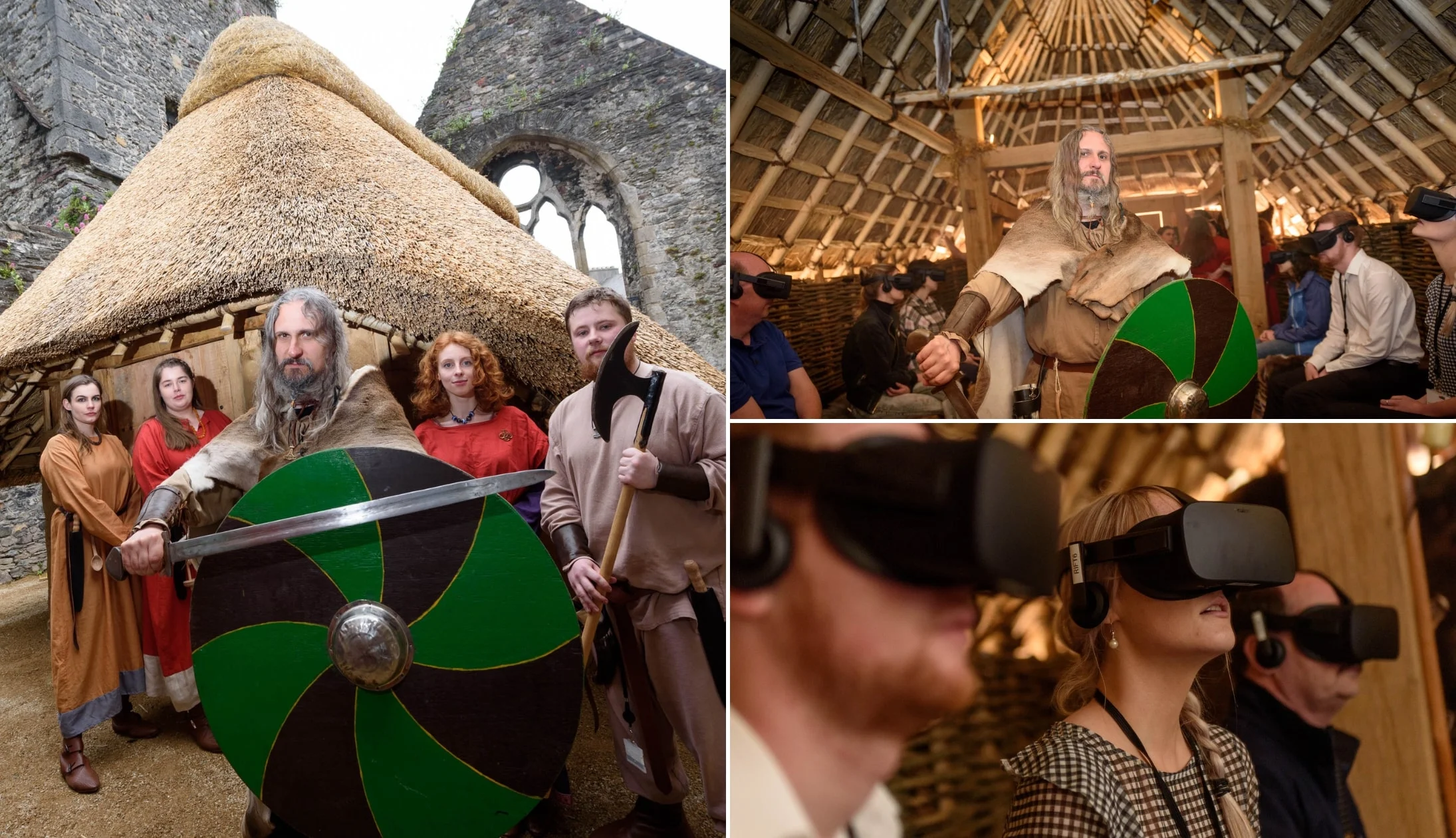
Photos by Peter Grogan_Emagine via Failte Ireland
As we mentioned earlier, Waterford is the oldest city in Ireland, dating back as far as 914 A.D. when it was originally a Viking settlement. King of the Vikings is a really cool virtual reality experience that shows visitors what the city would have been like when it was inhabited by Vikings.
You’ll find it inside the Viking Triangle, on the south bank of the Suir River, which was named after the 1,000-year-old Viking walls that used to surround the area. The experience takes place inside a reconstructed Viking house that sits in the centre of 13th-century Franciscan Friary ruins. The virtual reality experience lasts for 30 minutes, and since it’s only a small space with enough room for 10 people only, pre-booking is advised.
Stop 3: Reginald’s Tower
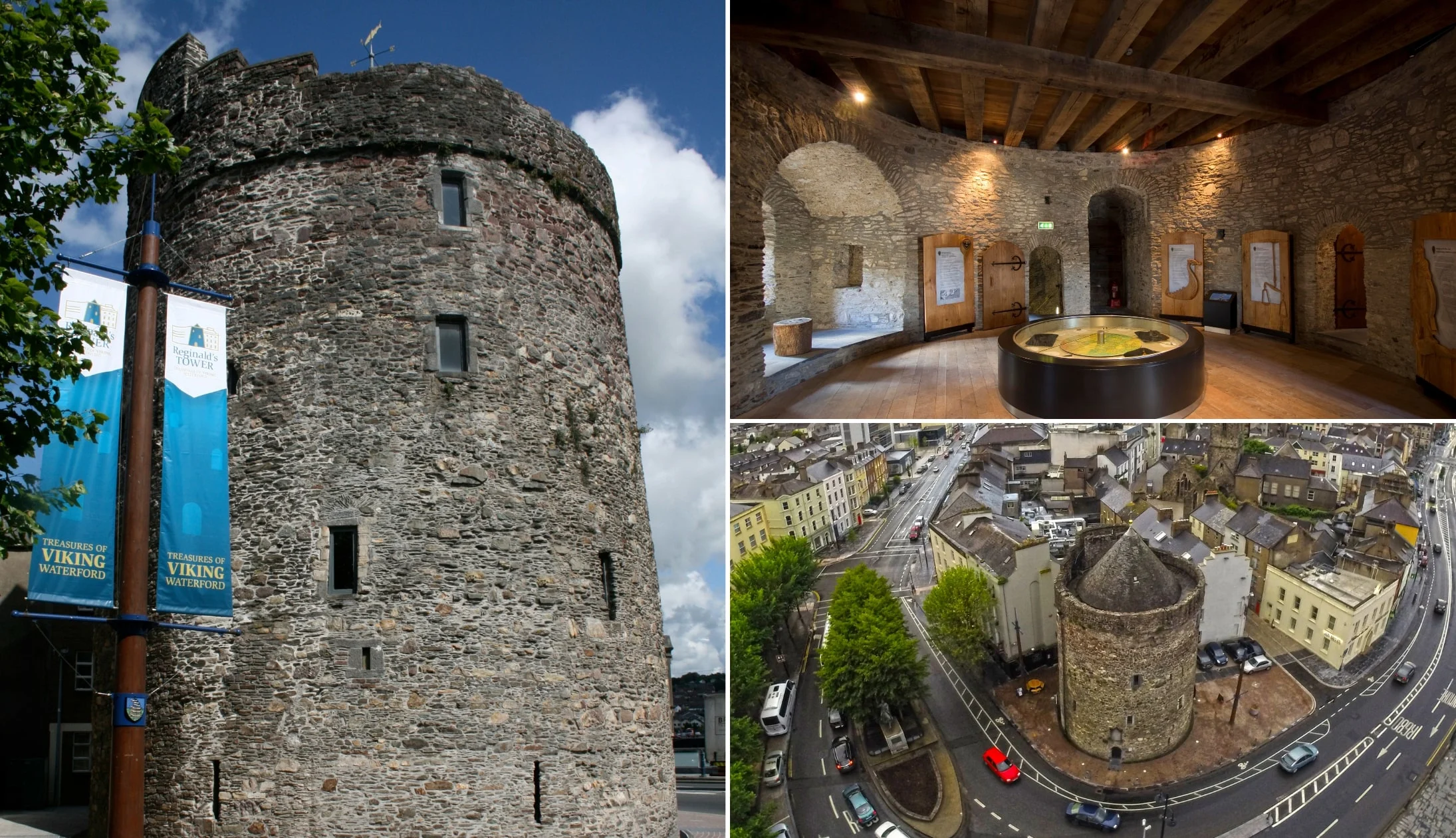
Photos courtesy Waterford Museum of Treasures via Failte Ireland
Your next stop, Reginald’s Tower, is only a 3-minute walk down the road from the King of the Vikings. The tower is the oldest civic building in the country and has been in continuous use for over 800 years!
Originally, a wooden Viking fort stood on the site, but later on, the Anglo-Normans replaced it with the impressive stone tower. The tower was part of ancient Waterford and is thought to be one of the points of the Viking Triangle, alongside Turgesius Tower and St. Martins Castle.
Inside, you’ll find a part of the Waterford Museum of Treasures, which focuses primarily on Waterford’s Viking heritage (you’ll be visiting the other parts later!).
Stop 4: Lunch
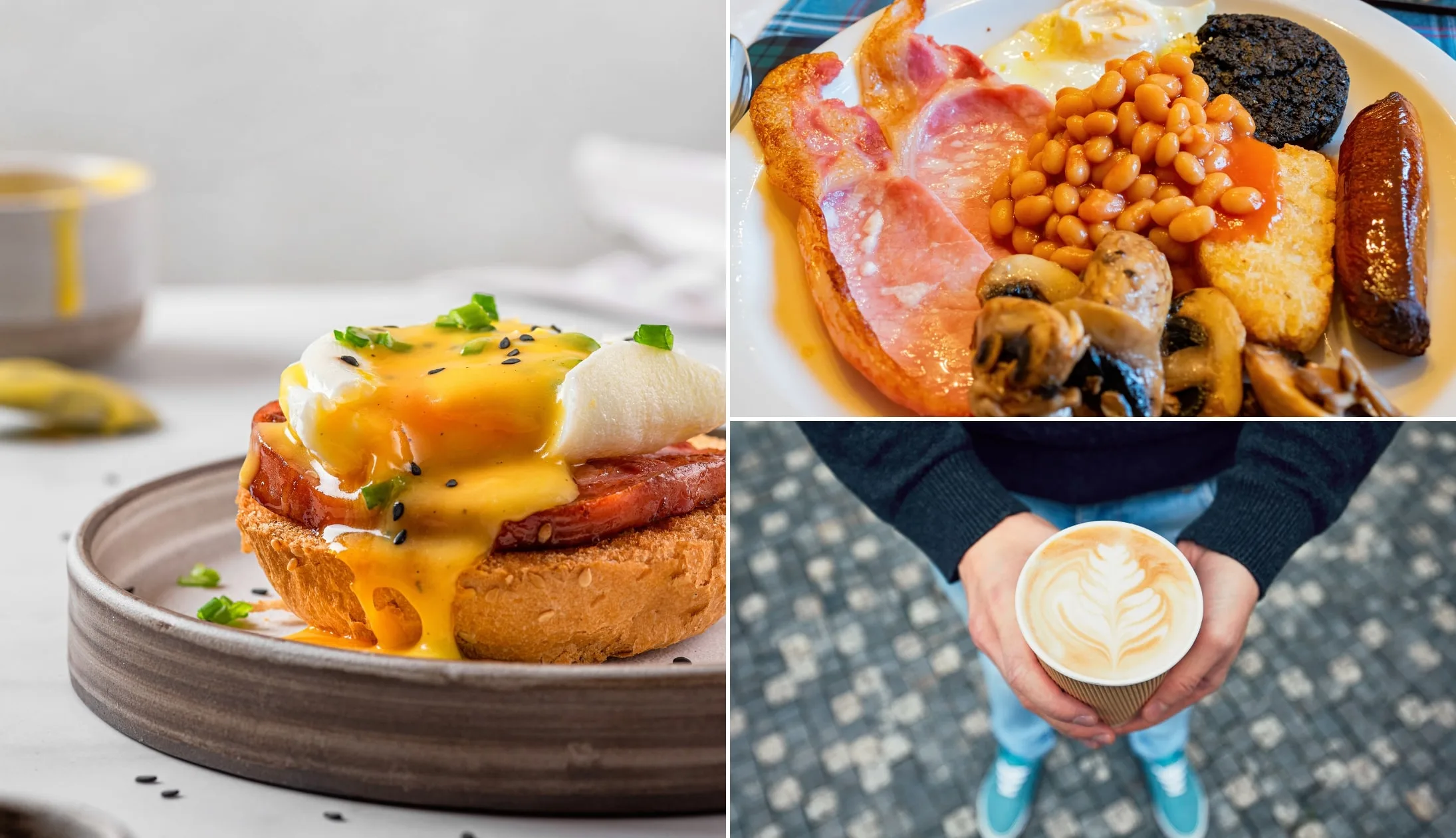
Photos via Shutterstock
It’s probably around lunchtime now, so grab a bite to eat somewhere in the city. We suggest checking out The Granary or McLeary’s Restaurant.
The Granary is a charming quay-side cafe offering homemade light bites such as quiches, salads, and sandwiches. McLeary’s Restaurant (not to be confused with McLeary’s Cafe, although this is another lovely spot a 15-minute walk from the Viking Triangle) is a good choice if you’re looking for a late lunch. They open at 1pm, offering Irish dishes like slow-roast lamb shank and fish and chips.
Stop 5: Waterford Treasures: Medieval Museum

Photos courtesy Waterford Museum of Treasures via Failte Ireland
It’s time to visit another branch of the Waterford Treasures Museum, which is just a short walk from your previous stops. The Medieval Museum is the only purpose-built Medieval museum in the country, with a focus on the Medieval heritage of Waterford.
It’s an interesting museum with a great collection and some really good exhibits. Inside, you’ll find the oldest wine vault in Ireland, the only surviving full set of Medieval vestments in Europe, and the earliest gold ring brooch in Europe.
Stop 6: Waterford Treasures: The Bishop’s Palace
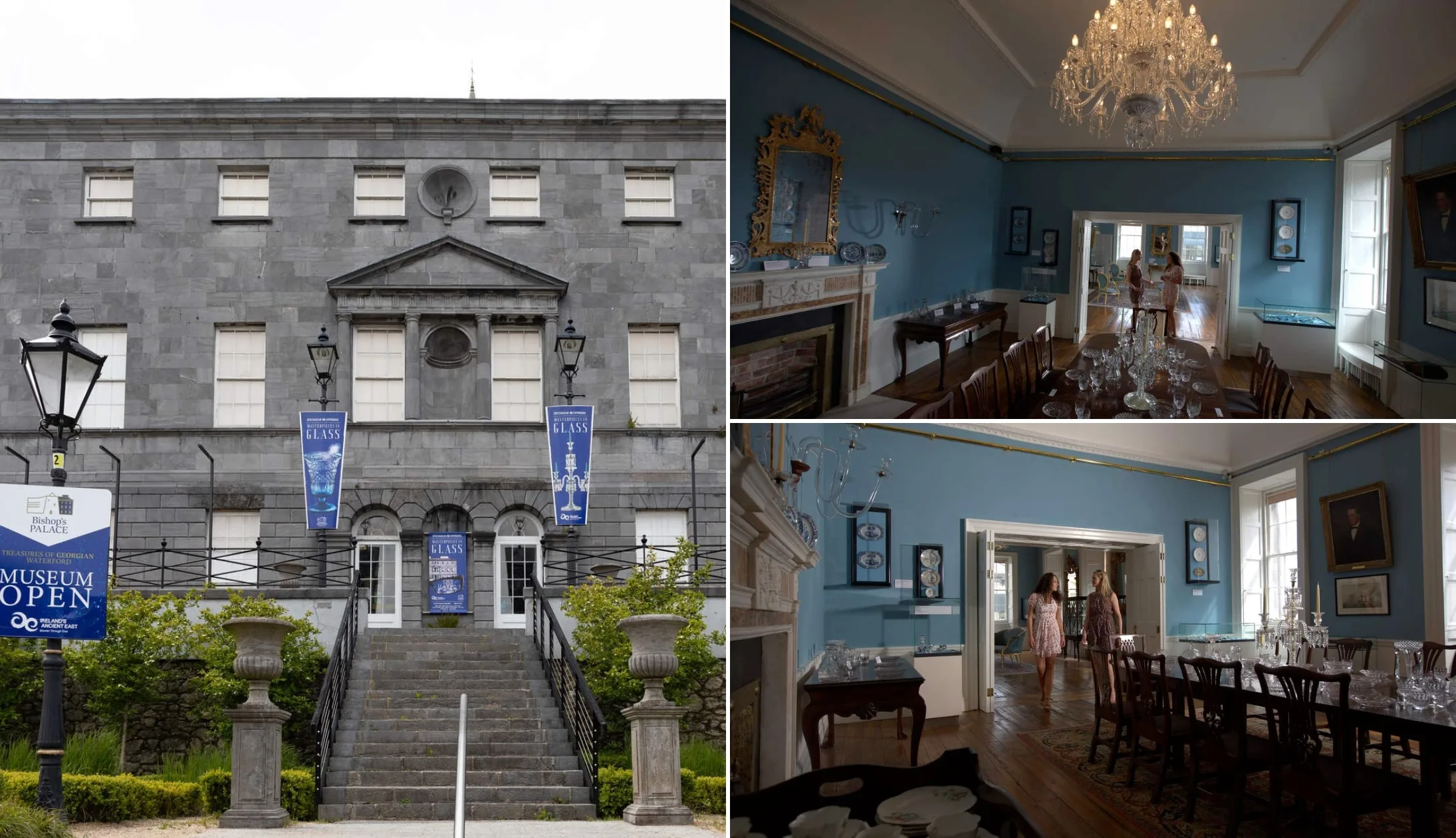
Photo left: Joseph Carr. Others: Keith Fitzgerald/George Munday
Your final sightseeing stop of the day is the final Waterford Treasures museum, The Bishop’s Palace. This museum is a short 3-minute walk from the Medieval Museum and well worth a visit.
It’s a cool museum set inside a magnificent 18th-century townhouse, with guided tours led by guides in historical costume! The historic home is decorated with period decor, showcasing 18th-century furniture, glass, art, and silverware. A highlight of the collection is the Penrose Decanter, the oldest piece of Waterford Crystal in the world, dating back to 1789.
Stop 7: Dinner, drinks and live music
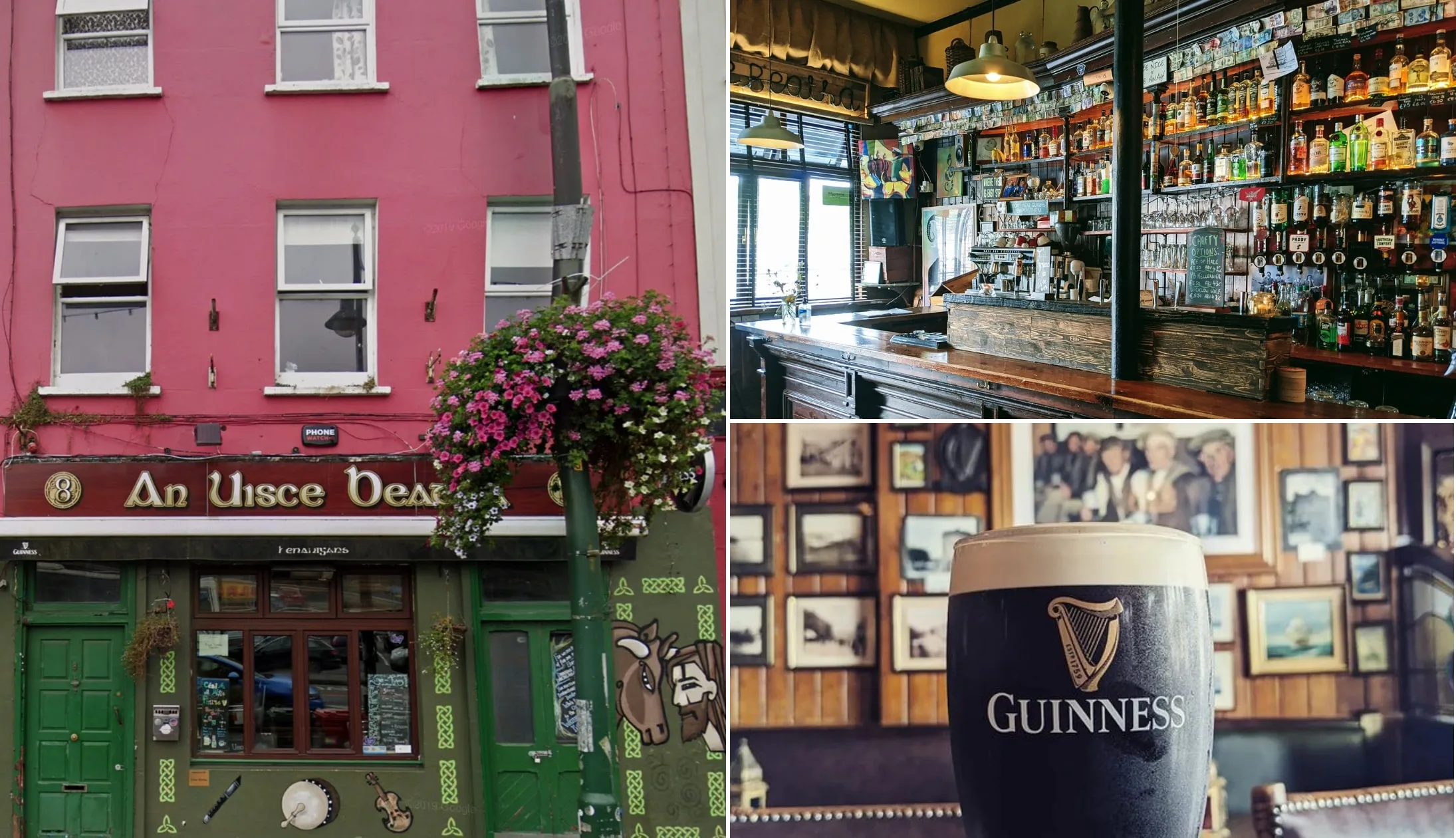
Photo left: Google Maps. Others via An Uisce Beatha on Fb
You’ve a fine evening of eating and sipping ahead of you in the ancient city of Waterford.
Here’s a couple of recommendations to get you going!
Our dinner recommendations
There’s a heap of great restaurants in Waterford. Head to Momo if you’re in the mood for an eclectic mix of international dishes, with things like Thai yellow curry and Masala cauliflower steak on the menu.
Bodega is a great choice if you’re after a casual dining experience, with some delicious Mediterranean-inspired dishes on offer.
Finally, if you’re after modern European cuisine, then we recommend enjoying dinner at Sheehan’s. You’ll find classics like burgers and steaks, as well as daily specials like chicken and chorizo pie.
Live music and trad bars
There’s some mighty pubs in Waterford. A couple of our favourites are J. & K. Walsh Victorian Spirit Grocer (a fully-preserved Victorian bar) and An Uisce Beatha (an old-school pub with a great selection of craft beers).
For live music, head to Katty Beary, Tullys Bar, and An Uisce Beatha (which we mentioned above).
Day 11: Back to Cork

Photos via Google Maps
All good things must come to an end, and today, you’re heading back to Cork to catch the flight home.
As there’s no direct bus/train to Cork Airport from Waterford, you’ll need to follow the two steps below:
Step 1: Get from Waterford to Cork City
The only way to get between Waterford and Cork is by bus (either Expressway or Dublin Coach). We’d recommend booking these tickets in advance and giving yourself plenty of time.
Step 2: Getting from Cork City to the airport
You’ll then either need to take the bus or a taxi. It’s around a 20-minute drive from the city to the airport.
And that’s a wrap on this road trip
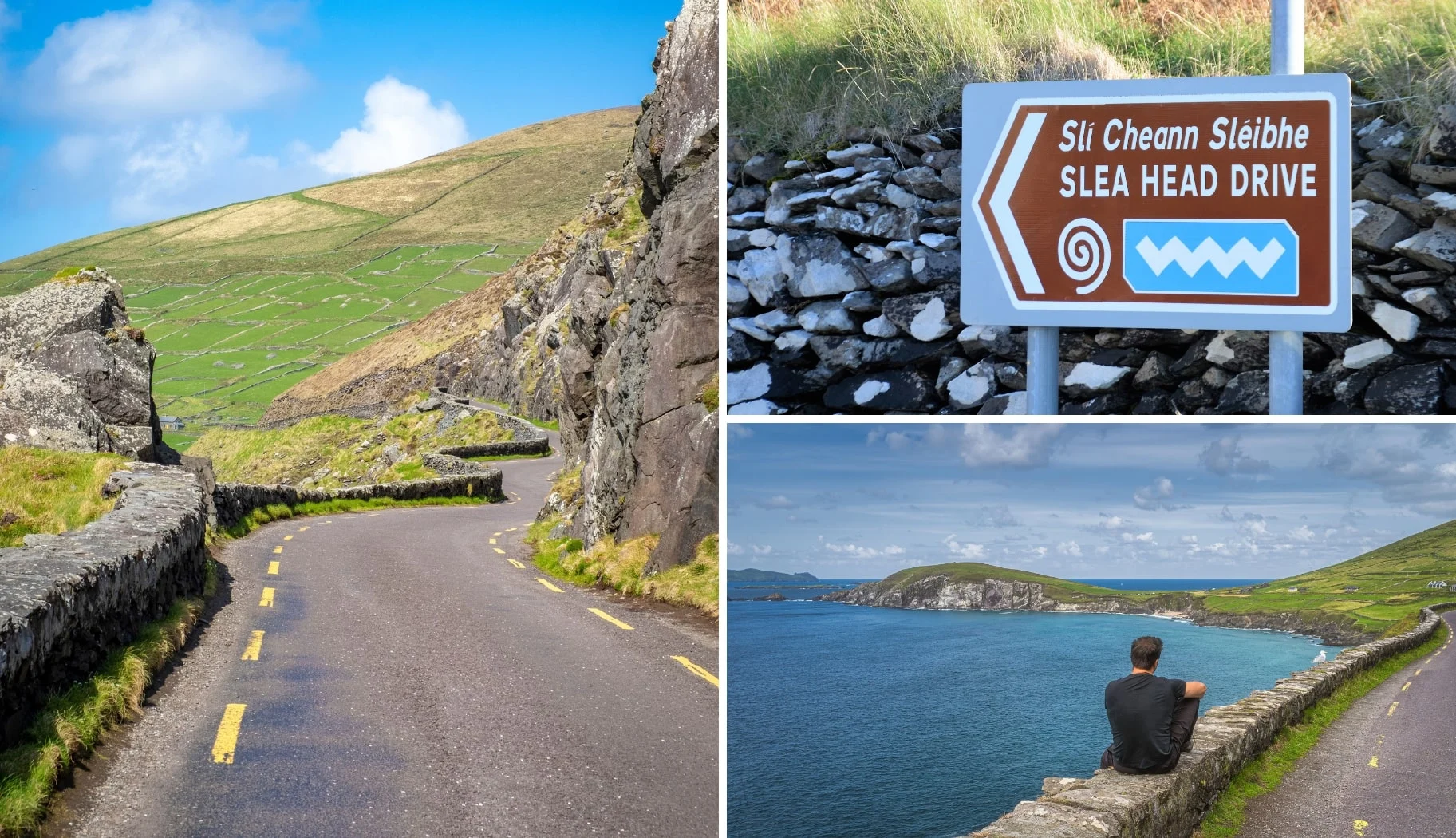
Photos via Shutterstock
We hope you found the above road trip guide useful. If you have any questions, ask in the comments below and we’ll do our best to help.
Or, if you’d like to browse our other Irish Road Trip itineraries, visit our Road Trip Hub – cheers!

